September 1, 2019
Martha O'Kennon
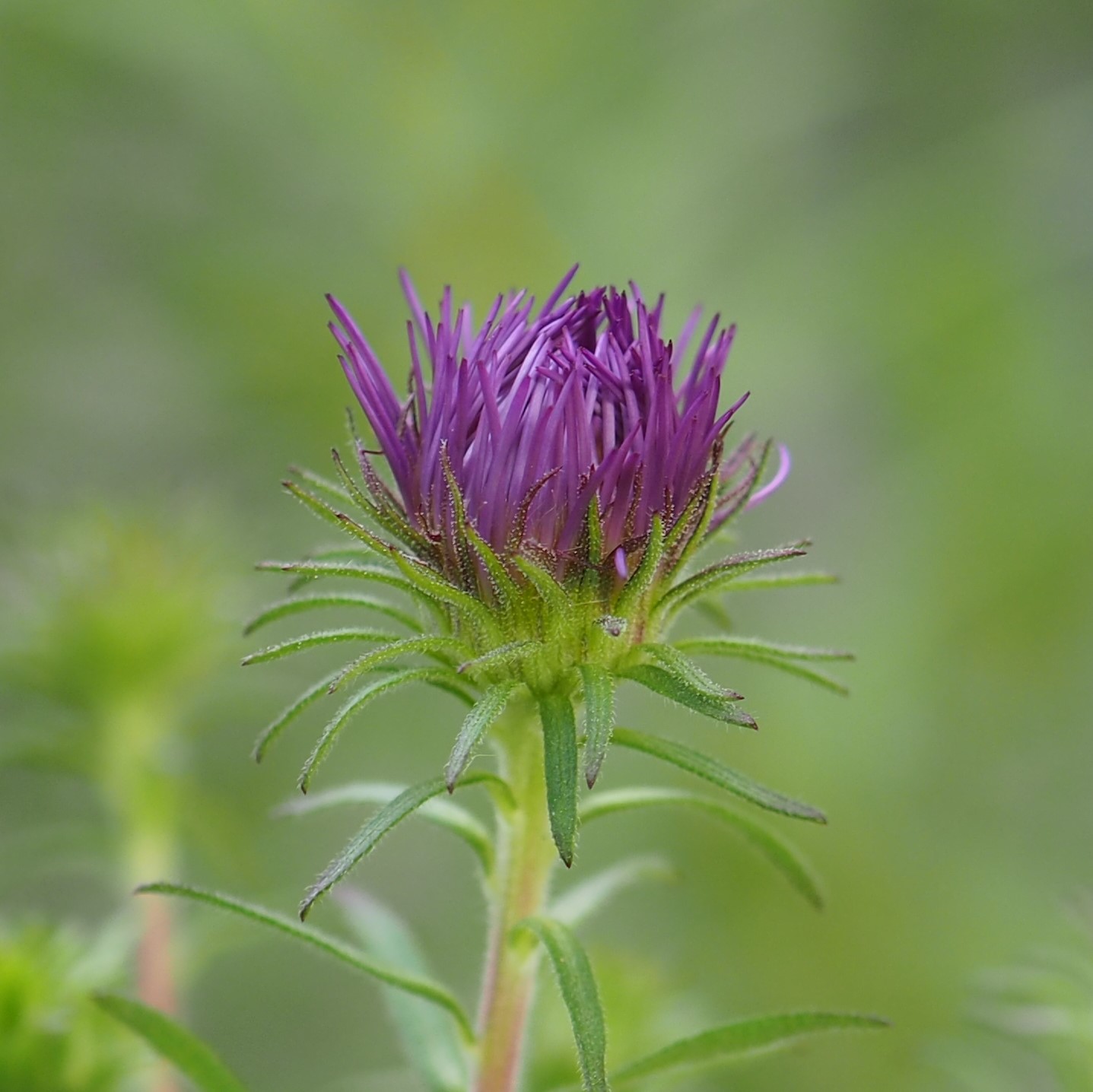
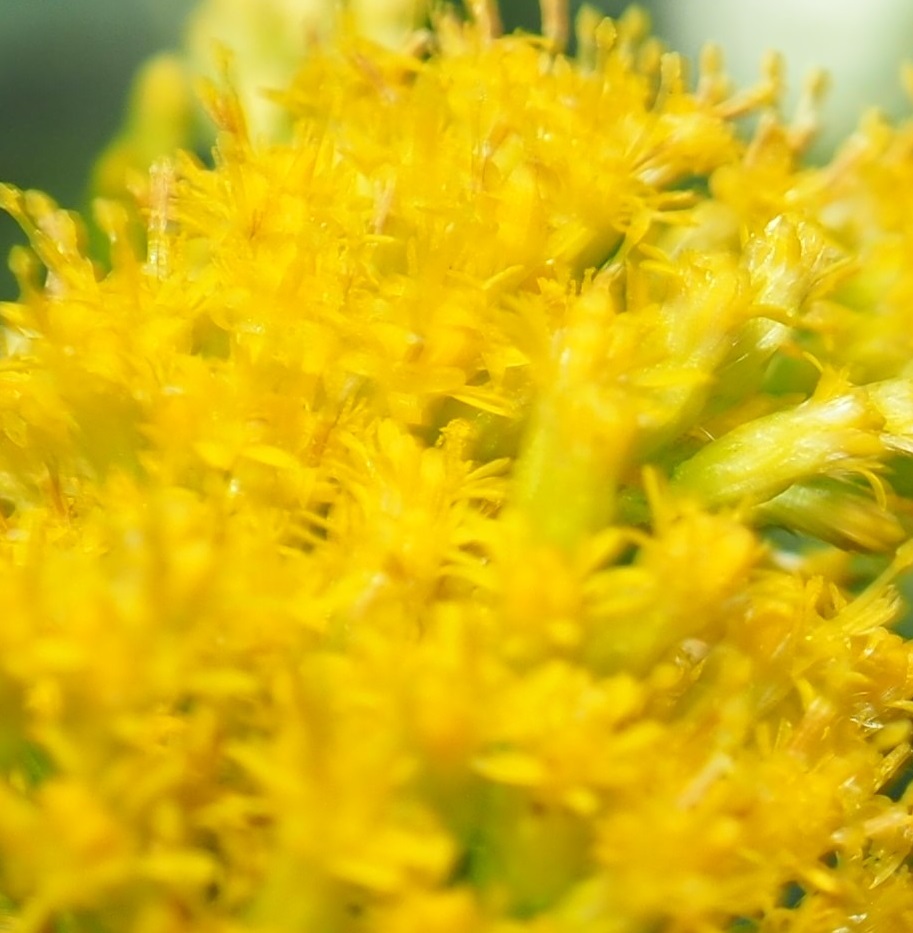

Oooooh, aaaaah, The weather is ever so much nicer. We've had a few rain showers and now every plant looks healthier. And we have had some firsts this week. Here is the First Aster to bloom after such a long wait. The goldenrod is in bloom - it really happened this week! Read on and see some of the multitude of creatures that have been waiting like me for this amazing golden yellow. Third is the Other First Aster, a gorgeous hot pink one.
Remember that there is information in the name of the file for each image. You can see it by mousing over the image - look at the lower left of the screen. Or you can click on the image to get to the (usually) larger image. Then the info is displayed in the address line above. Sometimes the second click will actually display a different view of the original image.
The ants were mostly more of the same. First here is one of the Carpenter Ants. Second seems to be a Small Honey Ant. Third is a Punctured Ant. You can spot the punctured ants by the texture of the skin and by the fact that the abdomen seems to droop. The ID app in iNat suggested genus Temnothorax for the fourth one. We have in the past had T. curvispinosus. Looks as if this might be a winged female.
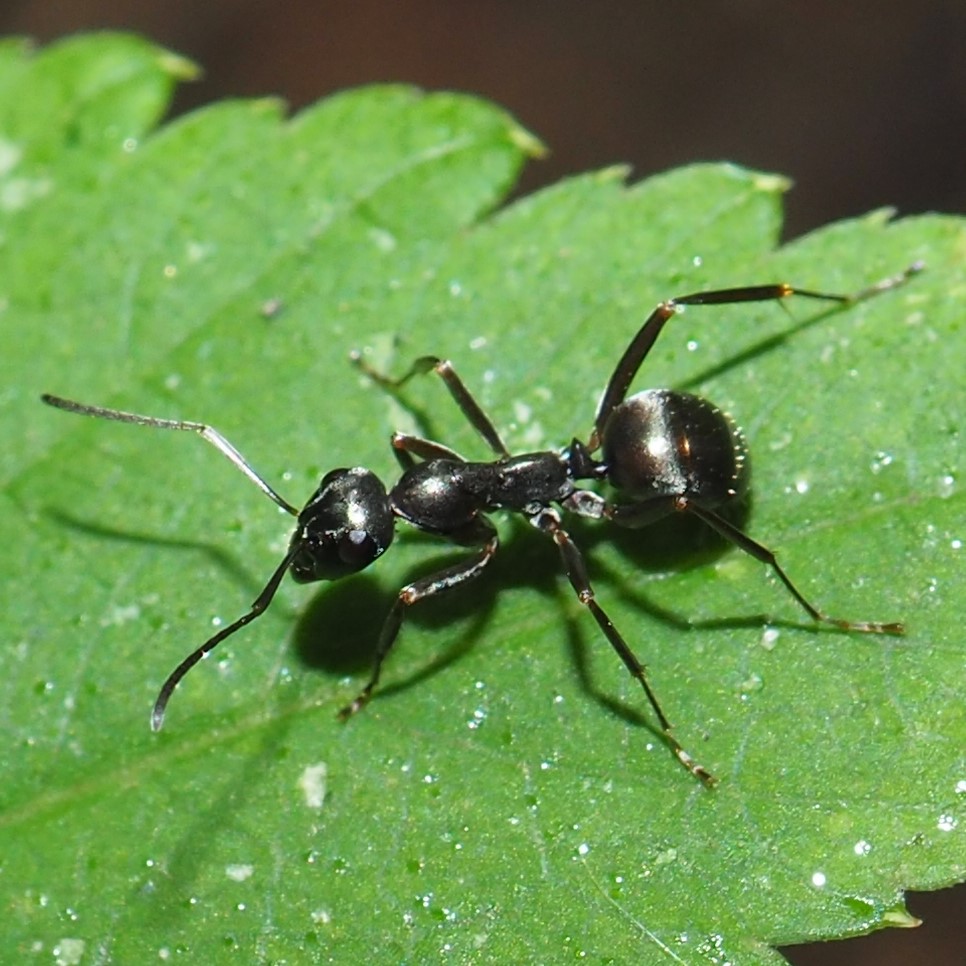
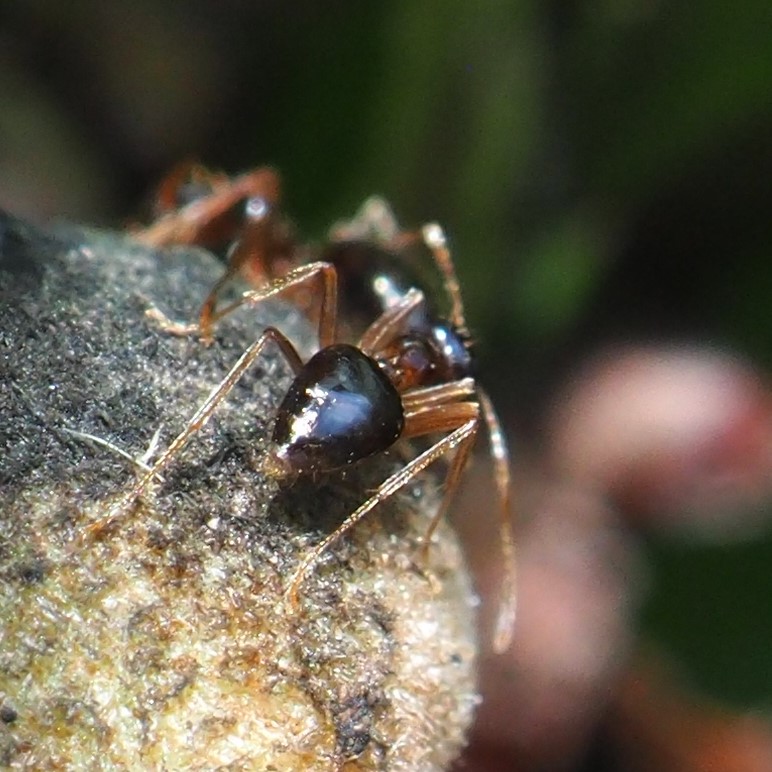
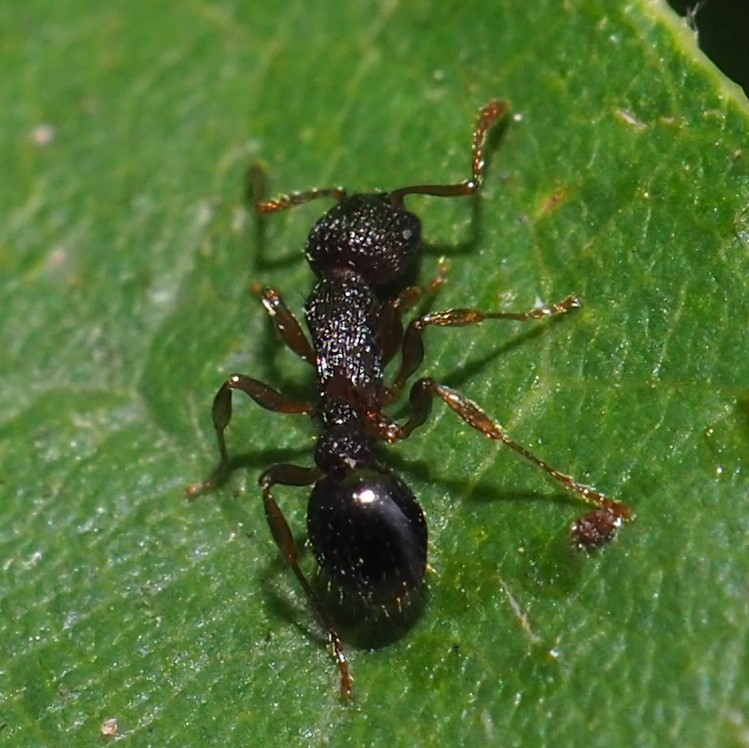
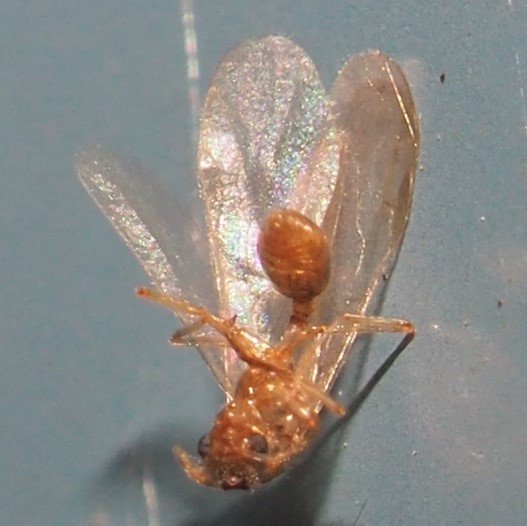
The Aphid in picture 1 was way down in a picture of something else and I didn't see it until I was cropping that shot. That's why you don't see the head of the aphid. We saw one Barklouse, our old friend Metylophorus novaescotiae. And a nymph of one mystery creature, this green fellow. I seem to remember that dot on the back of the one in picture 3. Oh, yes, it was the nymph of a Lygus Bug from last year, a bit farther along.
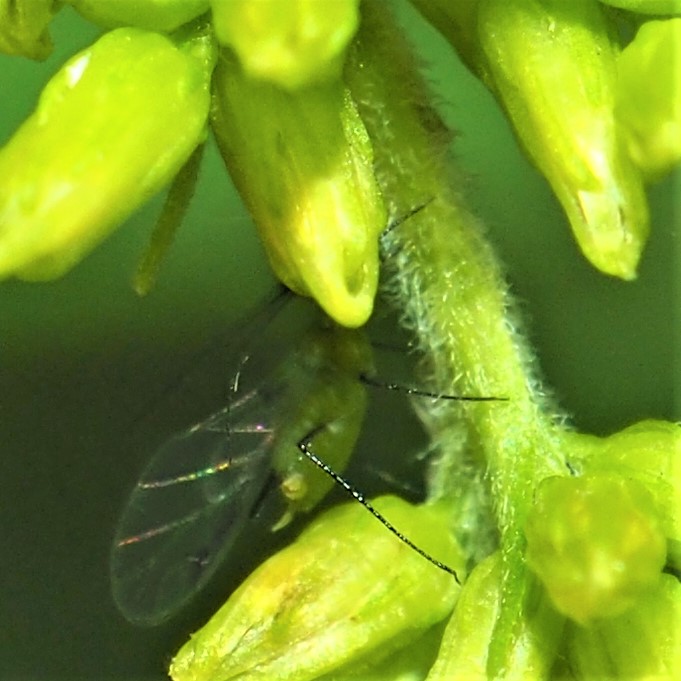
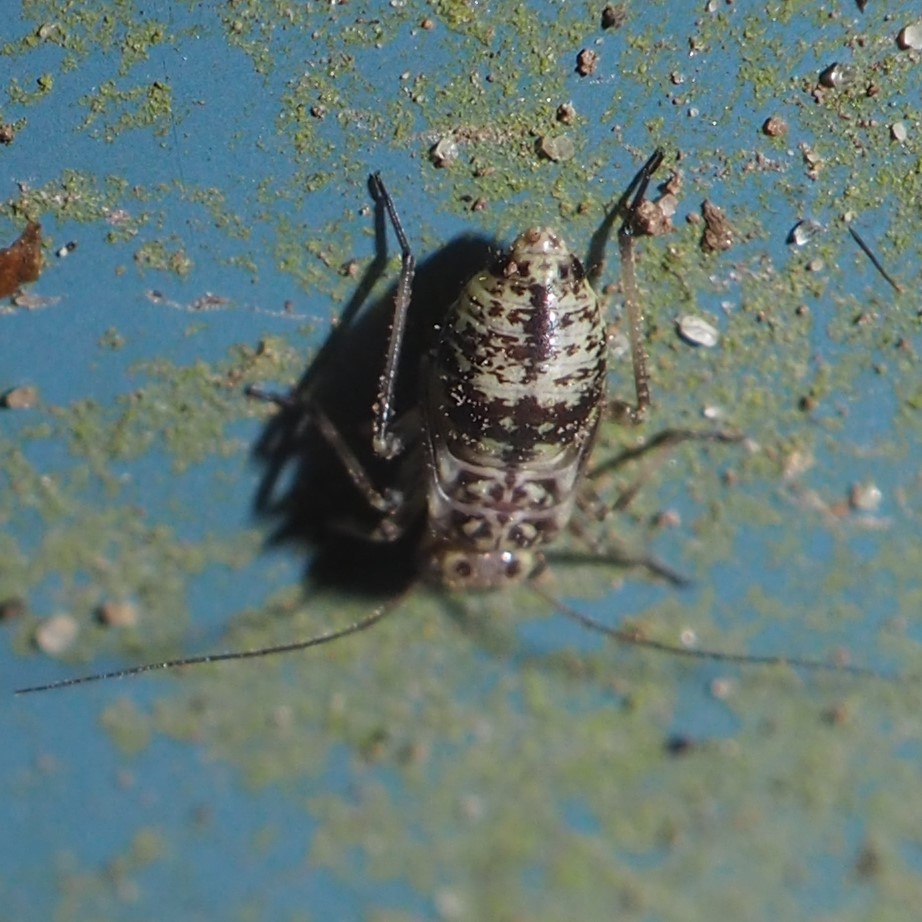

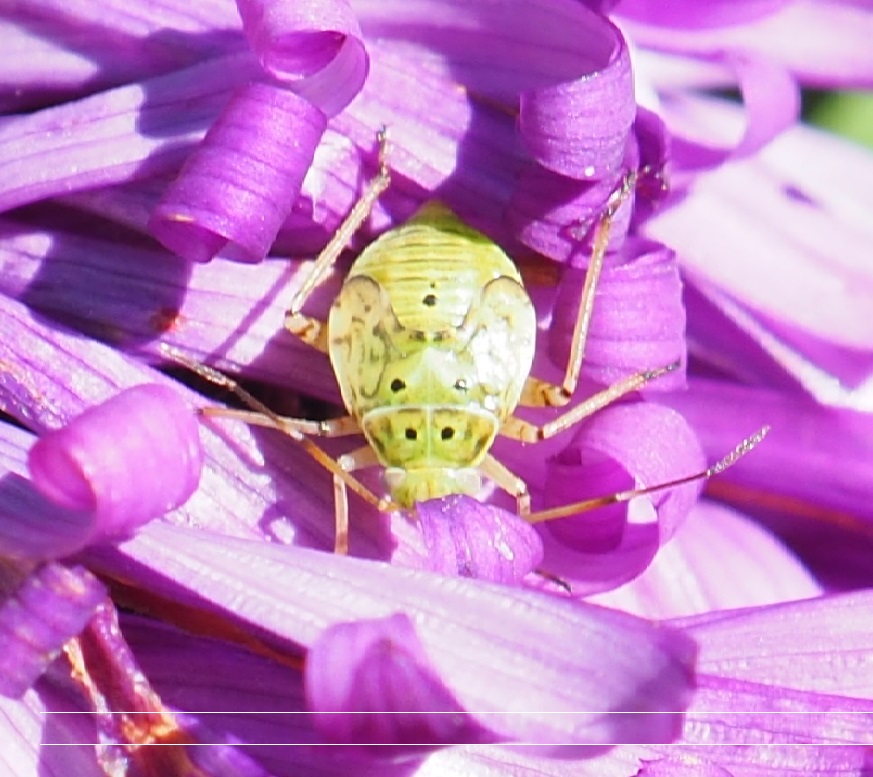
Here is a beautiful bee, partially ID'ed as a Leafcutter, Mortar, or Resin Bee (genus Megachile). The fourth is something else.
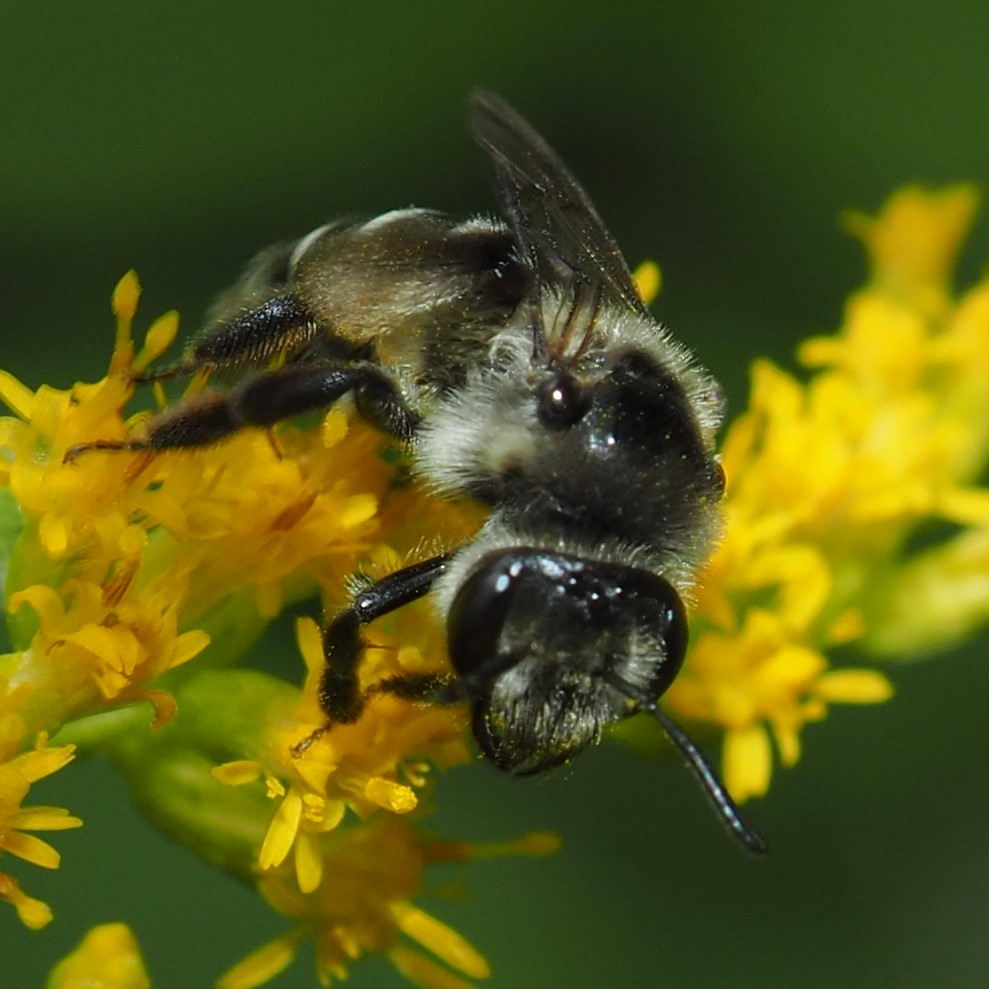
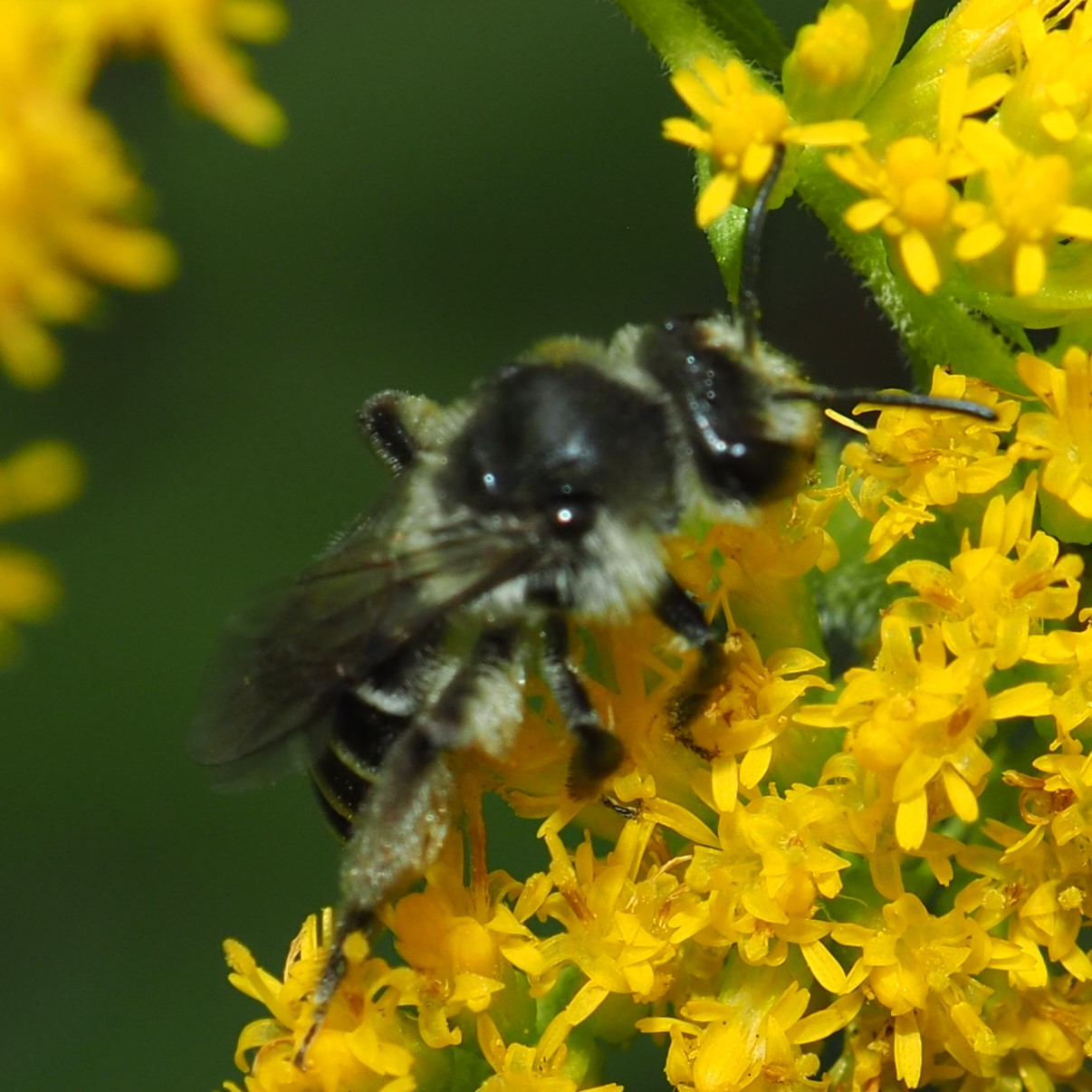
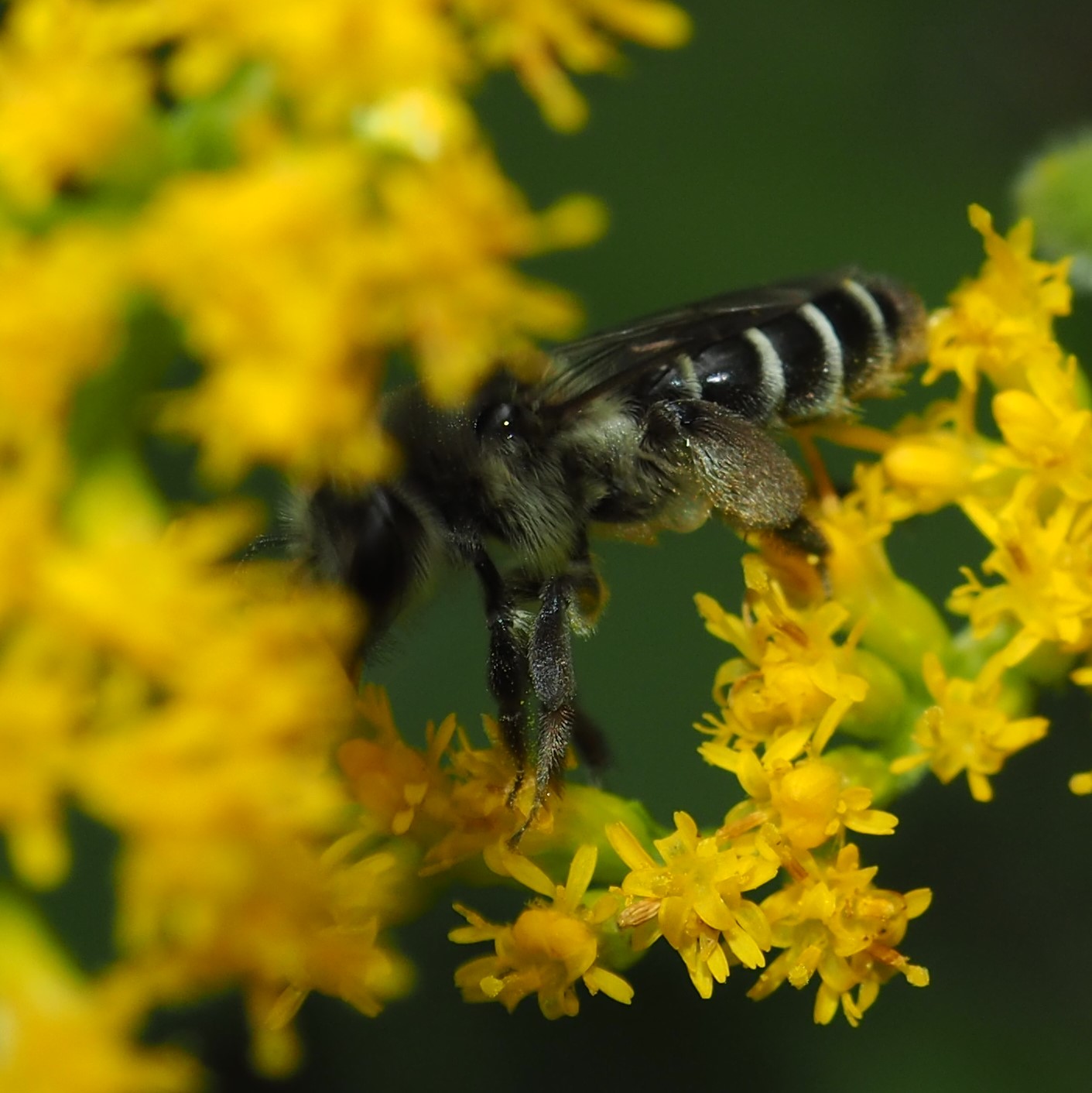
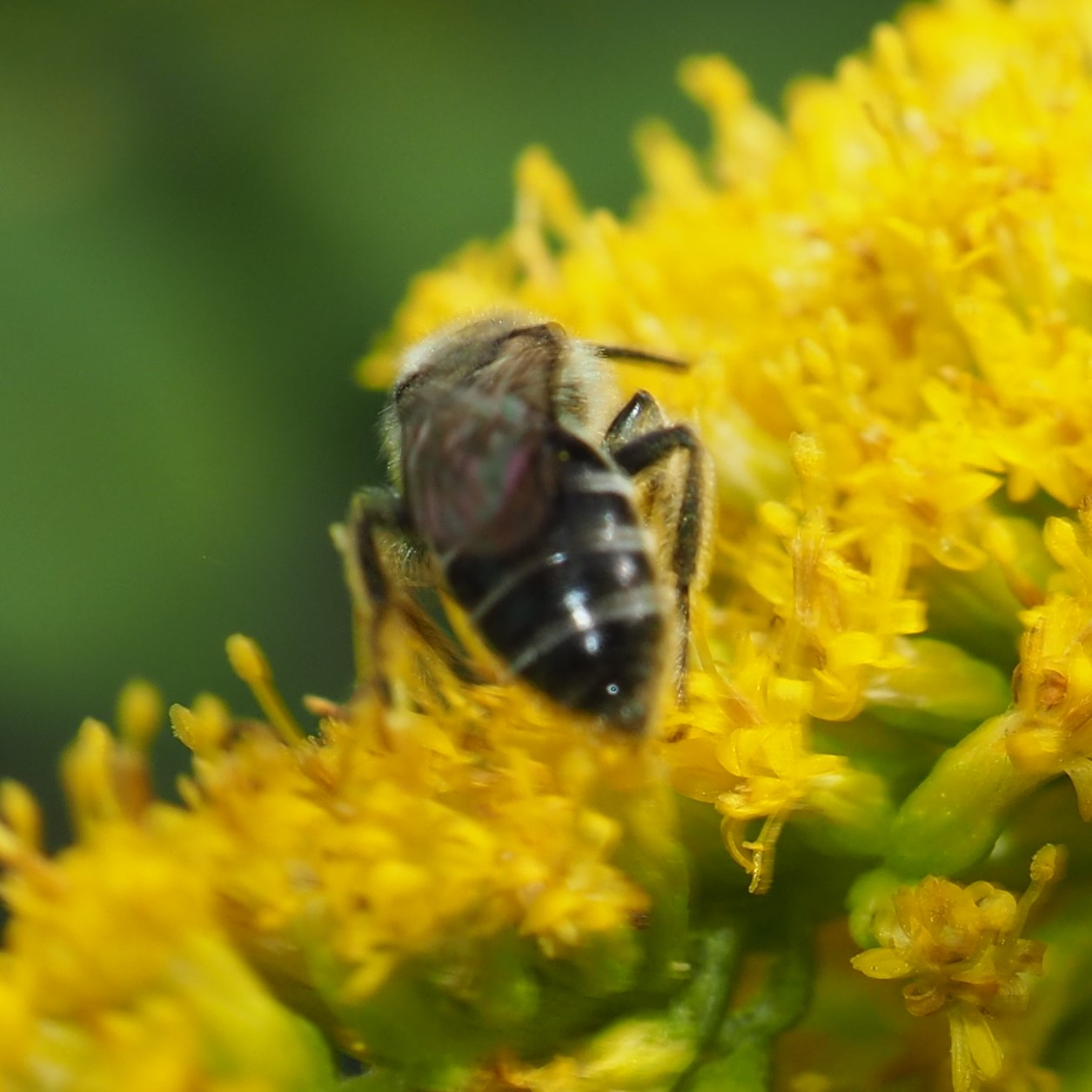
Another bee. A small bumble bee attracted by the goldenrod (pictures 1 and 2). And a large bee covered with whitish pollen.
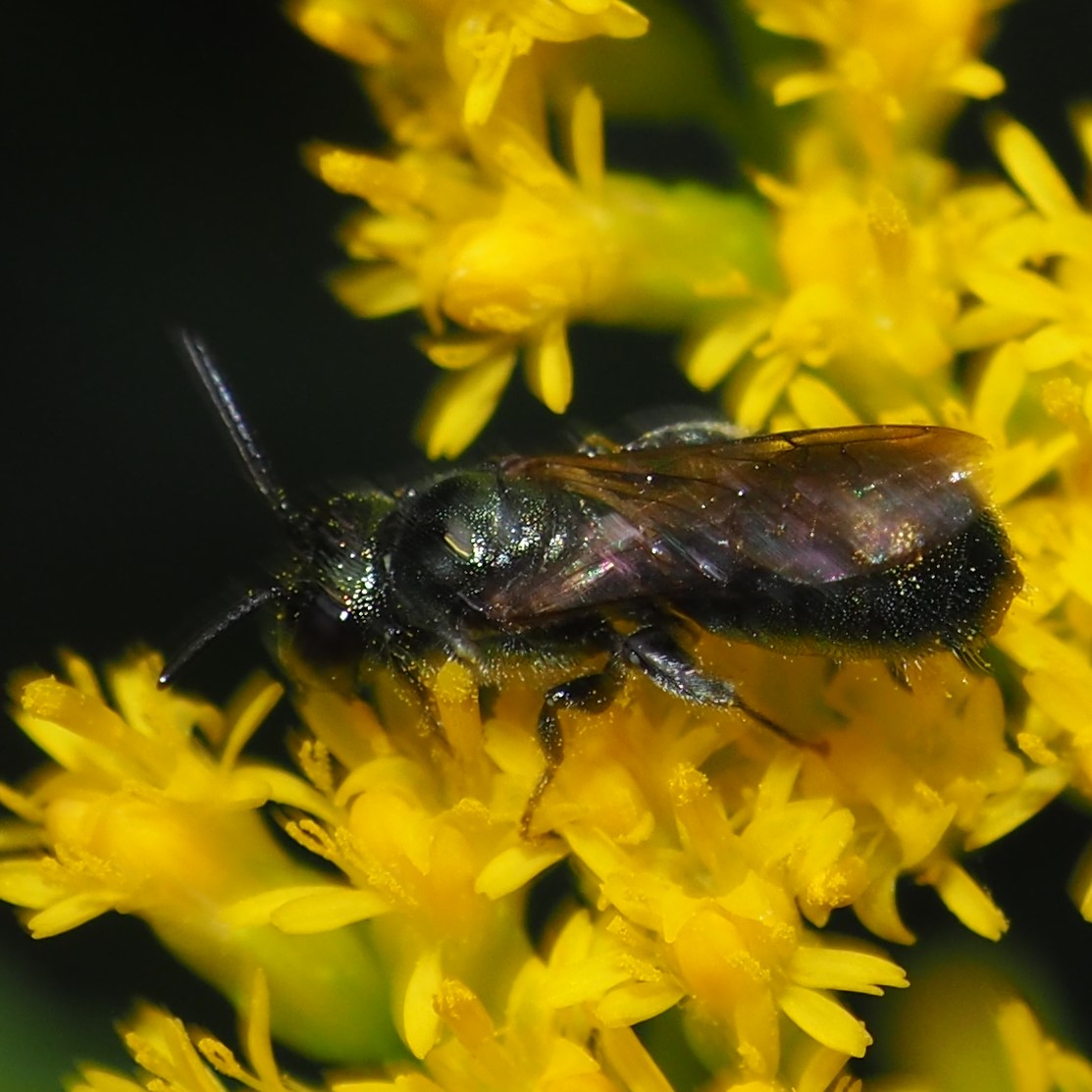

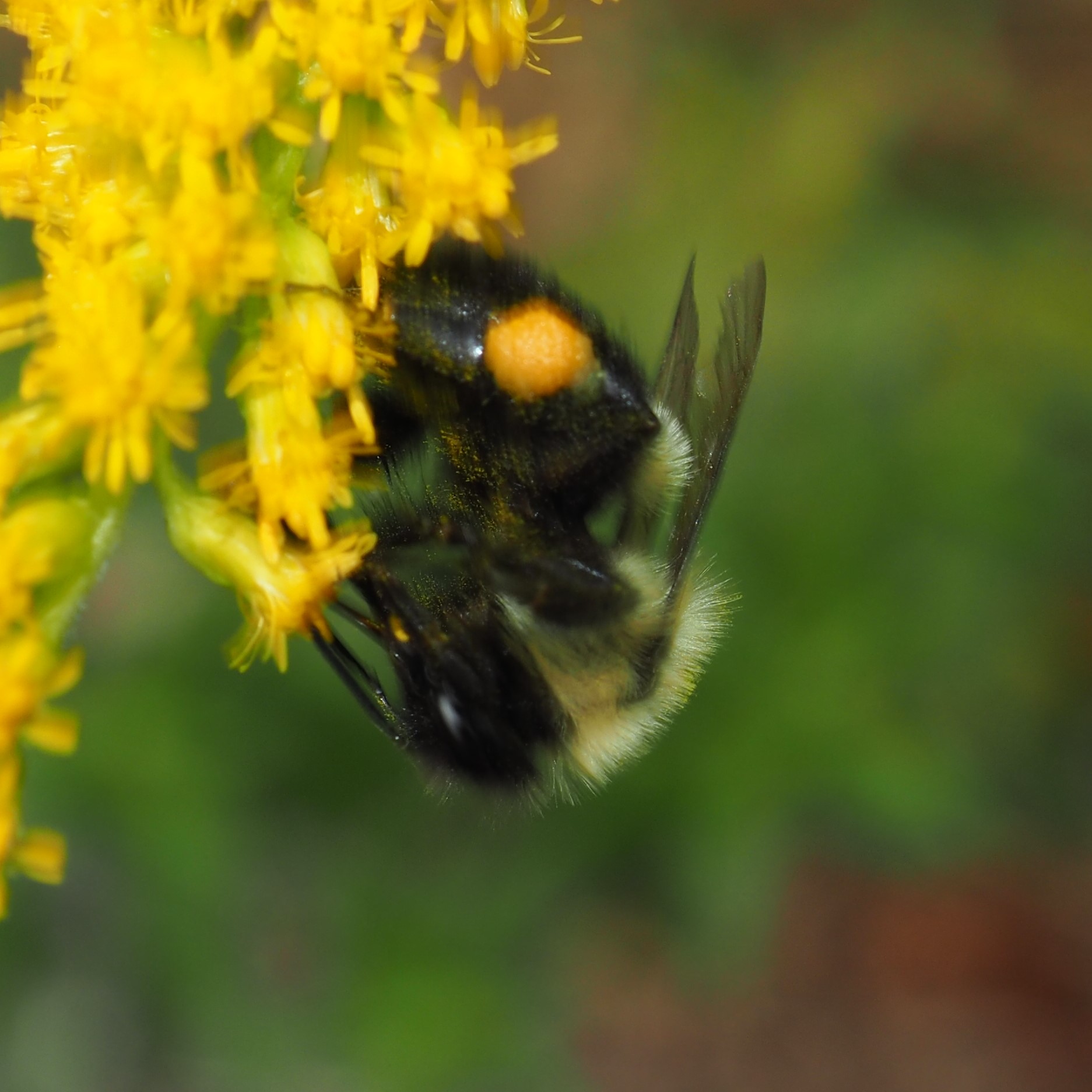
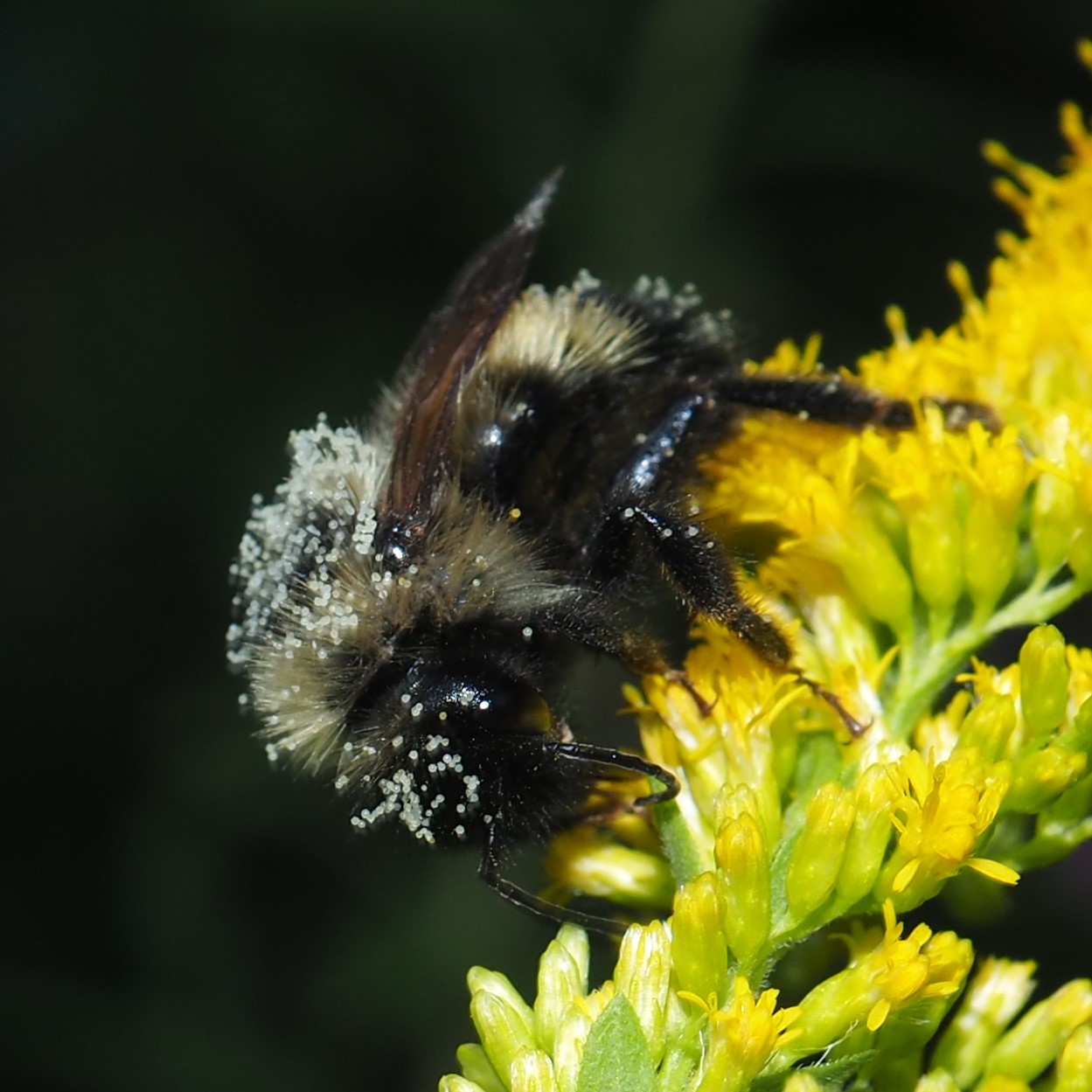
This first beetle looks like an olive-colored Flea Beetle. Second is an Asian Lady Beetle. Third and fourth are a Goldenrod Soldier Beetle. We had to wait till this week of the great start of Goldenrod Season to see this one!
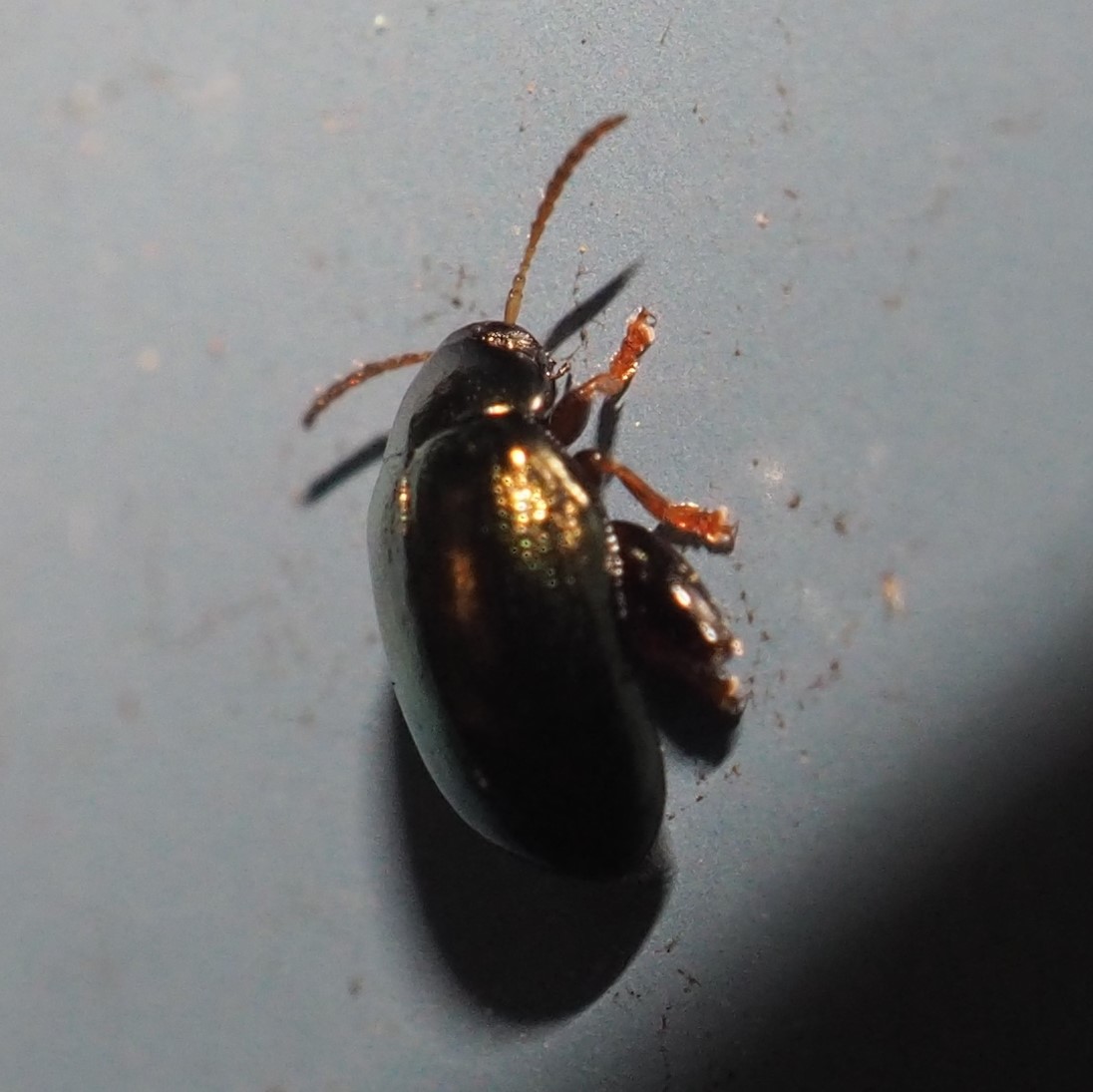
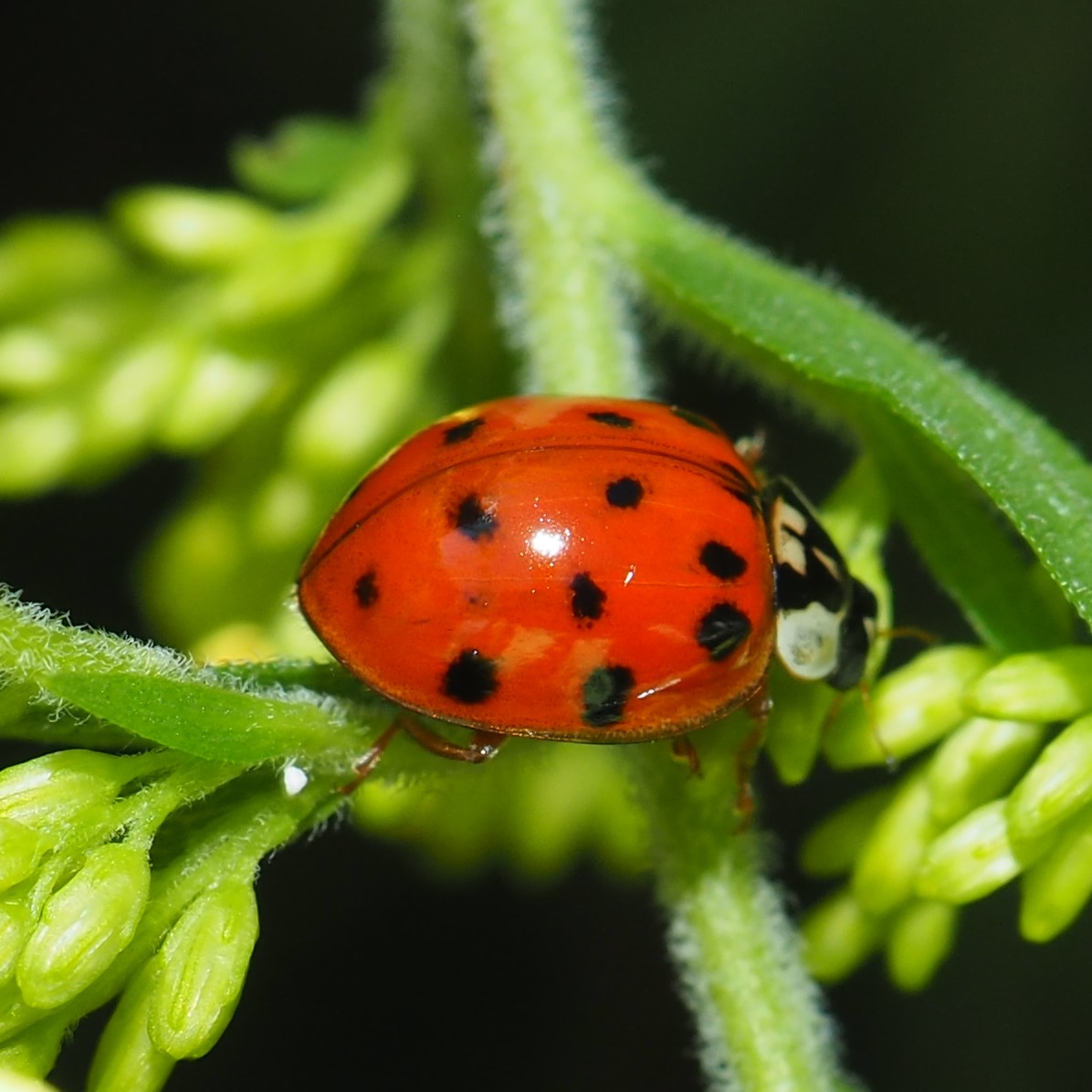
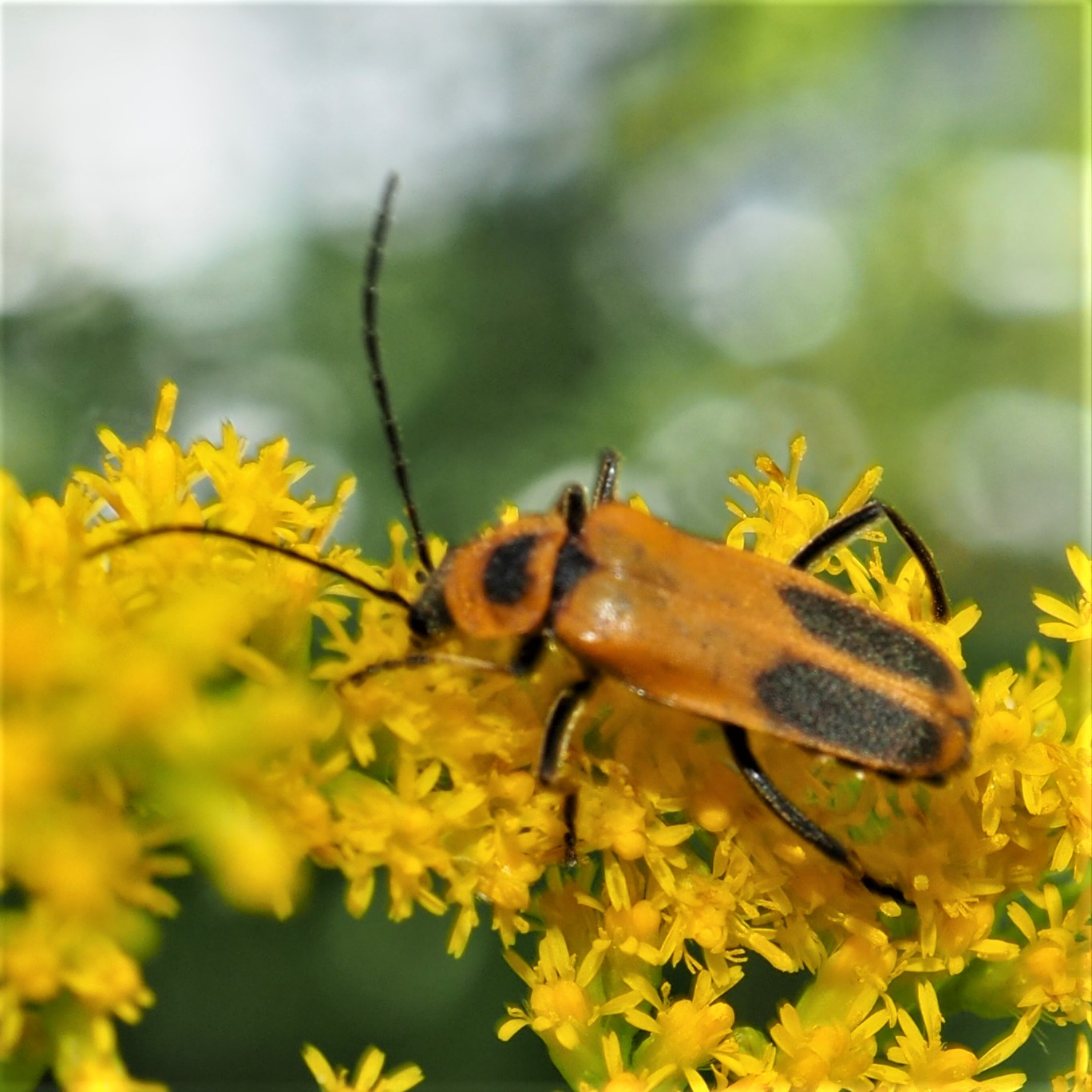
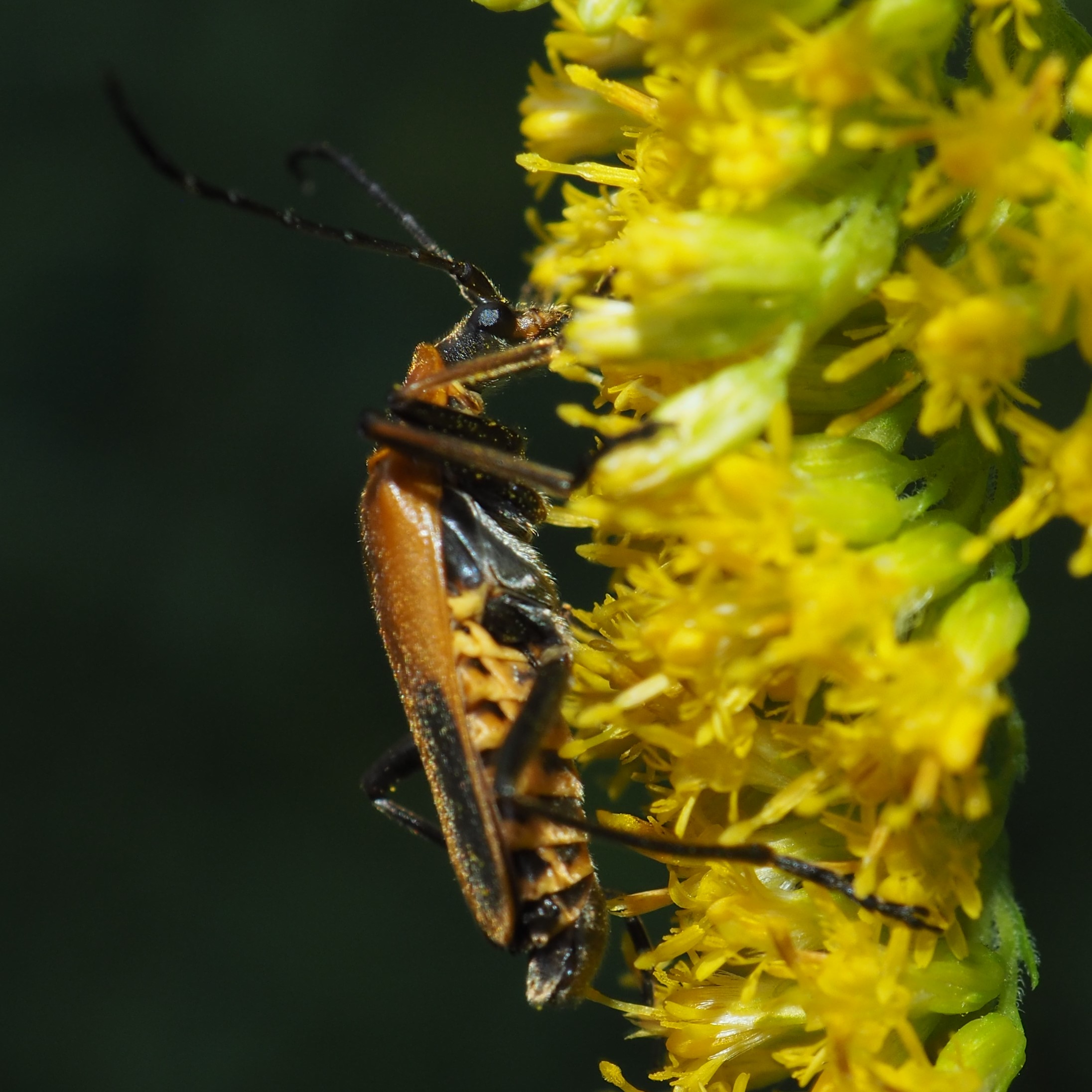
Another beetle we have to wait till Goldenrod Days to see. It's the Locust Borer Beetle, lovely in its black and yellow body and red legs. But this Broad-nosed Weevil we see fairly often.

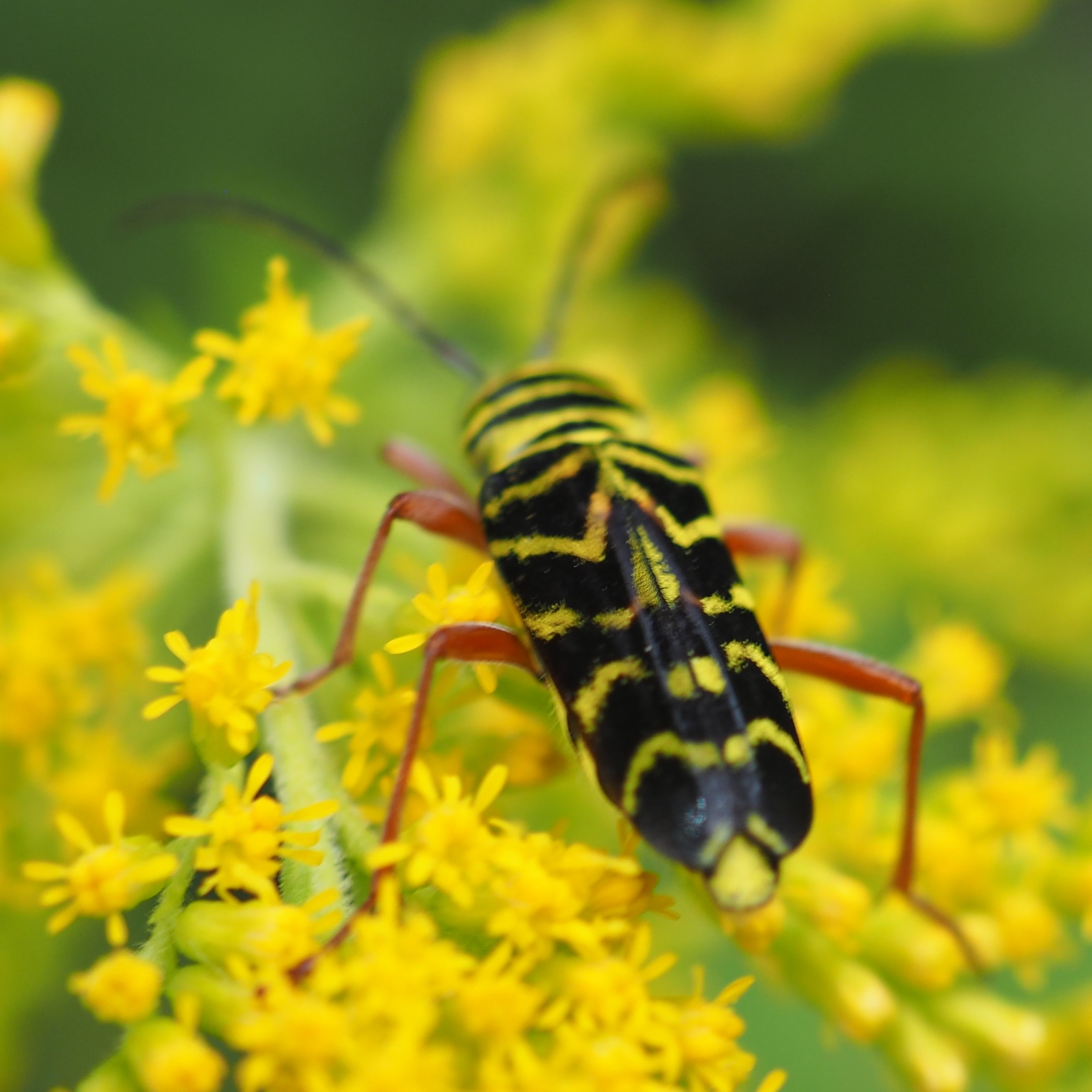
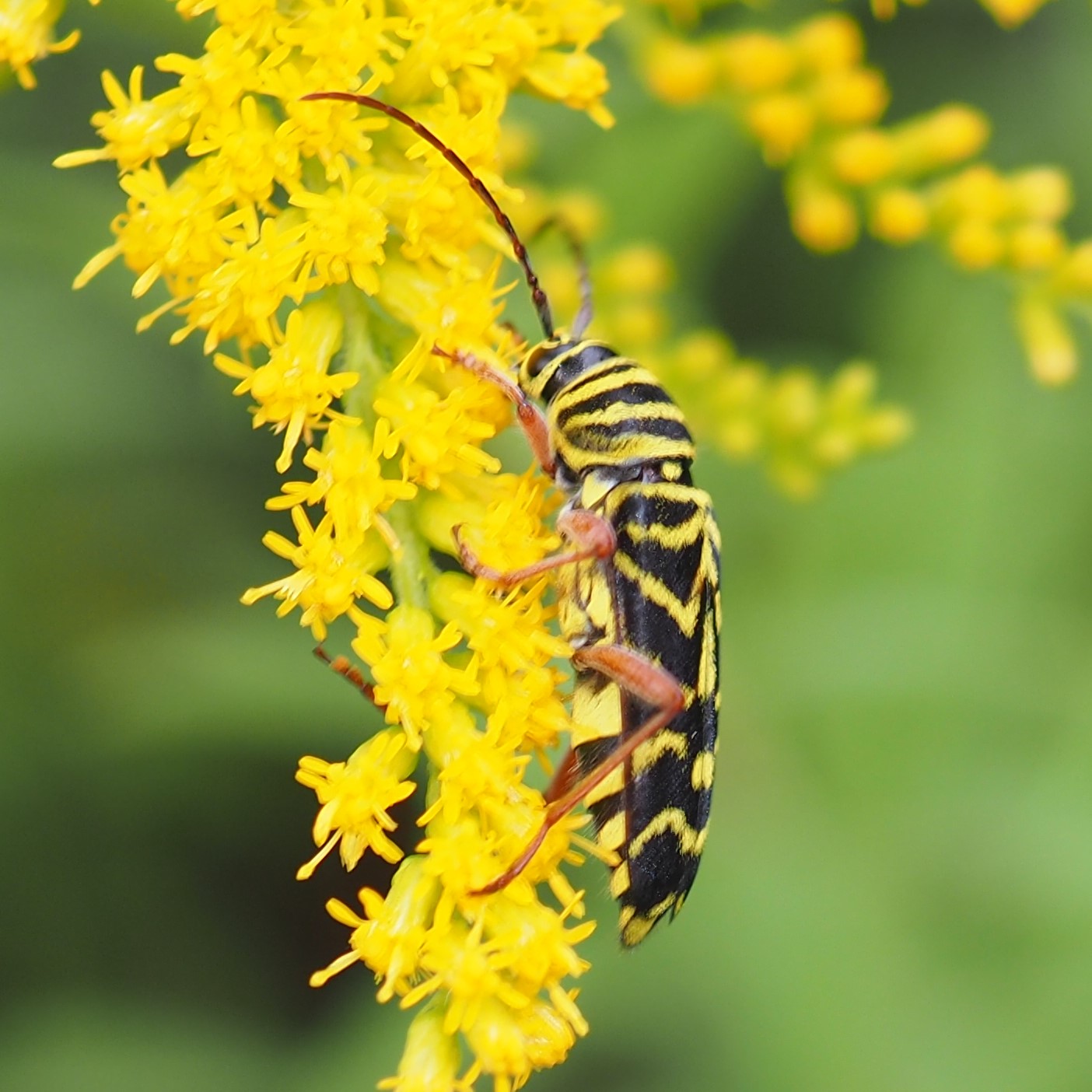
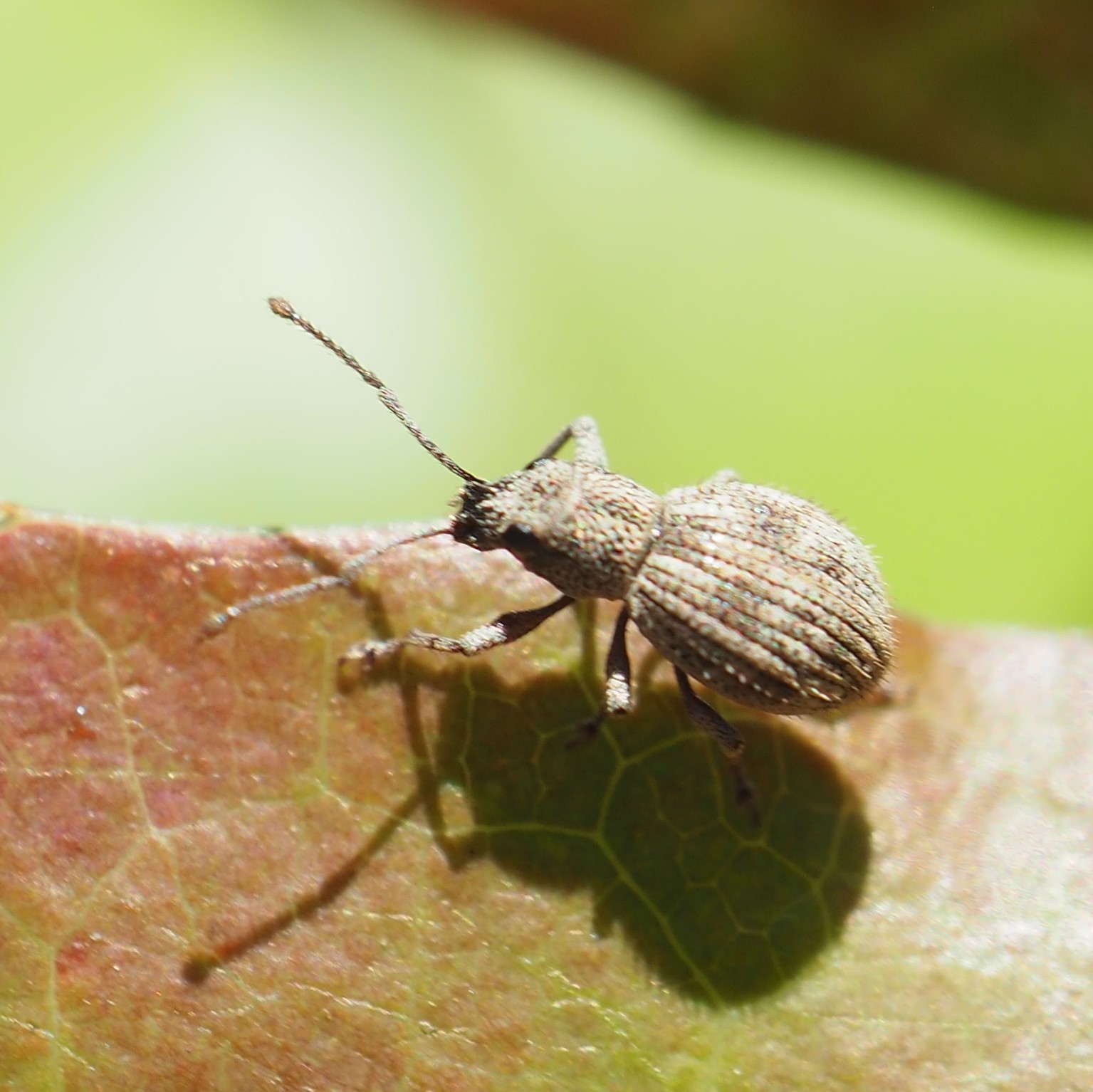
Onward to the Bugs! This week we bagged two species of Assassin Bug, genus Zelus. Here is our usual green one, Zelus luridus. And the only other Zelus in Michigan, the Four-spurred Assassin Bug, Zelus tetracanthus. Note: Z. luridus has red eyes, while Z. tetracanthus has brownish eyes. Now for the Leafhoppers: We had both variations on the Candy-Stripe Leafhopper: Red and Green and Red and Blue.
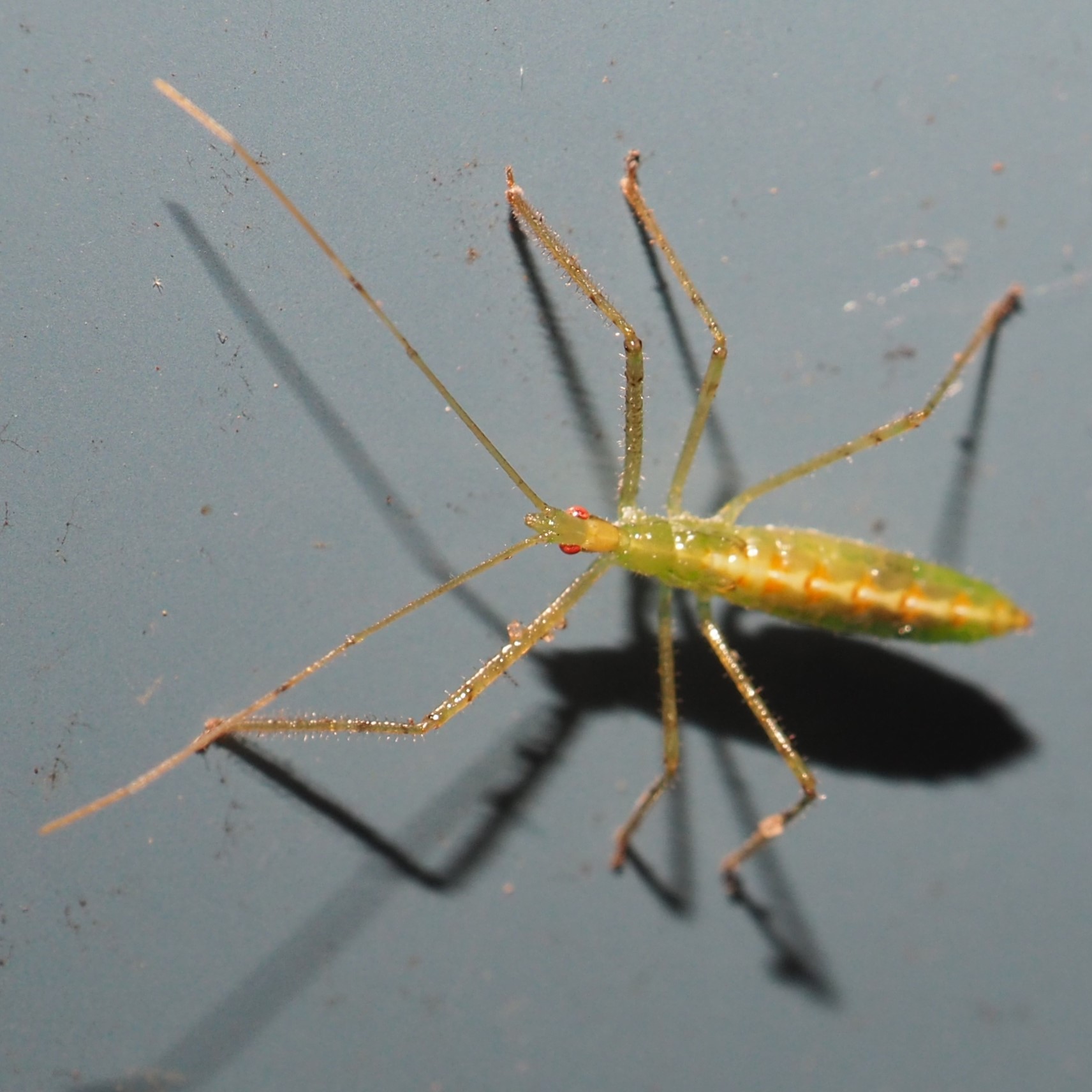
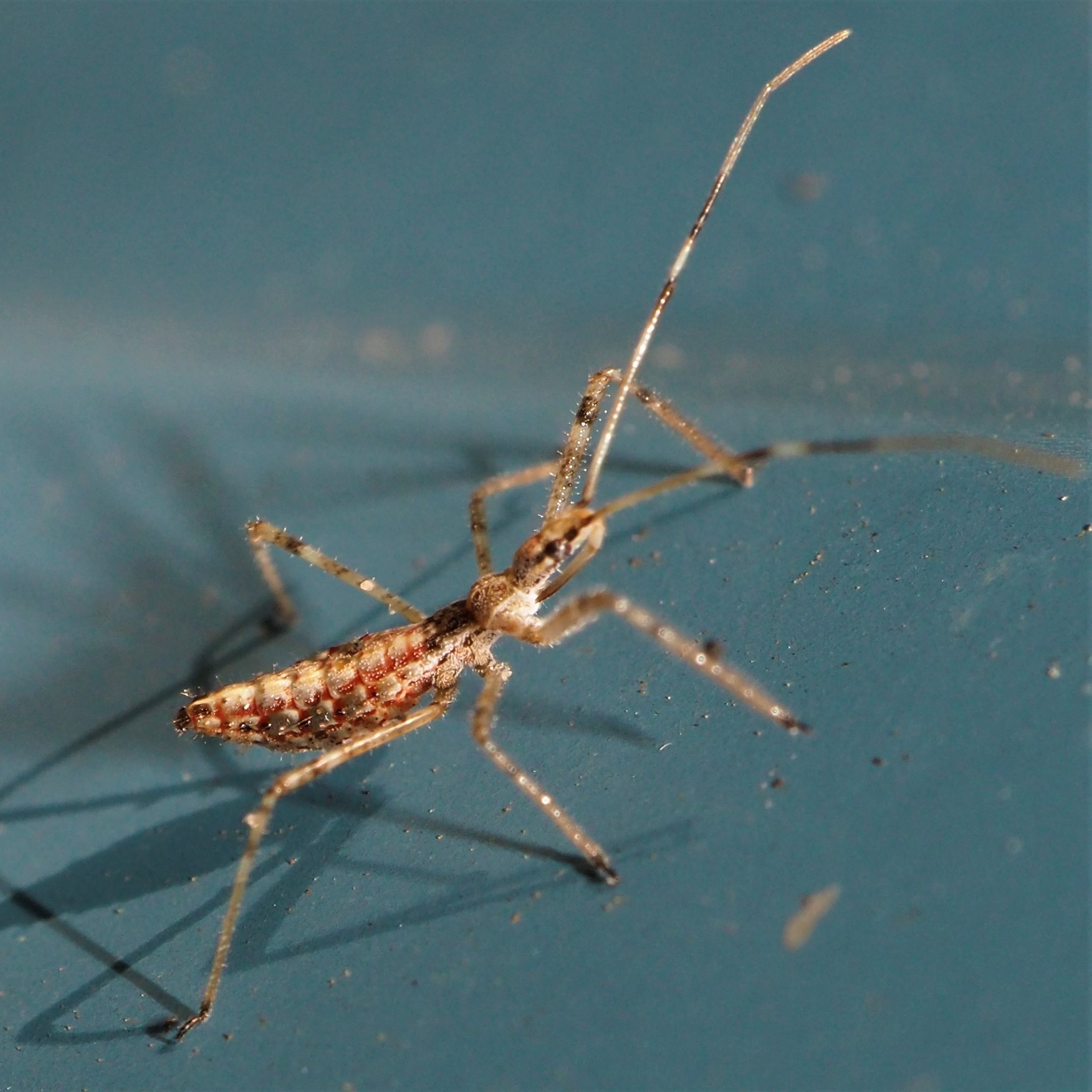
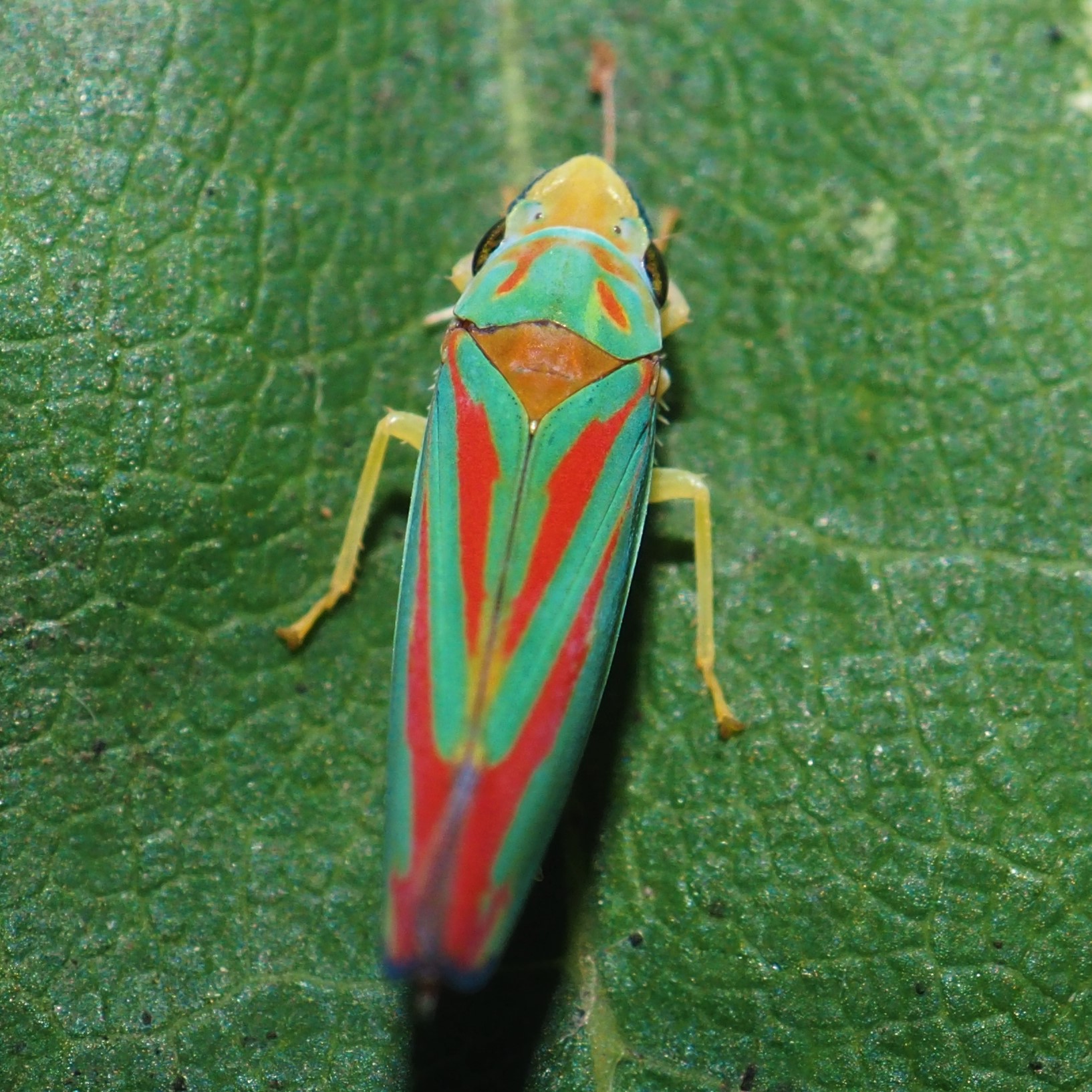
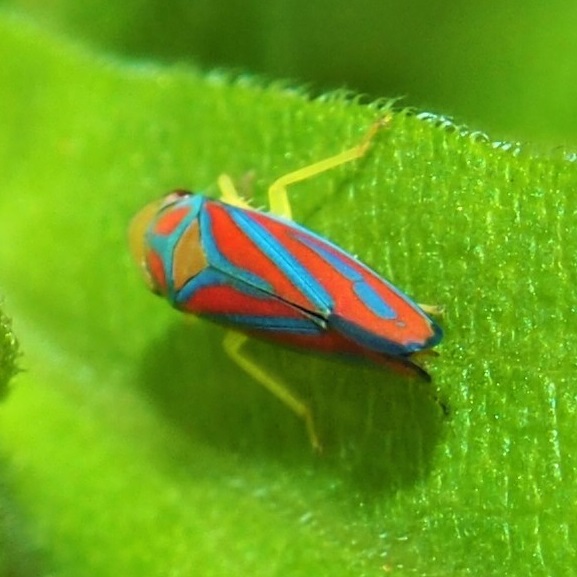
Here are two more leafhoppers that are very closely related: both in genus Eratoneura. Third is a relative of the leafhoppers - the Spittle Bugs, namely the Alder Spittlebug. Fourth is a Whitefly, which is not a fly though it is usually white. It branches off the Cicadas and Hoppers into the family of Parasitic Hemipterans (bugs). It is parasitic on plants, which you know if you have brought a nice plant in for the winter. While outside it seemed to be very hardy but inside less so and became quite susceptible to Whitefly and its cronies.
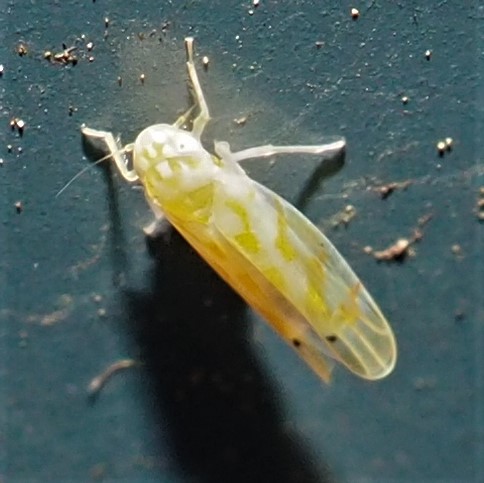

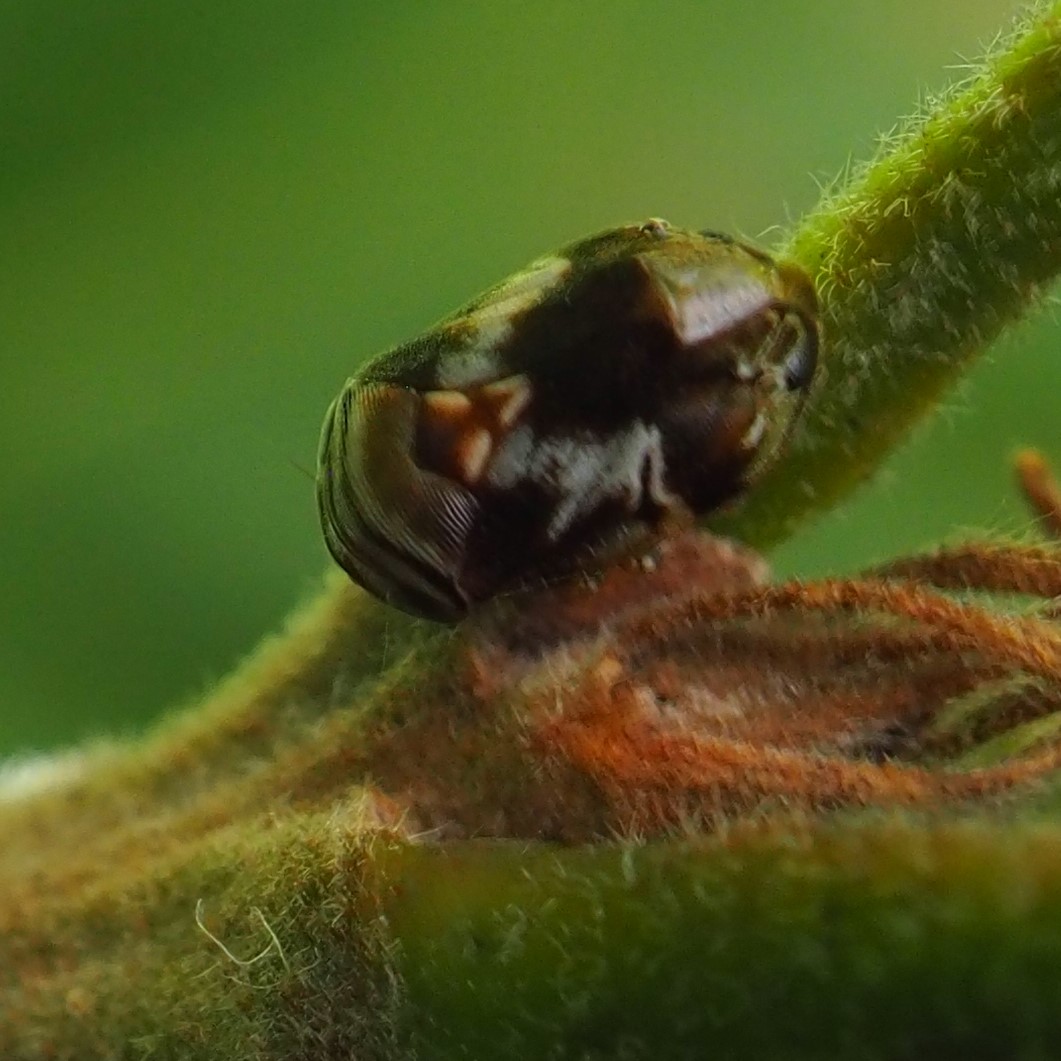
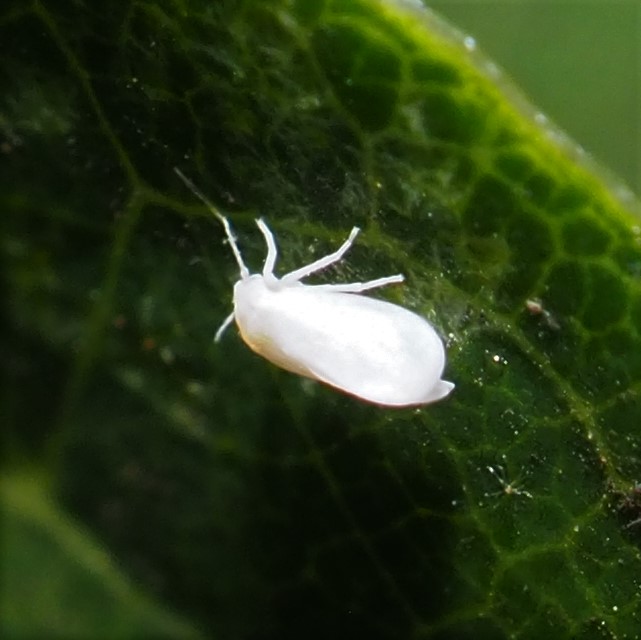
Speaking of the Hoppers, here is our favorite Two-Mark Treehopper on one of the redbud saplings. Back down to earth, here is a Lygus Tarnished Plant Bug on that good old Goldenrod.
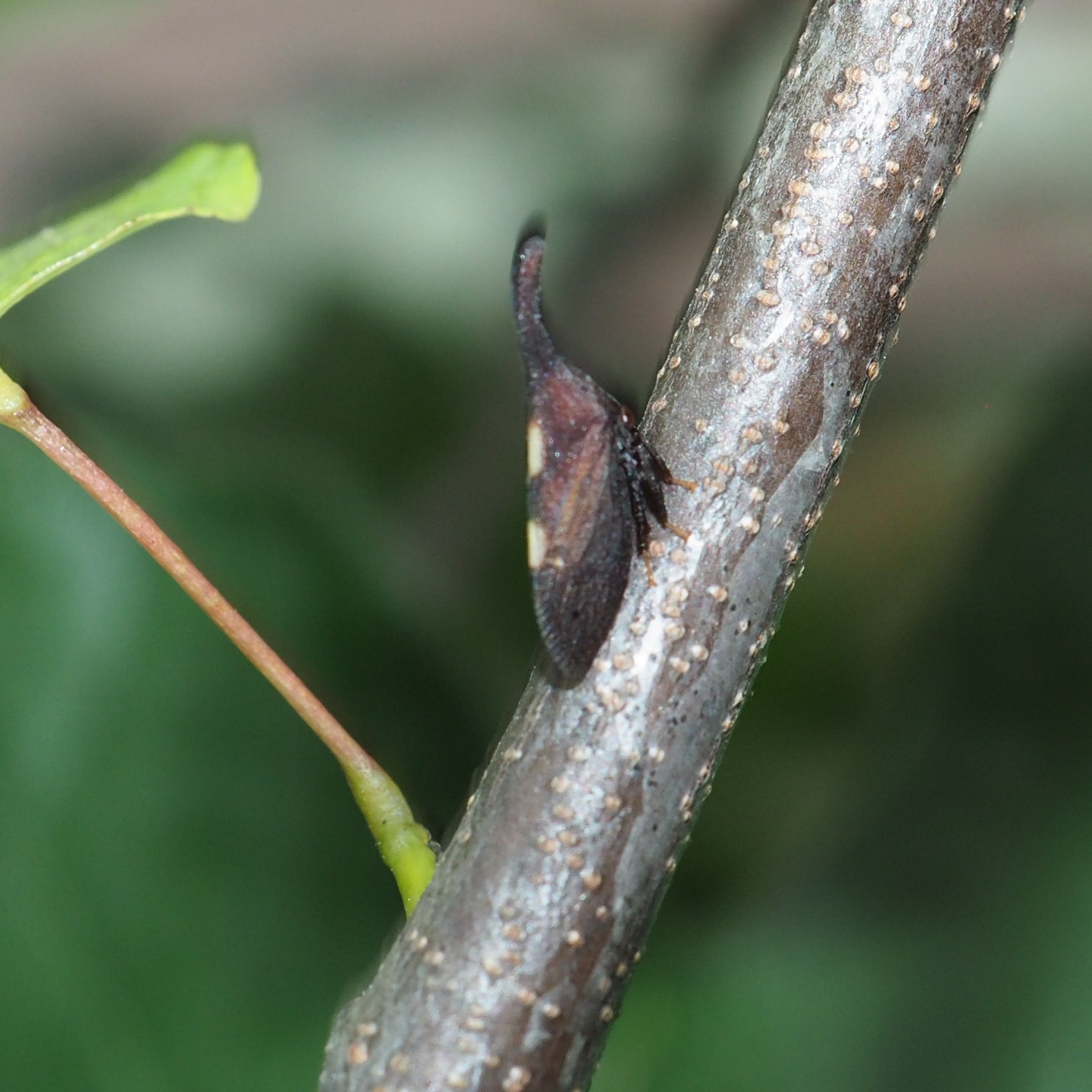
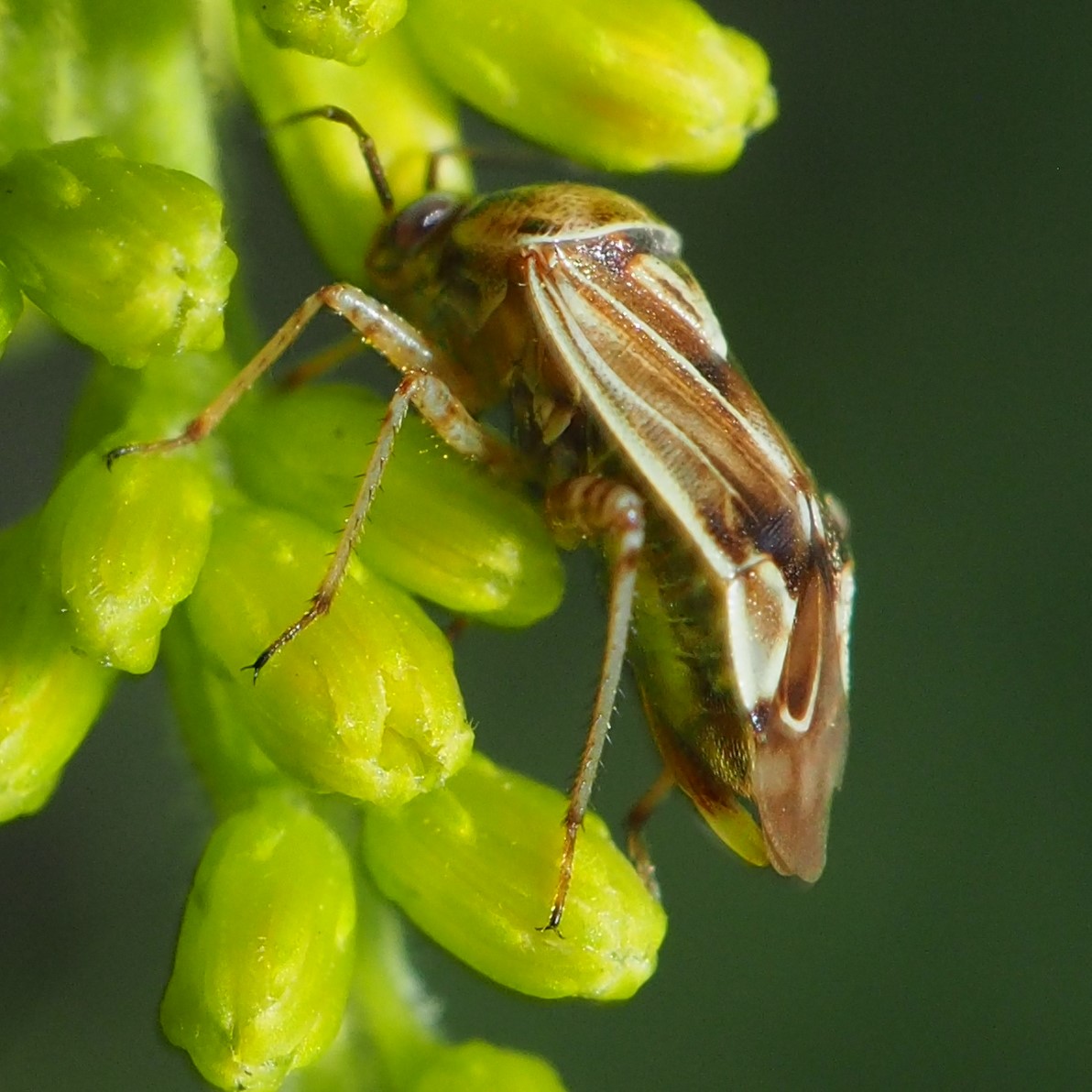
This week was also a good one for Stink Bugs. Here is a nymph of the one everybody loves to hate, the Brown Marmorated Stink Bug, BMSB. I just happened to be looking underneath a redbud leaf, and there was one of the prettiest Stink Bugs, the Green Stink Bug. Third is Dendrocoris humeralis, that reddish Stink Bug that is so common right now.
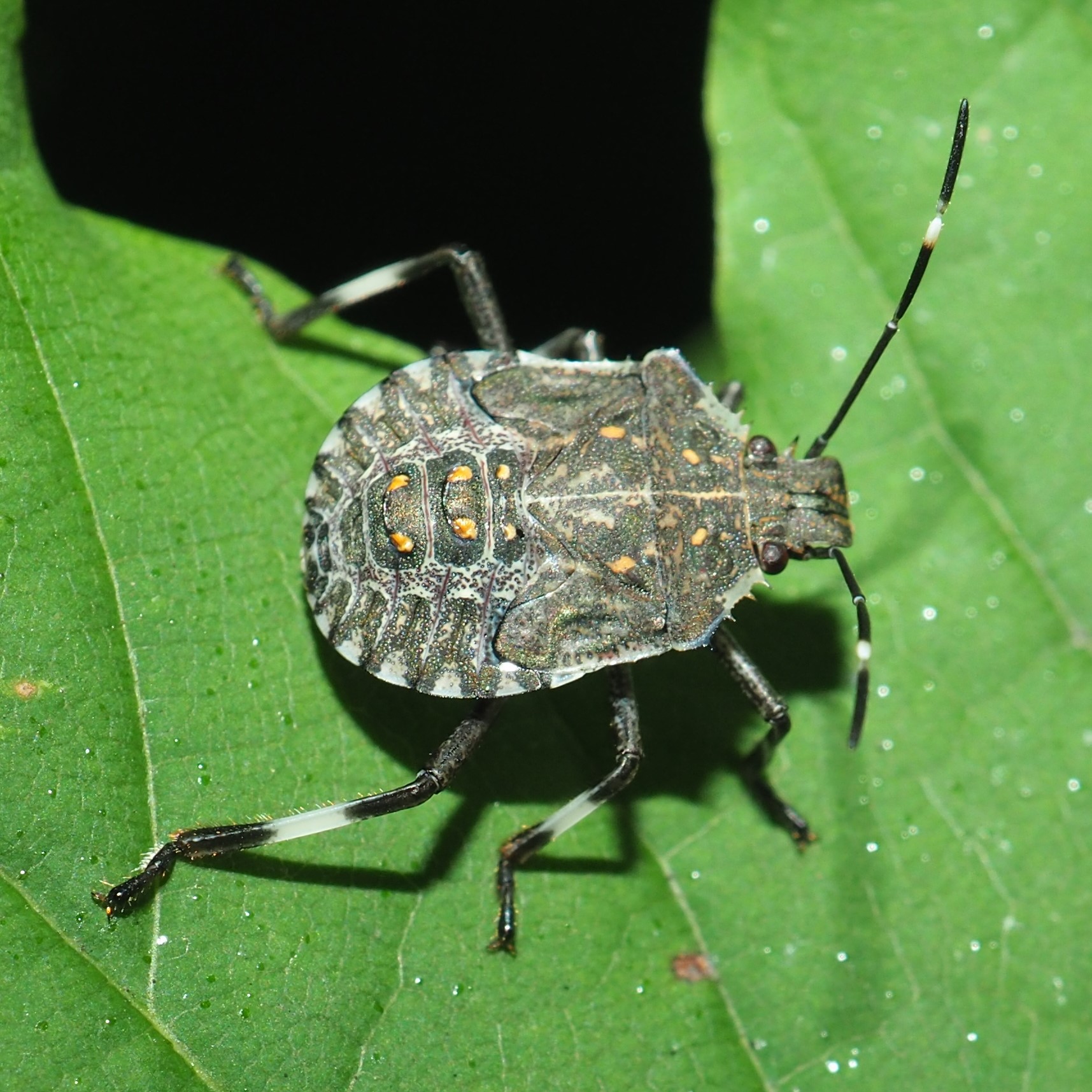
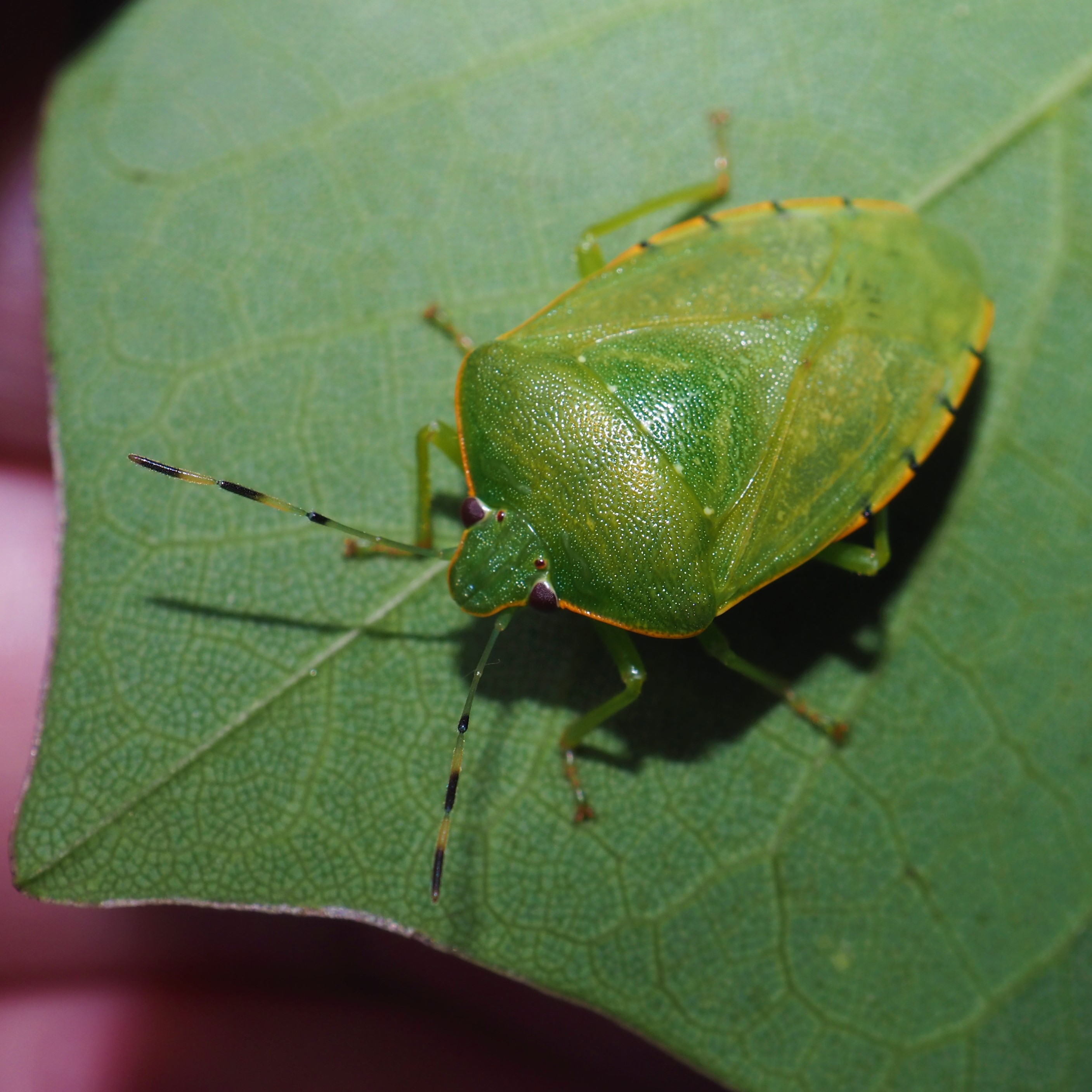
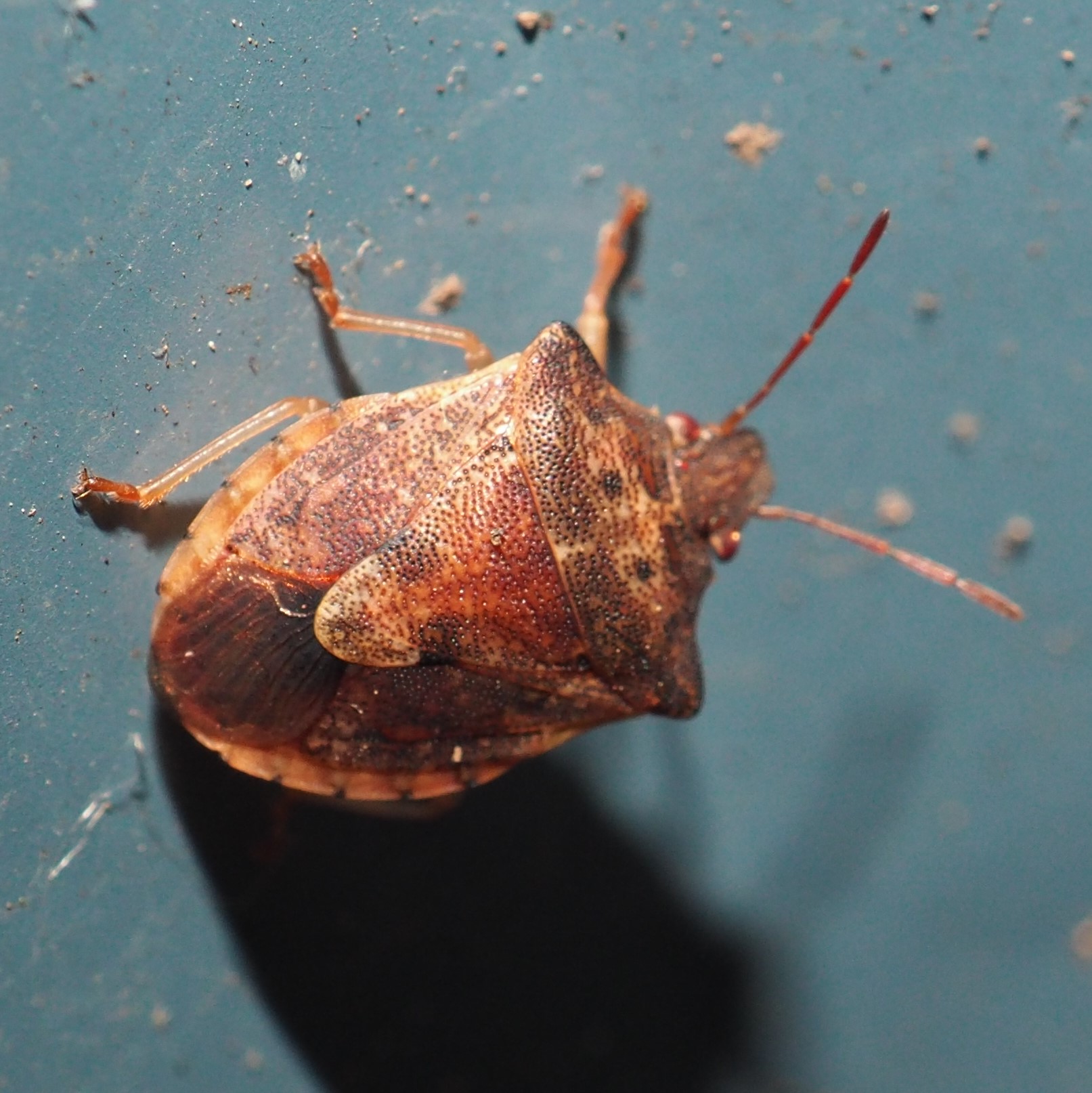
Of all the bugs I've seen this week, the most common has been the Ambush Bug. Supposedly Michigan has two species that are hard to distinguish: the Pennsylvania Ambush Bug and the American Ambush Bug. So far all the ones I've sent in to iNat are identified as Pennsylvanians. They seem to be evolved to slot into the Goldenrod with their colors of yellow and brown (picture 1). But sometimes they look mostly black (Picture 2). I thought at one point that I understood the coloring - that on color combo is for males and the other for females. But this doesn't often work (for me at least).
These bugs are hungry and brutal. Like the Assassin Bugs of genus Zelus, they have a long rostrum ("slurpy-maker") which they stab into their prey and use to suck out the good stuff. In picture 3, that rostrum comes out from the mouth region and is greenish. The bug has poked it into what looks like the throat of the wasp prey. In picture 4, the lower bug is busily eating a bee or wasp and the upper one (the male I suppose) is mating with the lower one. Later the upper bug wanders off and finds itself something to eat.


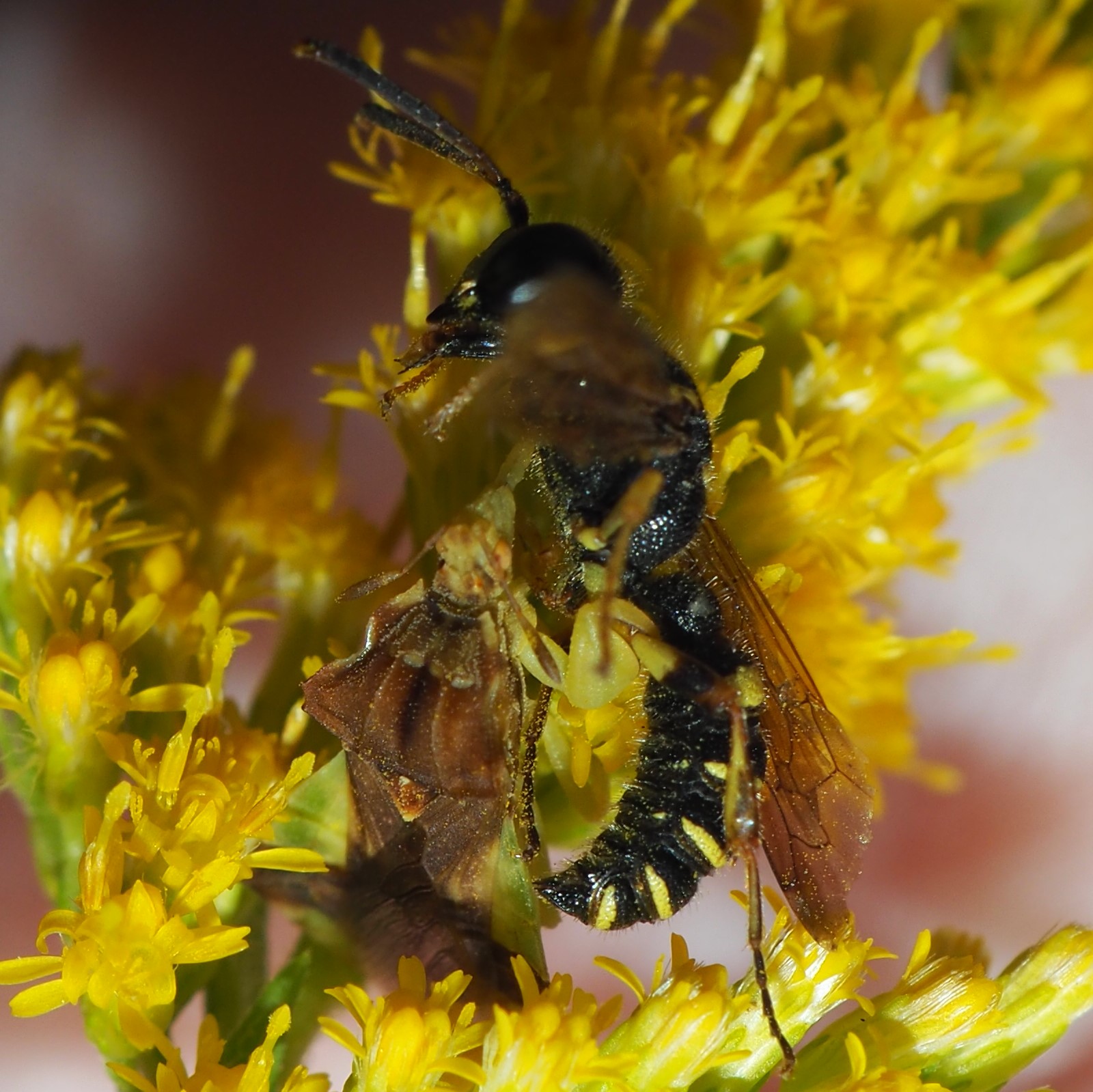
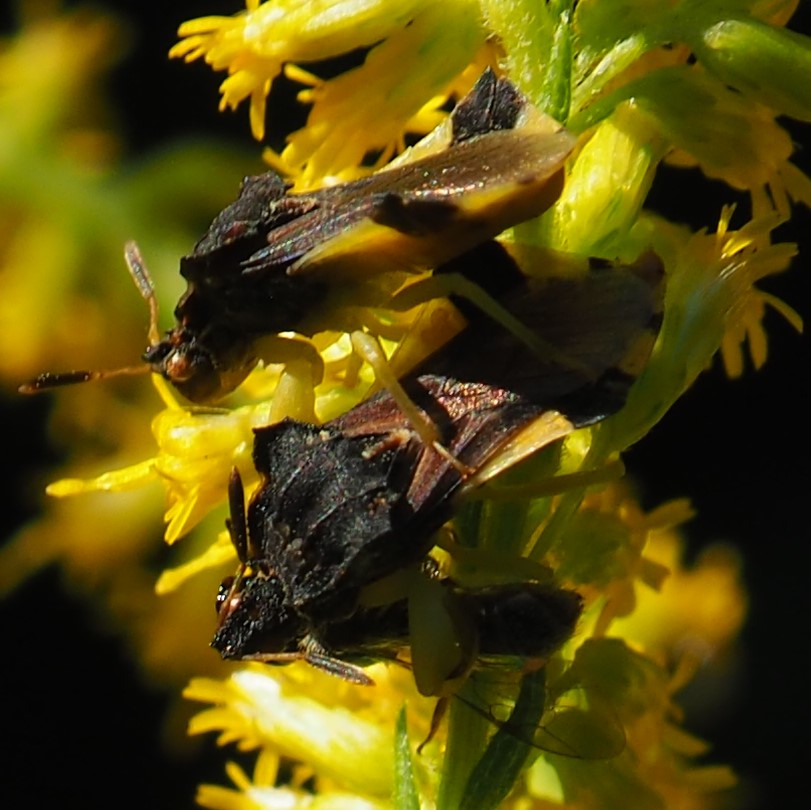
No grasshoppers this week, nor Katydids. The only one of the Orthoptera to appear was this little Jumping Bush Cricket, already dead when I found it. It also already had what looks like a parasitic worm at it tail end. Poor little thing. While we're down near where the Butterflies would be if I had seen any this week, here's one caterpillar, the Hickory Tussock Moth. And while we're down there with the moth caterpillars, here are a few of the mystery Moths I saw this week. Most of these are rather small but pretty. Here is the Aster-head Eucosma.
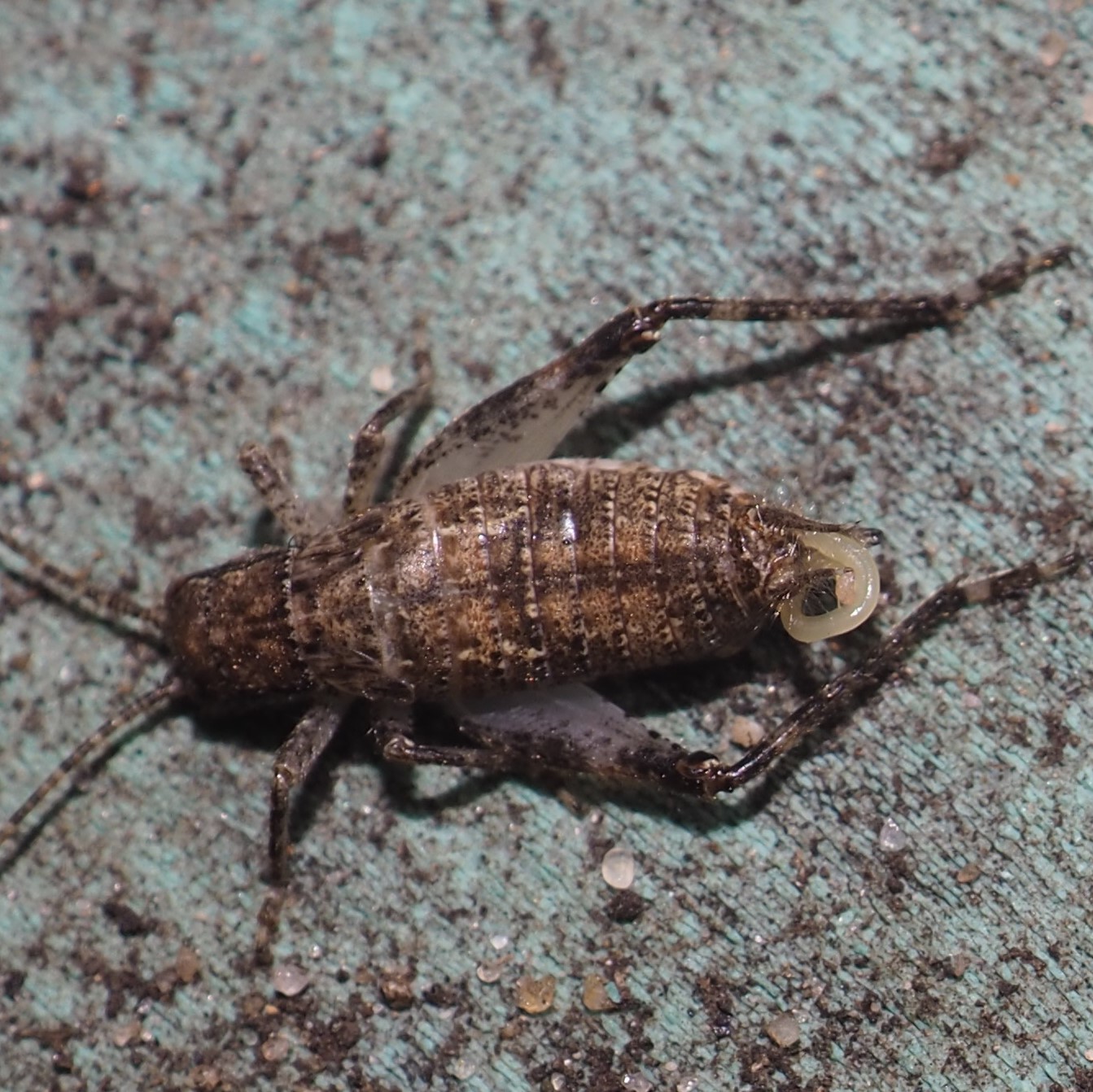
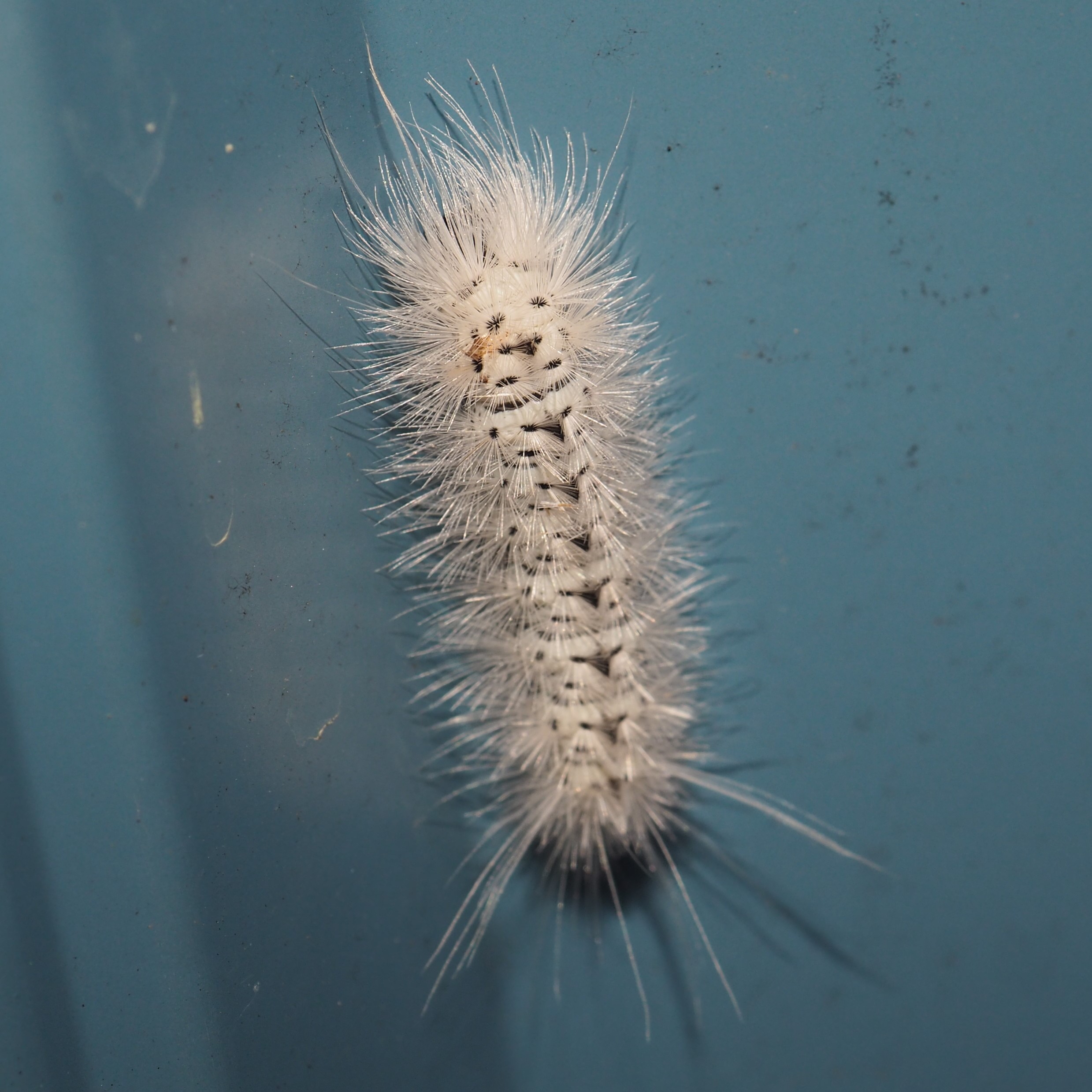
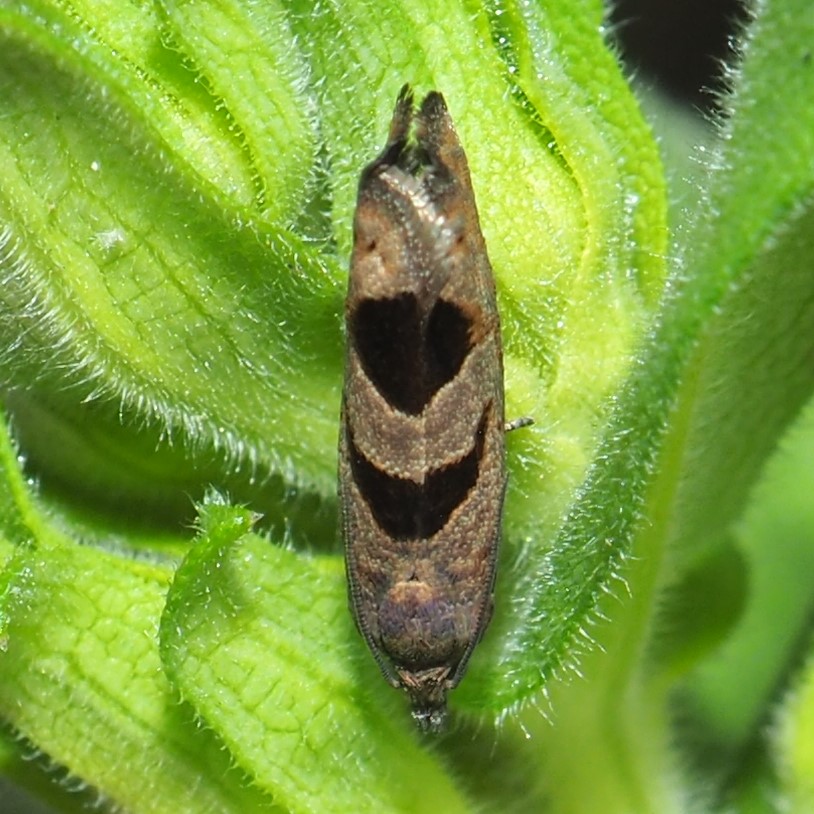
This first one is the Large Lace-Border, Scopula limboundata. Another mystery moth is this one of genus Nomophila. Third is the Spotted Grass Moth, Rivula propinqualis.
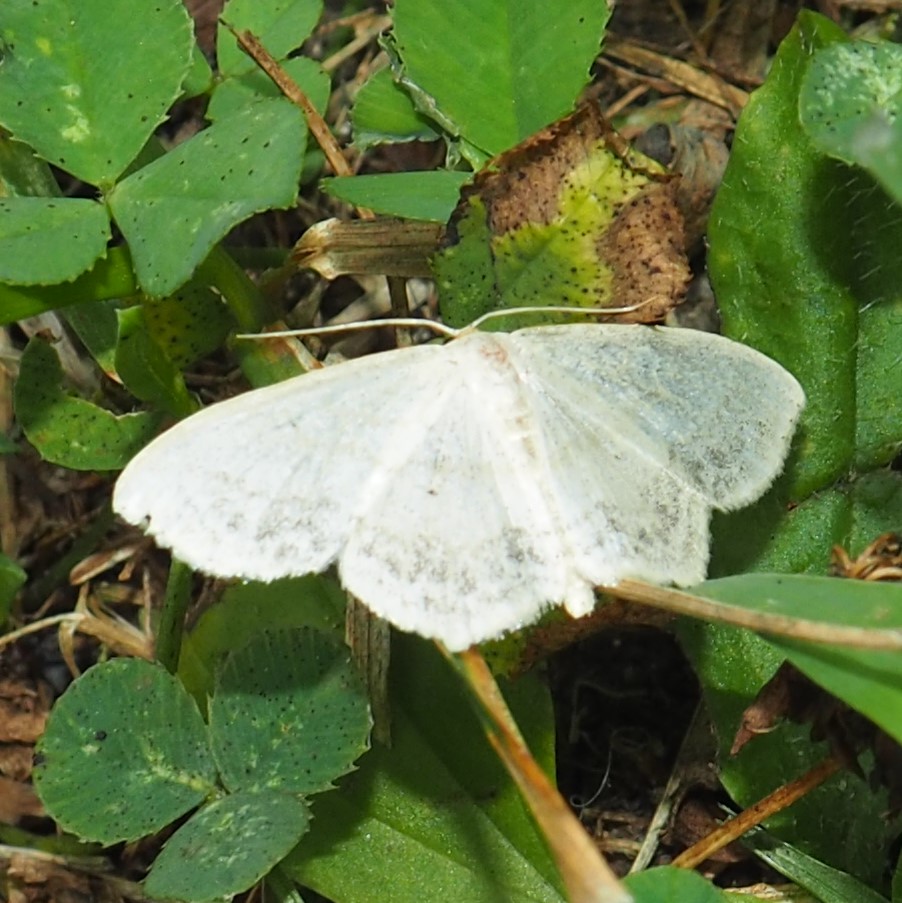
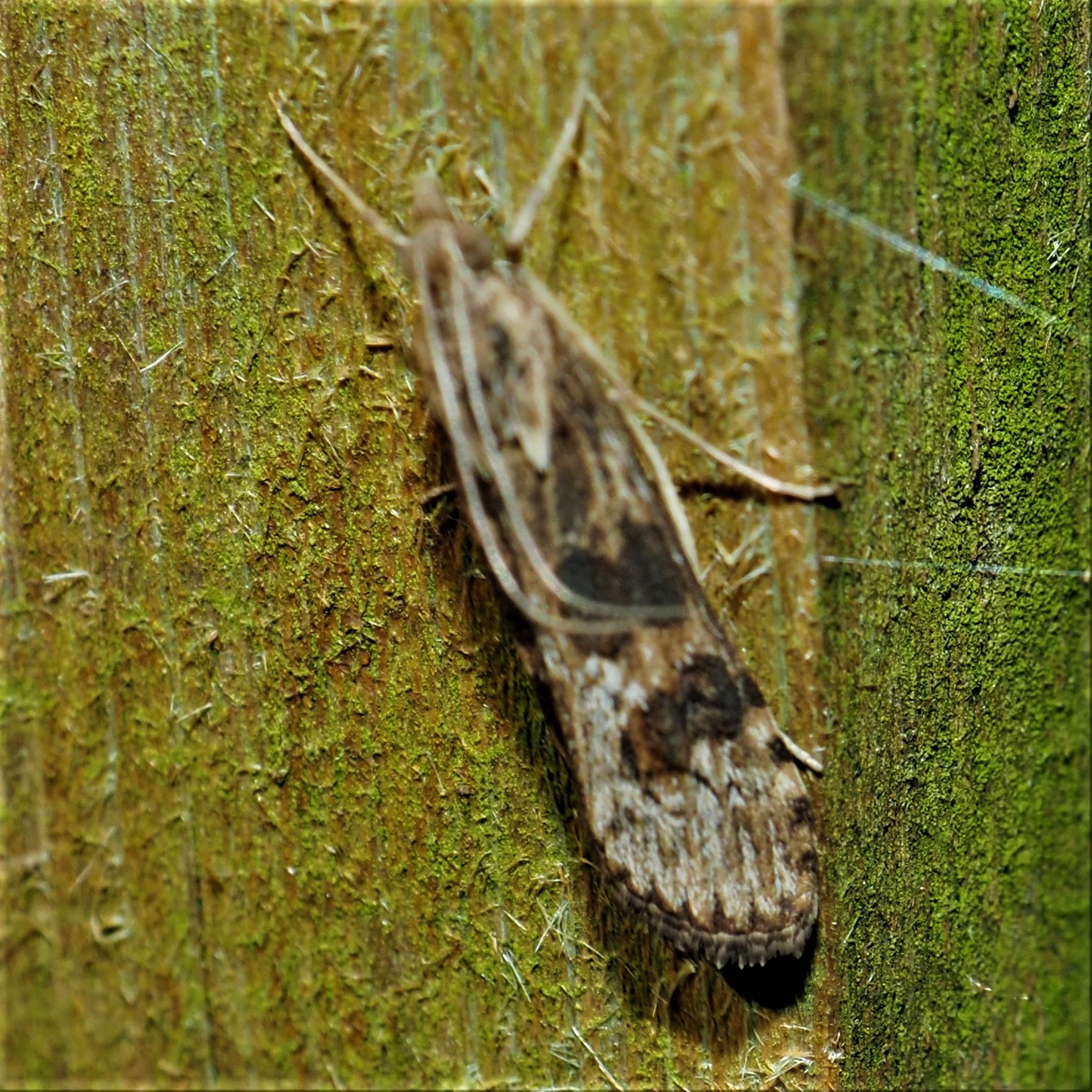
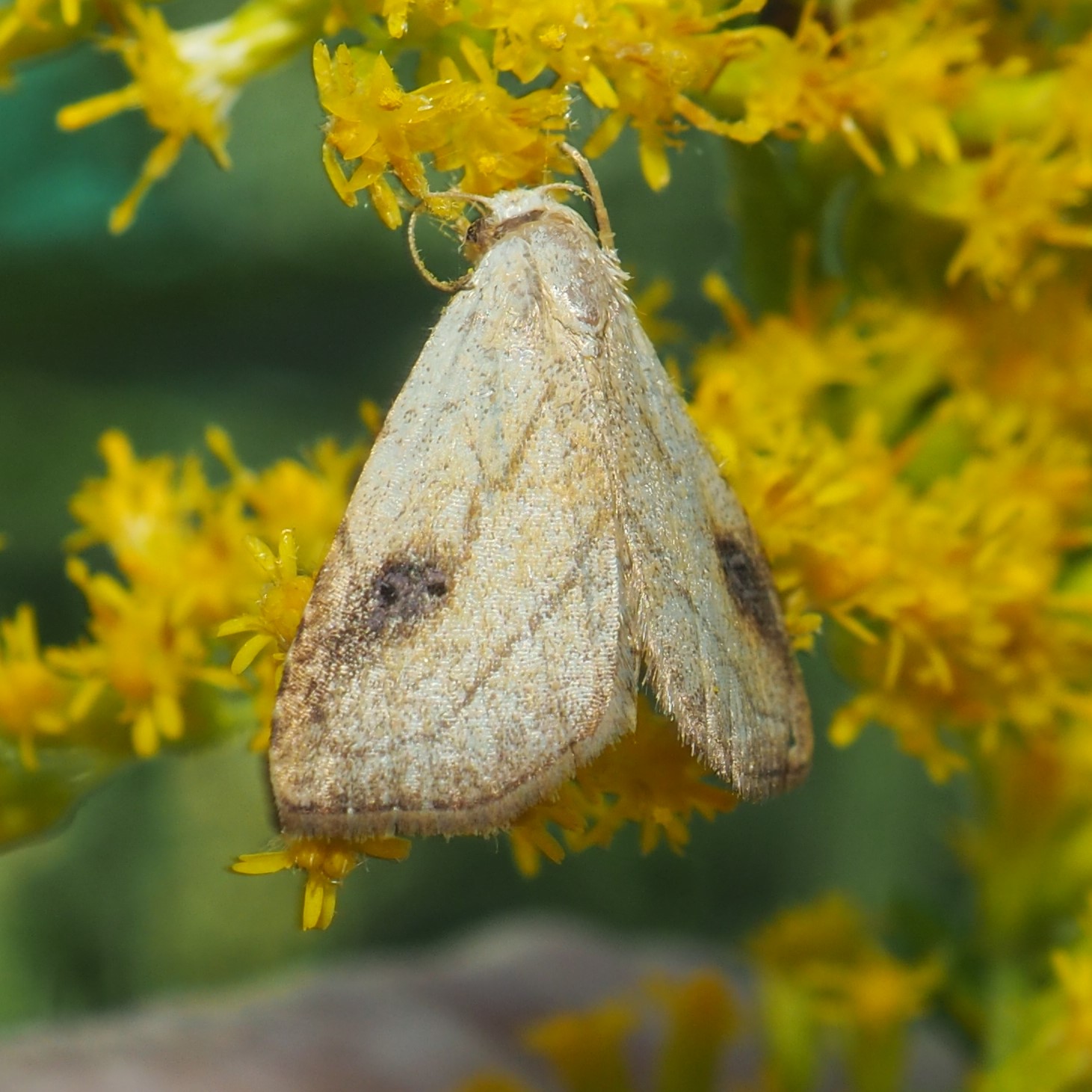
First here is the Yellow Nutsedge Moth, Diploschizia impigritella. The second remains another Mystery Moth because it is so similar to so many others. This last little Skipper is the Zabulon Skipper, Poanes zabulon.
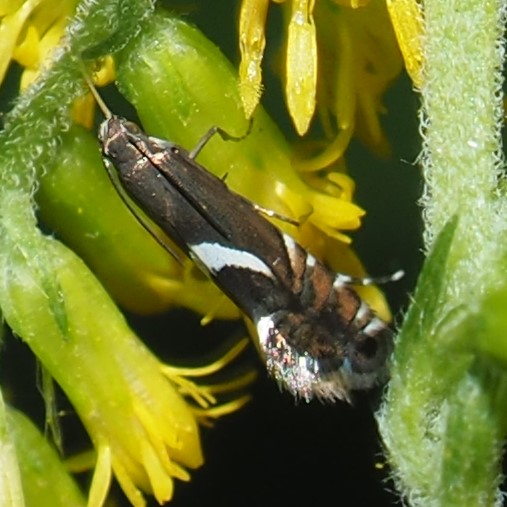

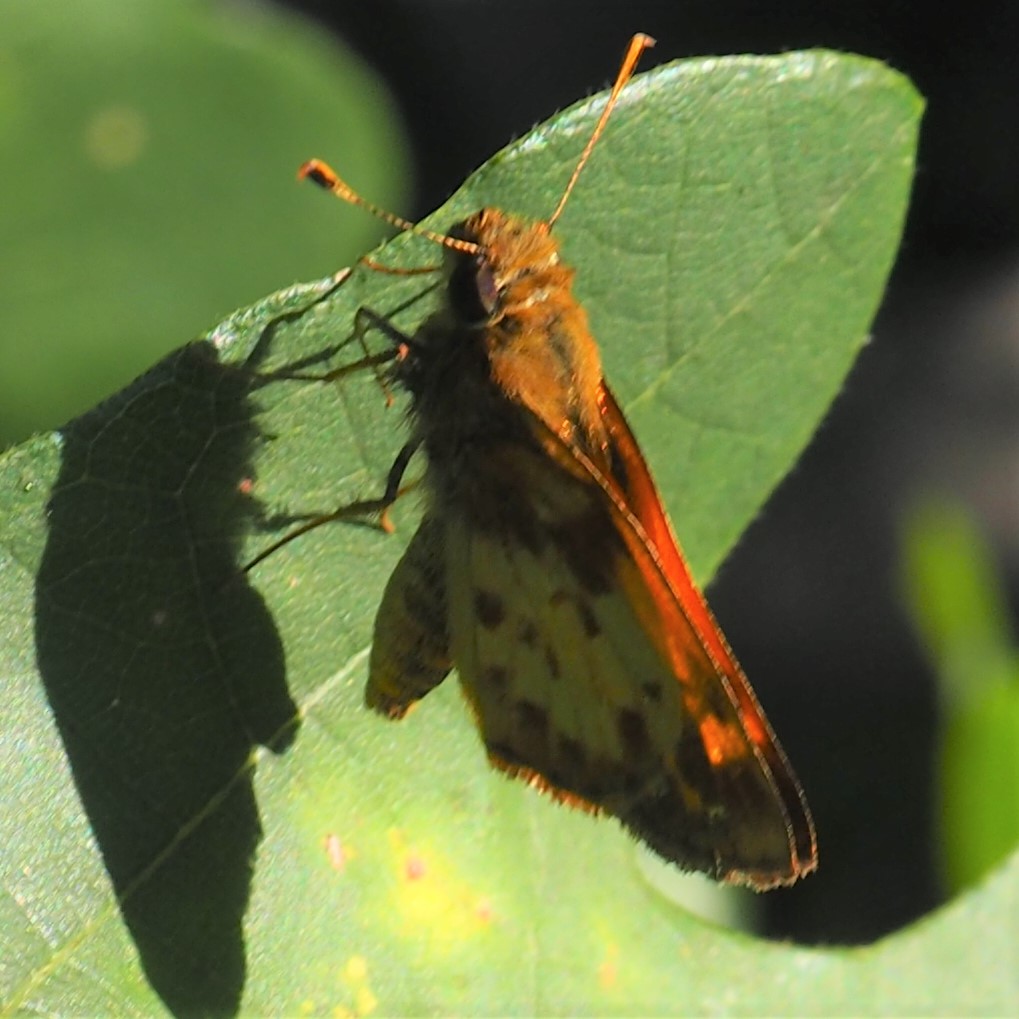
Before we get to the flies, here are a few of the fishes, their appetites high for the flake food that they don't get every day. And our beloved Froggy, the green frog (the Bullfrog youth was invisible this week). He has a new sound, by the way. A couple of days ago, I suddenly started hearing a sound like someone clicking for a horse. When I turned around, there was Froggy. I guess he wants to go a-courtin'.
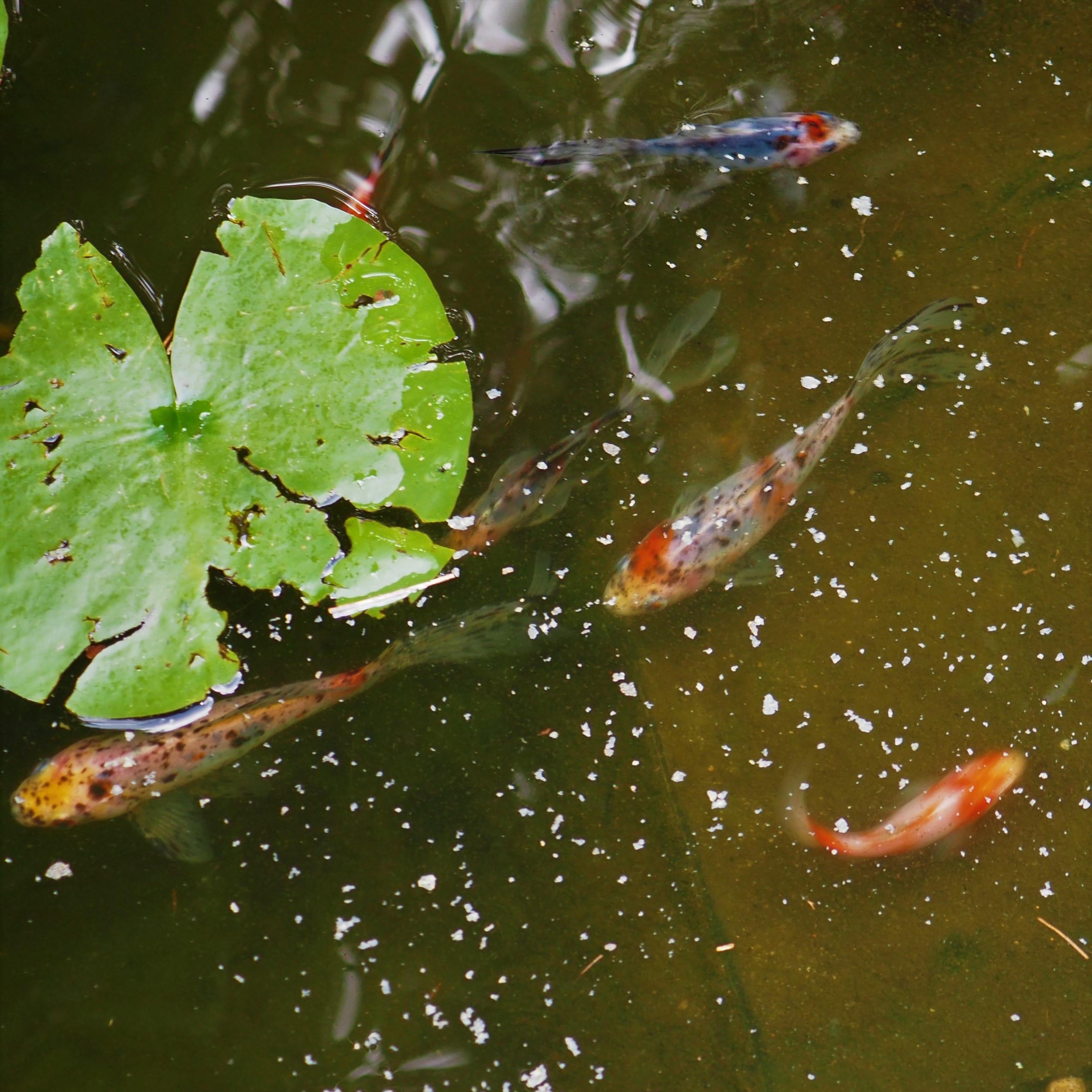

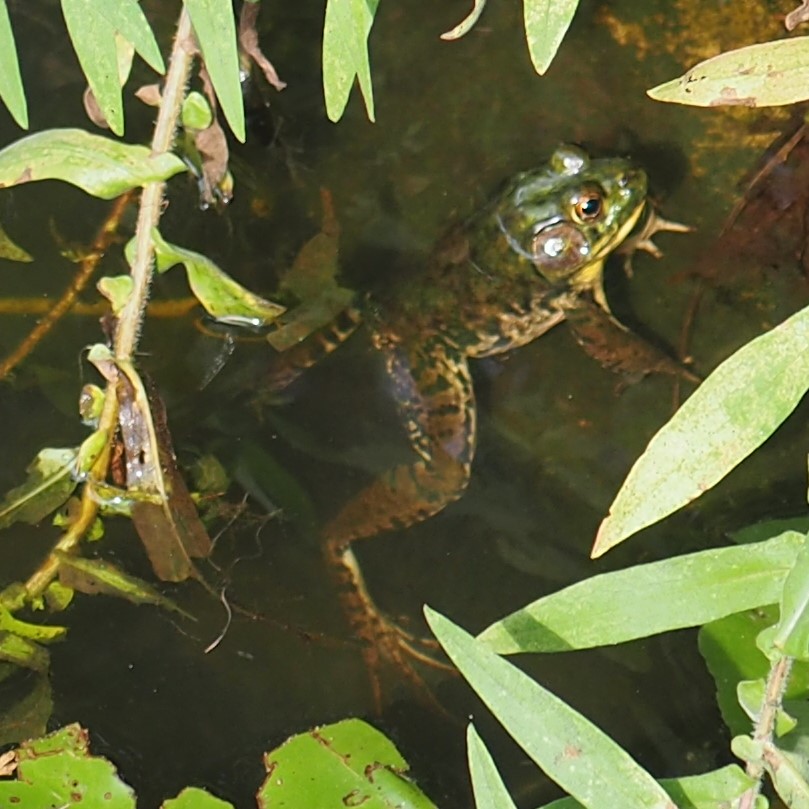
I'm going to skip some of the flies we get every week, like the block-printed Crane Fly and some of the other more common flies. Here's a fruit fly, licking a leaf for something. The second little fly hops around from place to place very drunkenly. Third is a glitzy long-legged fly, and fourth is a REALLY long-legged fly!
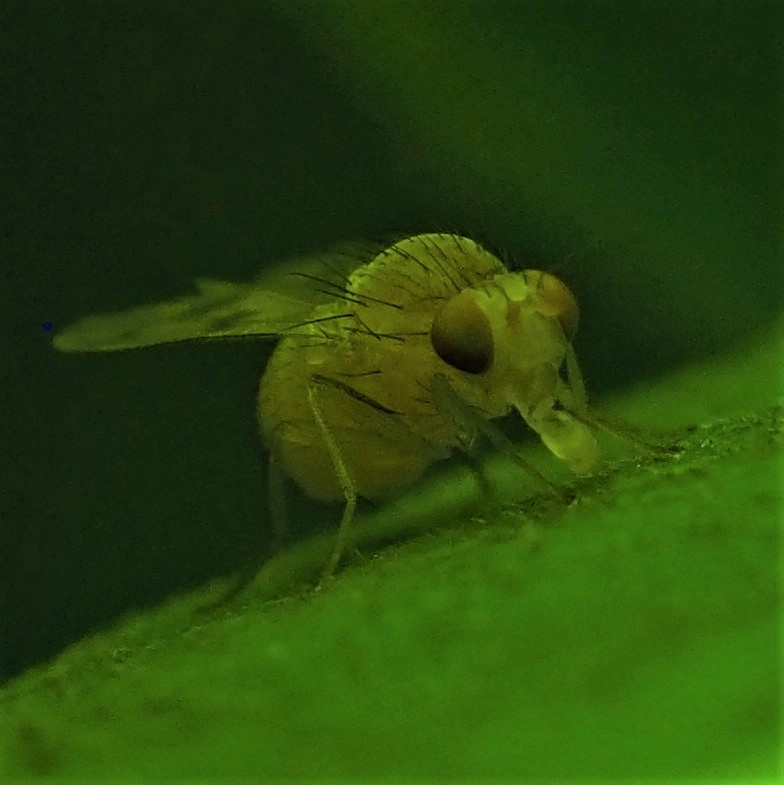
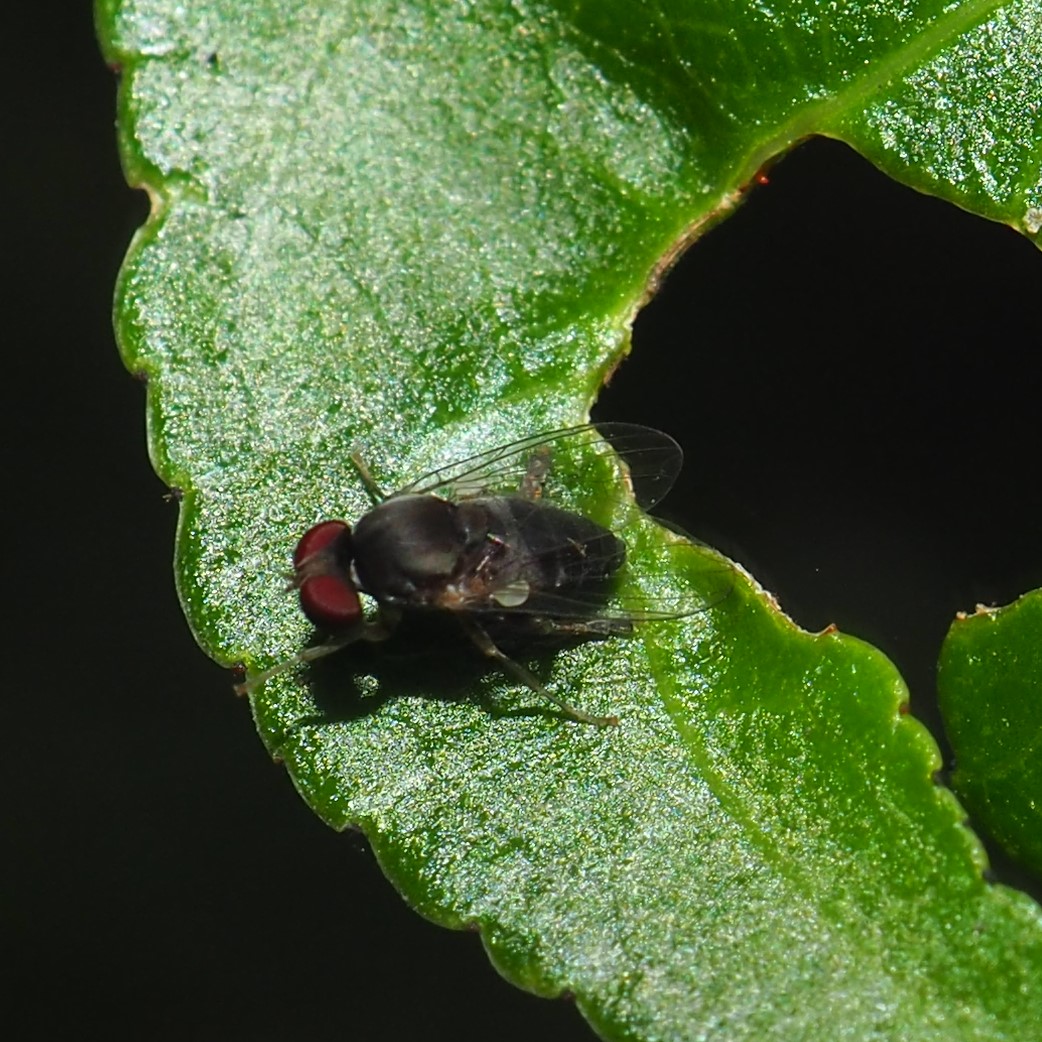
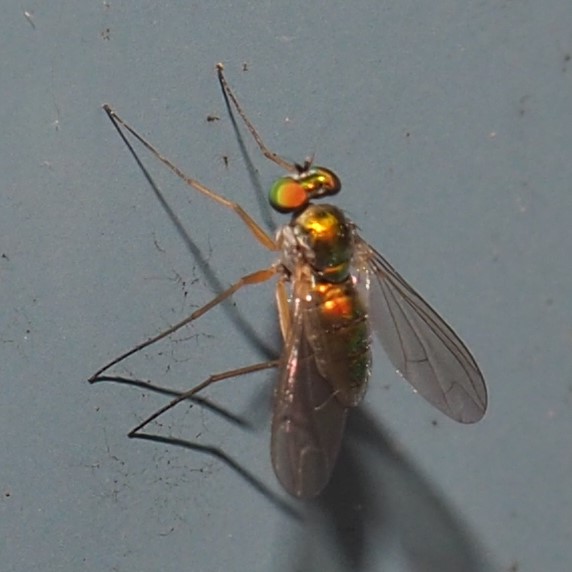
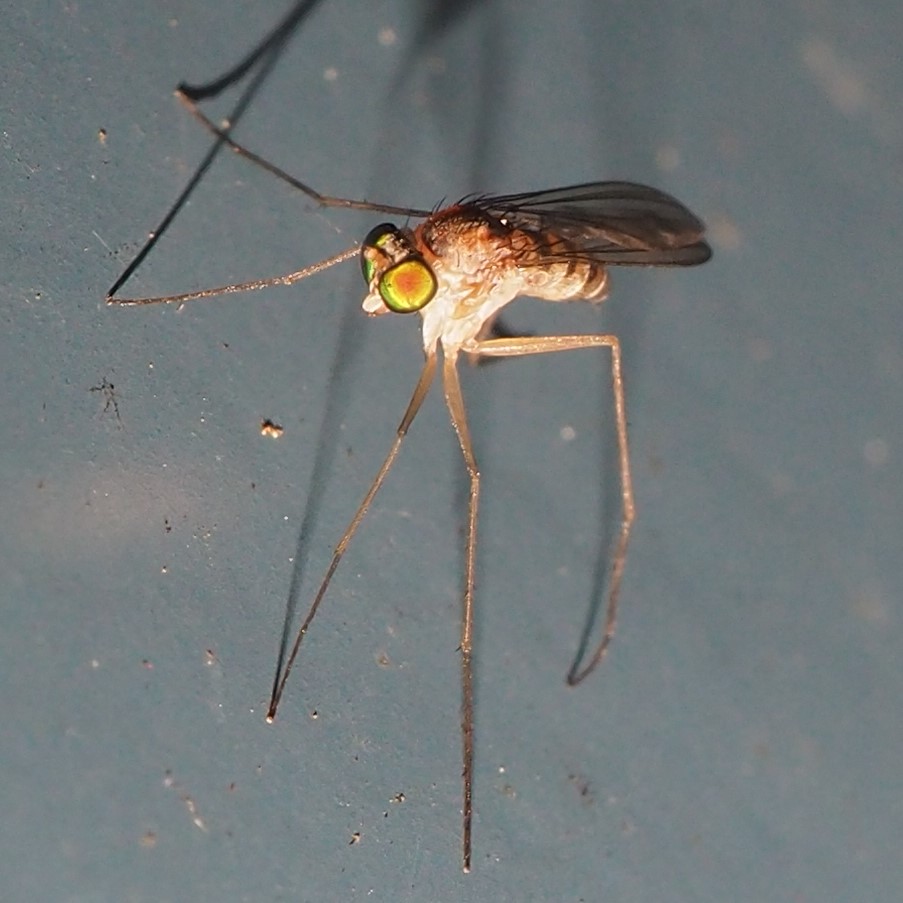
I lied about not showing you midges for a while. But this one was so lovely, I couldn't resist. We don't usually catch these little black mosquitoes, but we did this week. Third is a little robber fly.
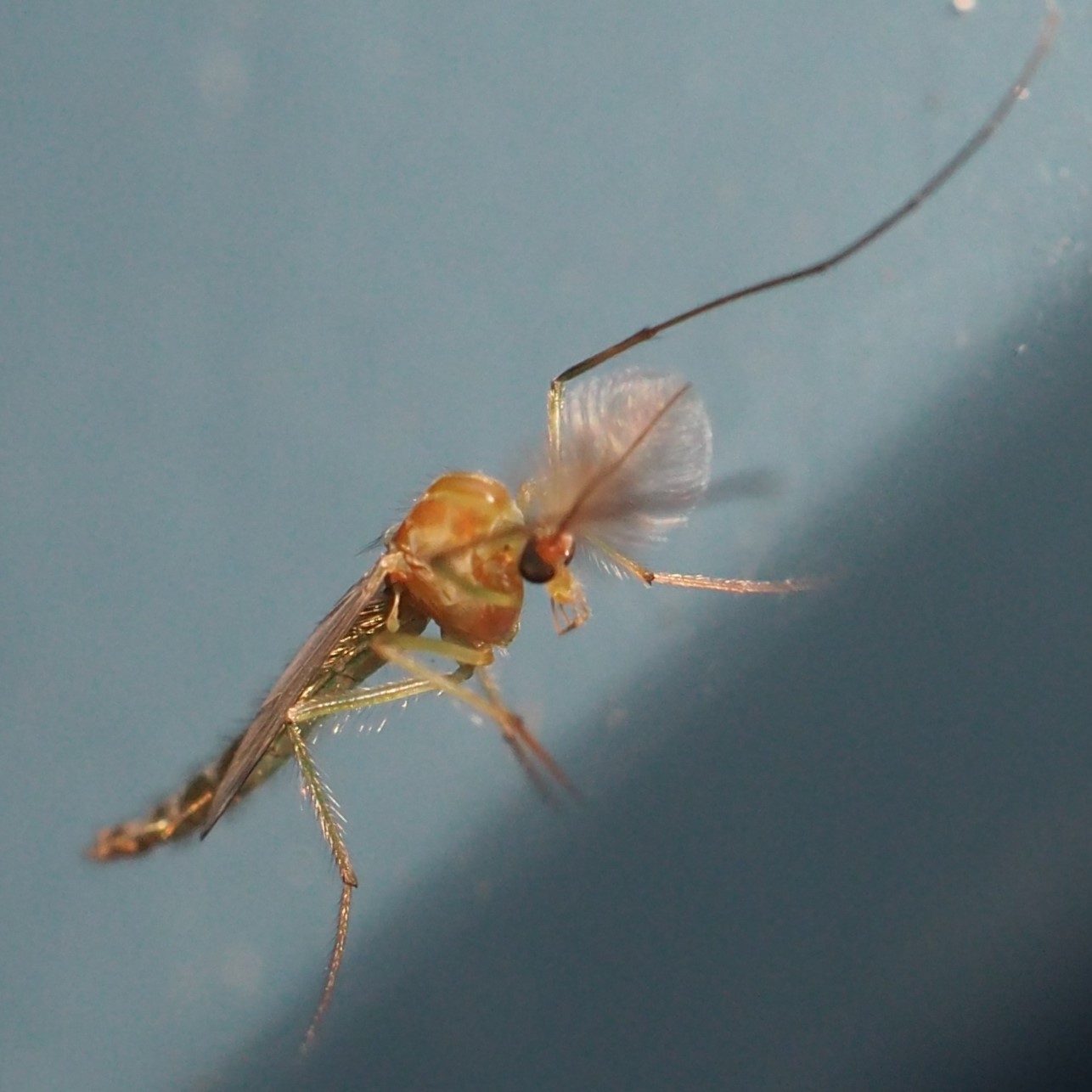
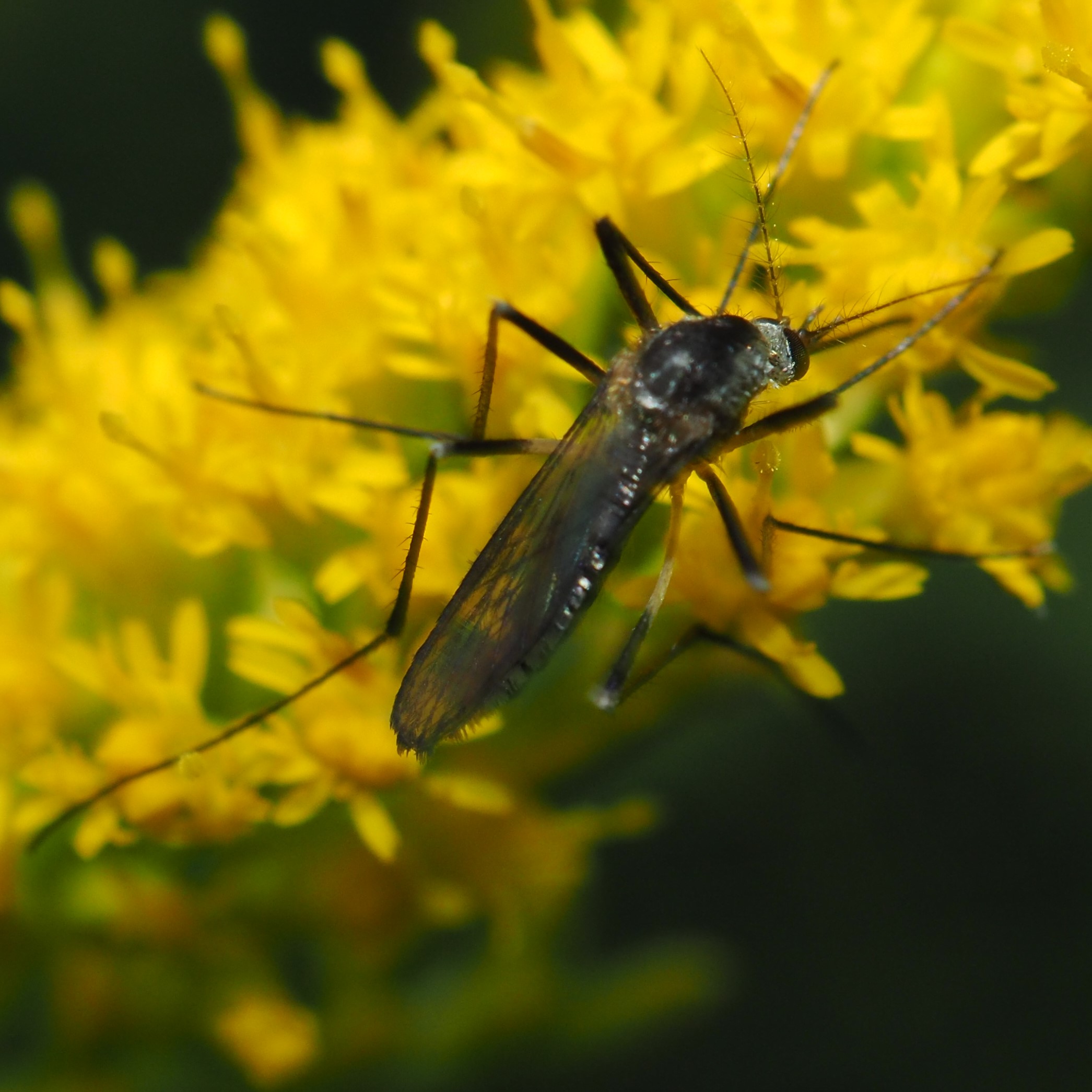
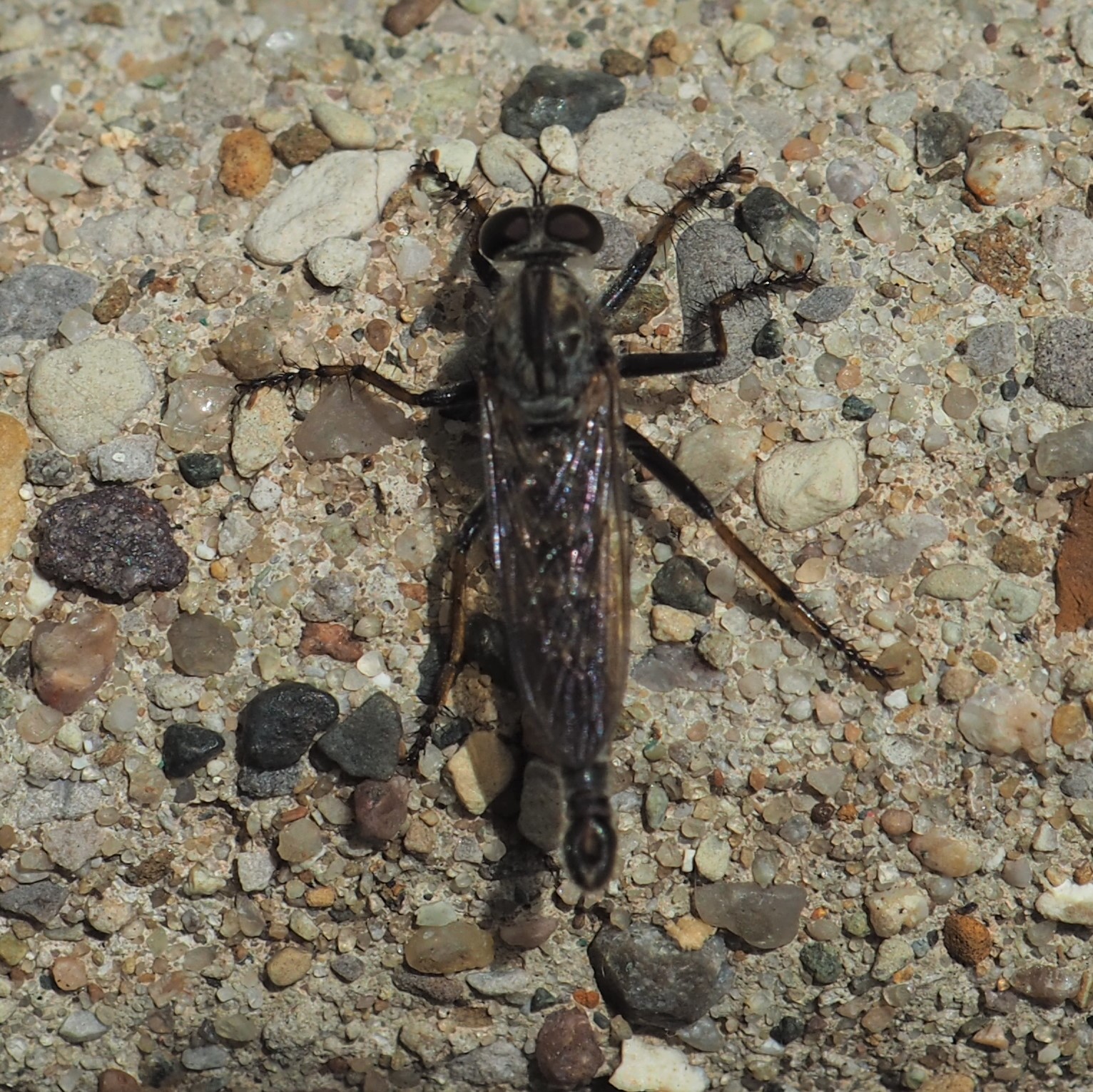
This tiny yellow and black fly is from the genus Thaumatomyia and is probably Thaumatomyia glabra. I don't recall seeing one before. The Minettia lupulina is so common nowadays but so pretty. The Moth Flies are also so common, but here you are.
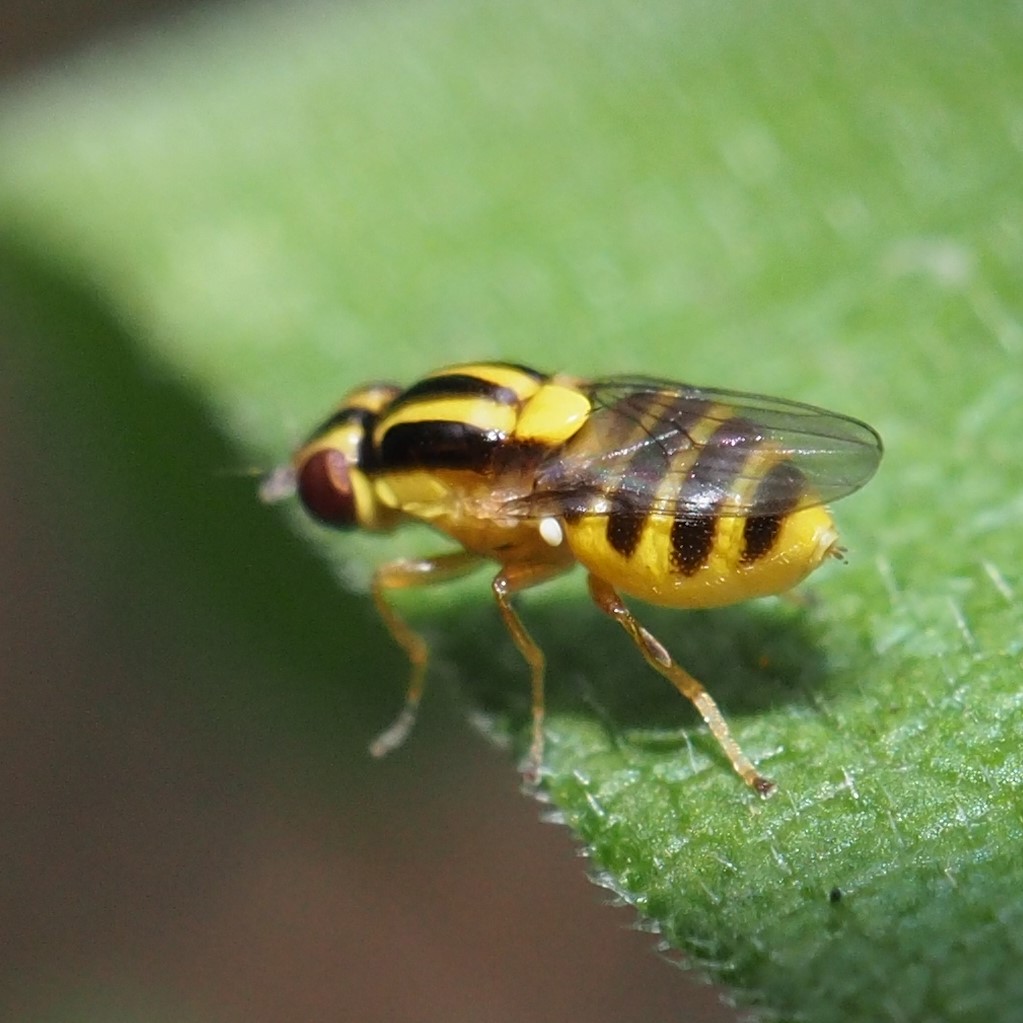

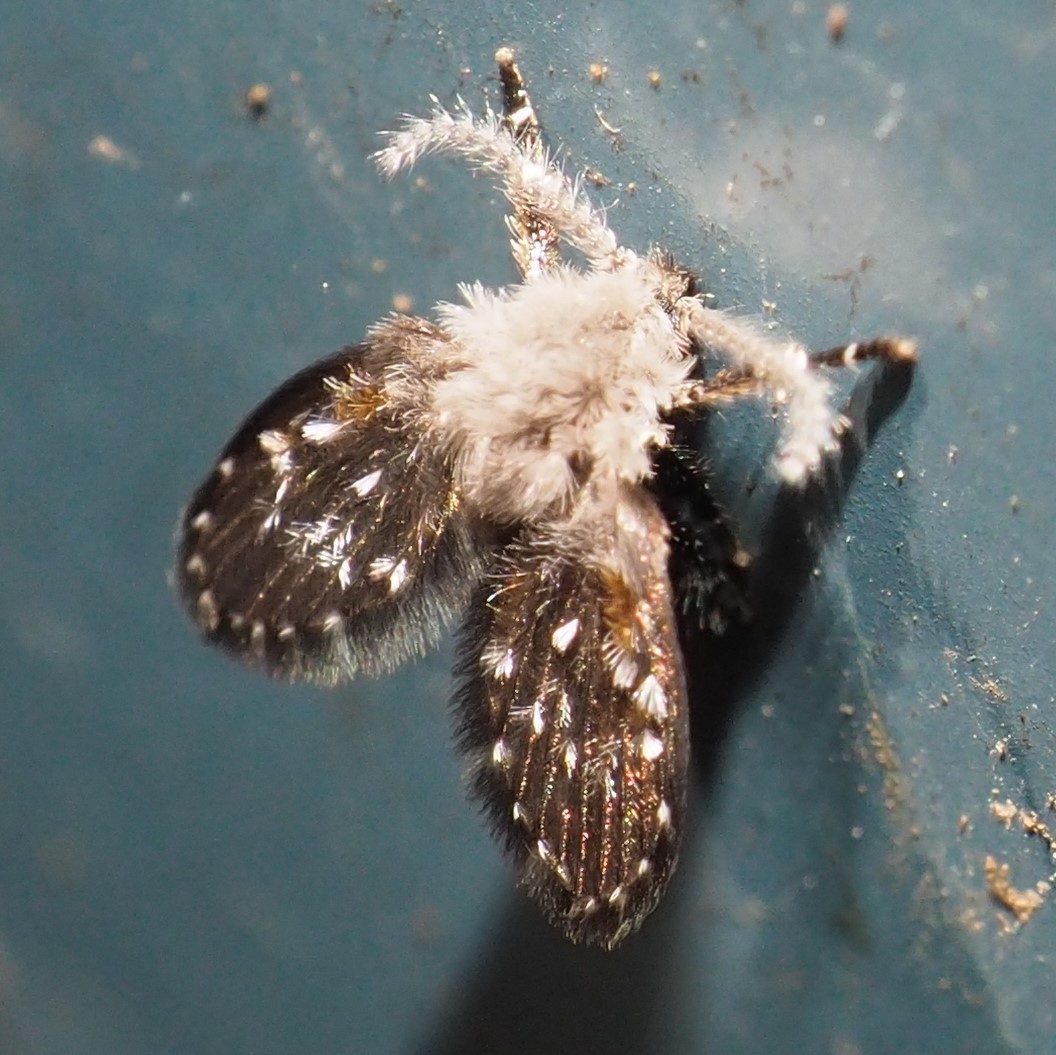
The Goldenrod has begun to bring in the Hover Flies. Our old friend Toxomerus geminatus hasn't been a stranger, but here it is soaking up that golden beauty. If you will click on picture 2 to enlarge it, you can see the myriad tiny eyes in that big red eye. It has also brought in two less-often-spotted ones, the Thick-legged Hover Fly and one that is even newer for me, the Slender Smoothtail (Epistrophella emarginata).

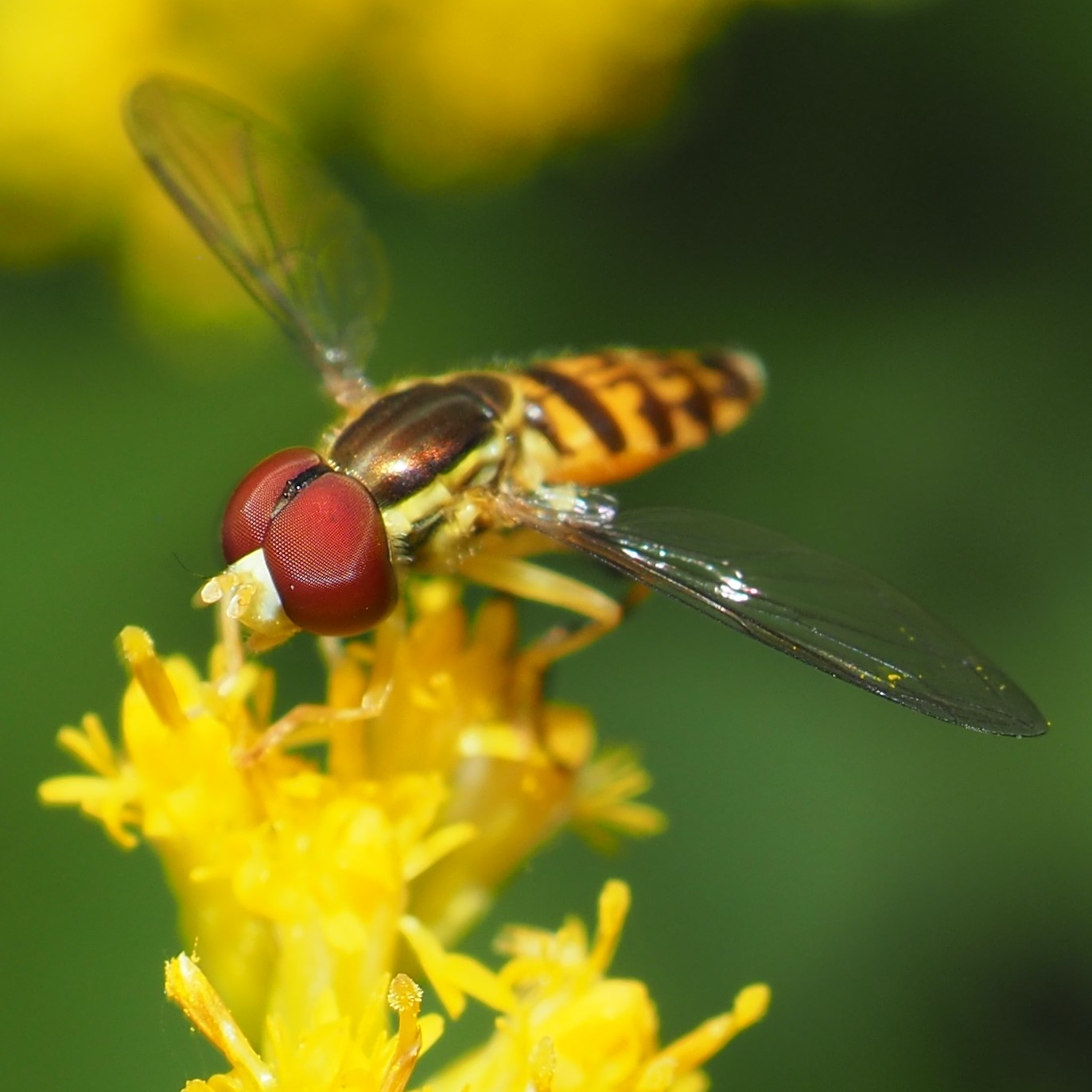
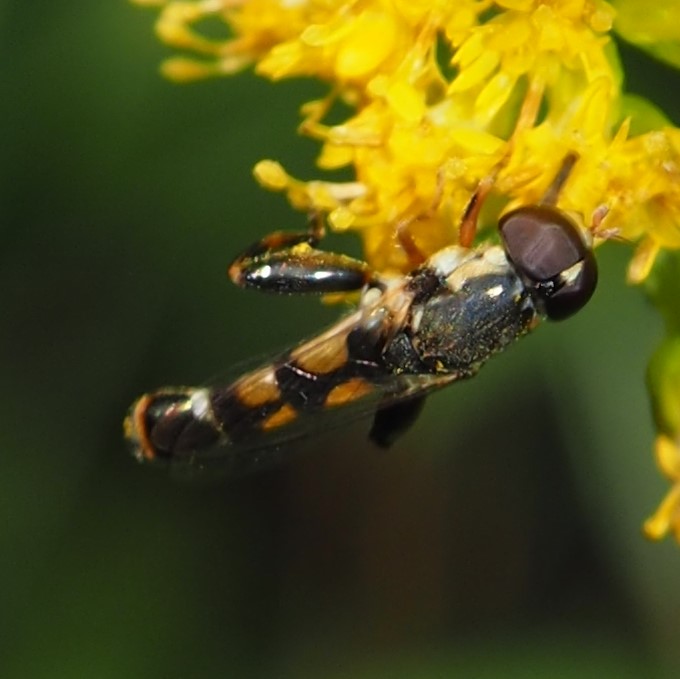
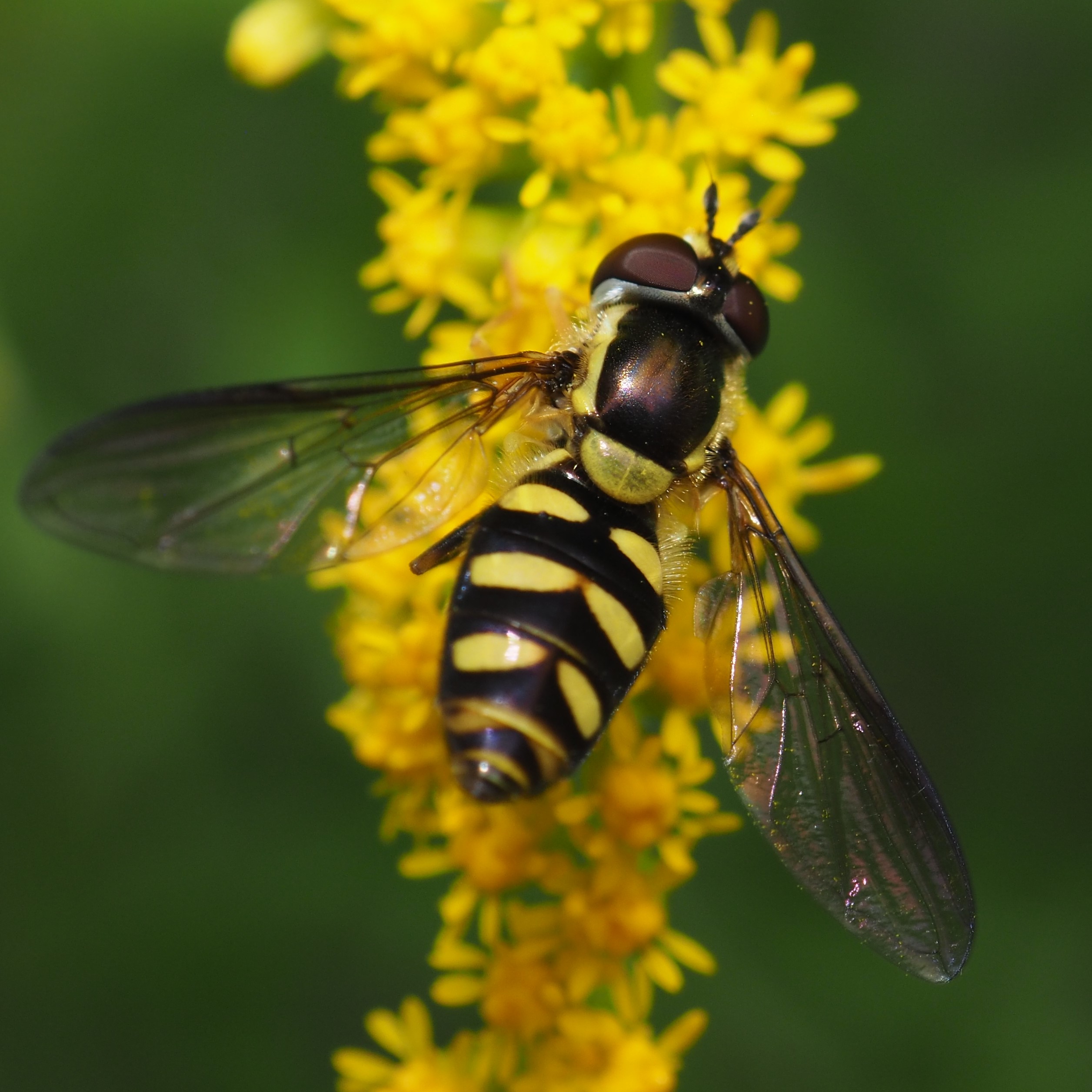
The Harvestmen are all adults (and have been for some time) - I'm waiting to see baby ones show up out by the shop. But for now, they are quite lovely, especially the one in image 2. Another creature it is easy to overlook is the odd Pillbug that appears when you are looking for it. Here is the Scorpionfly that actually let me photograph it face first. We are now almost to the spiders. I know what you were looking for!
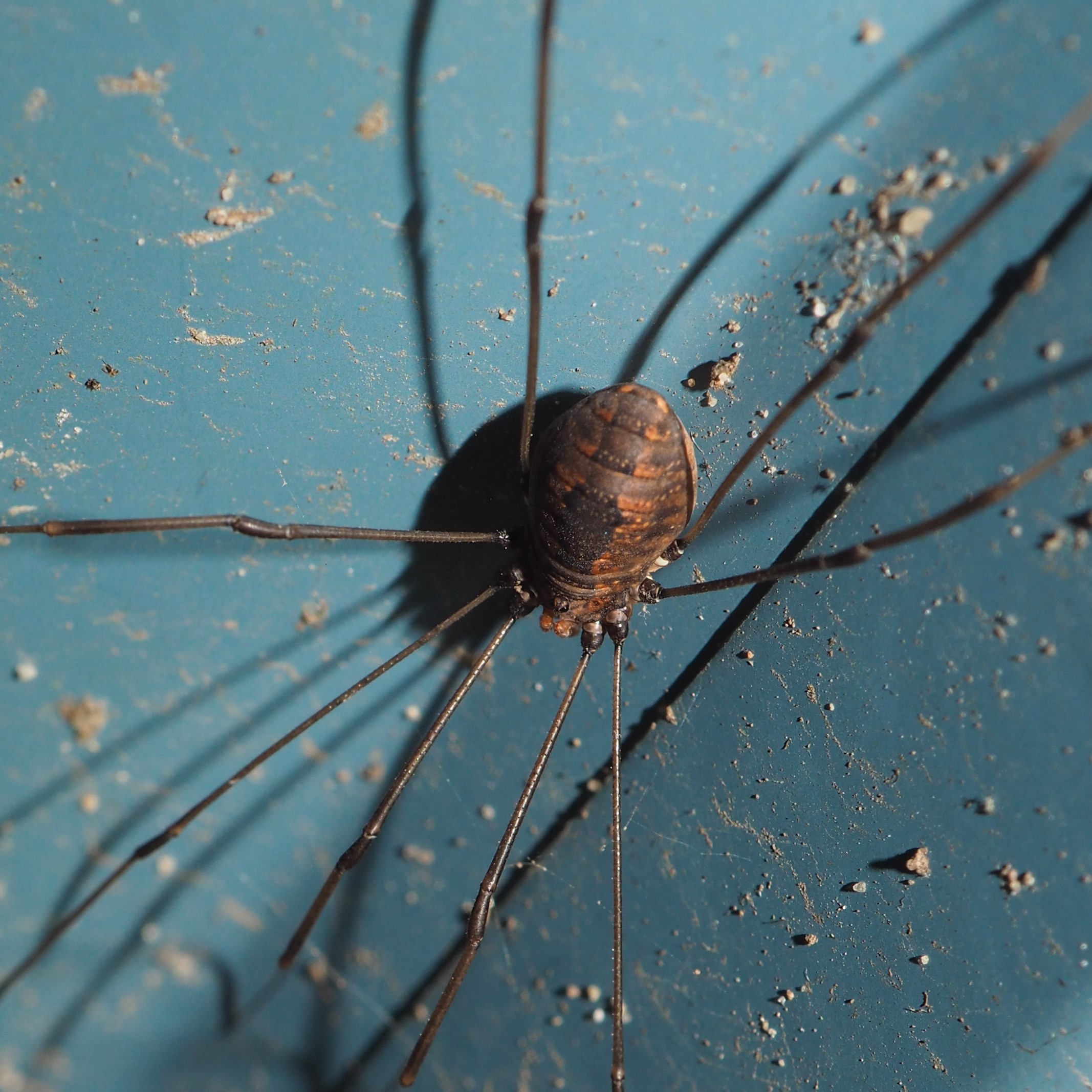
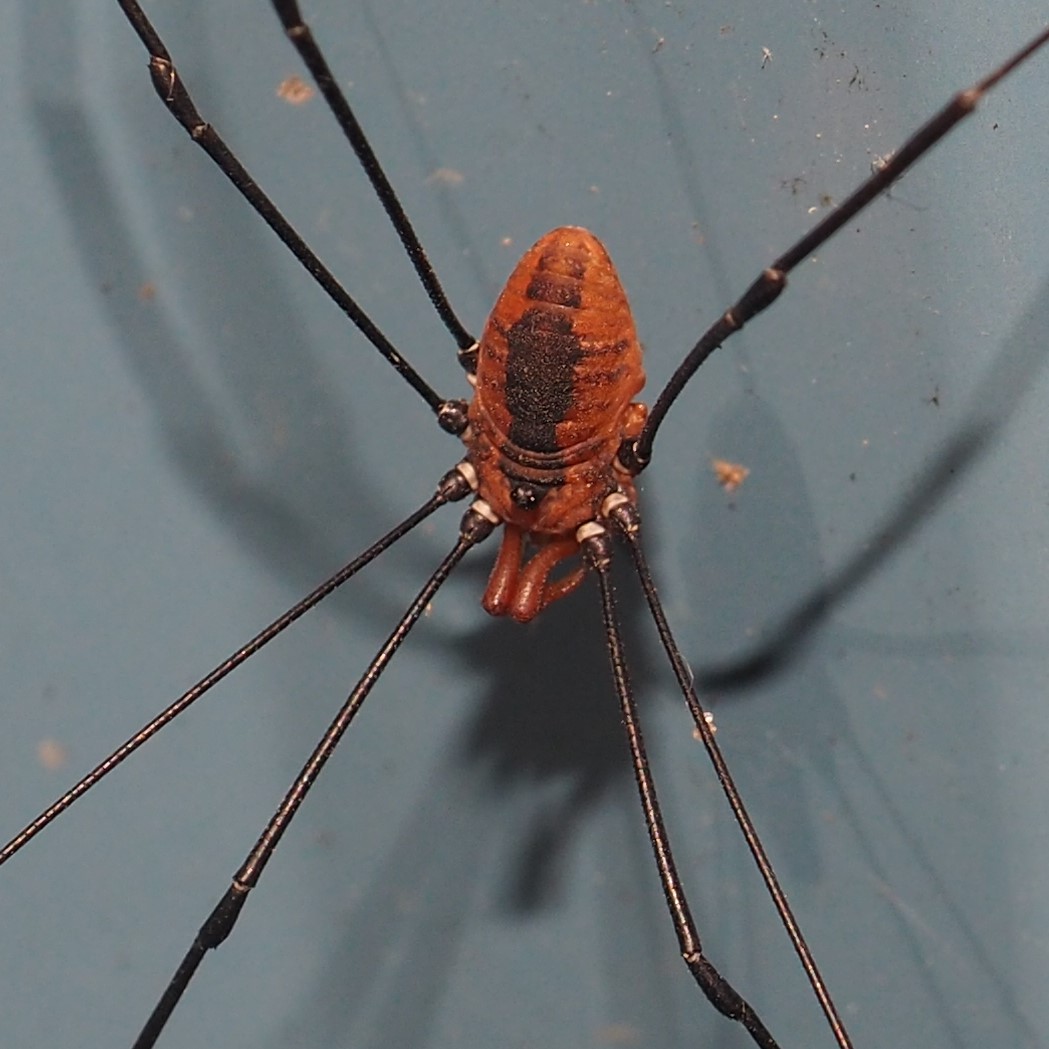
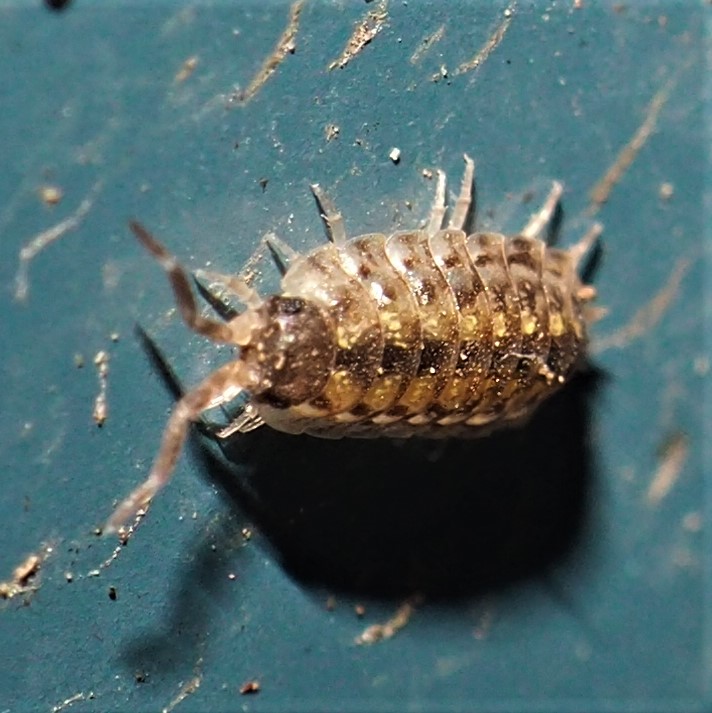

Well, almost. A few of these snails were climbing the shop wall. Somehow I let the camera dangle and it took this picture of the ground in front of me, showing a LOT of tiny baby snails. Last picture: a couple of small snails. It turns out this kind of snail is called the Glossy Pillar.
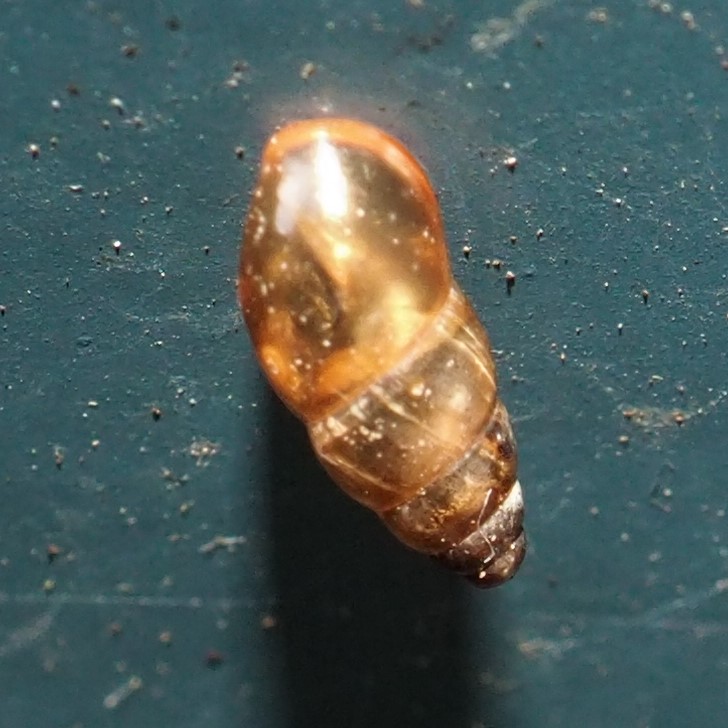
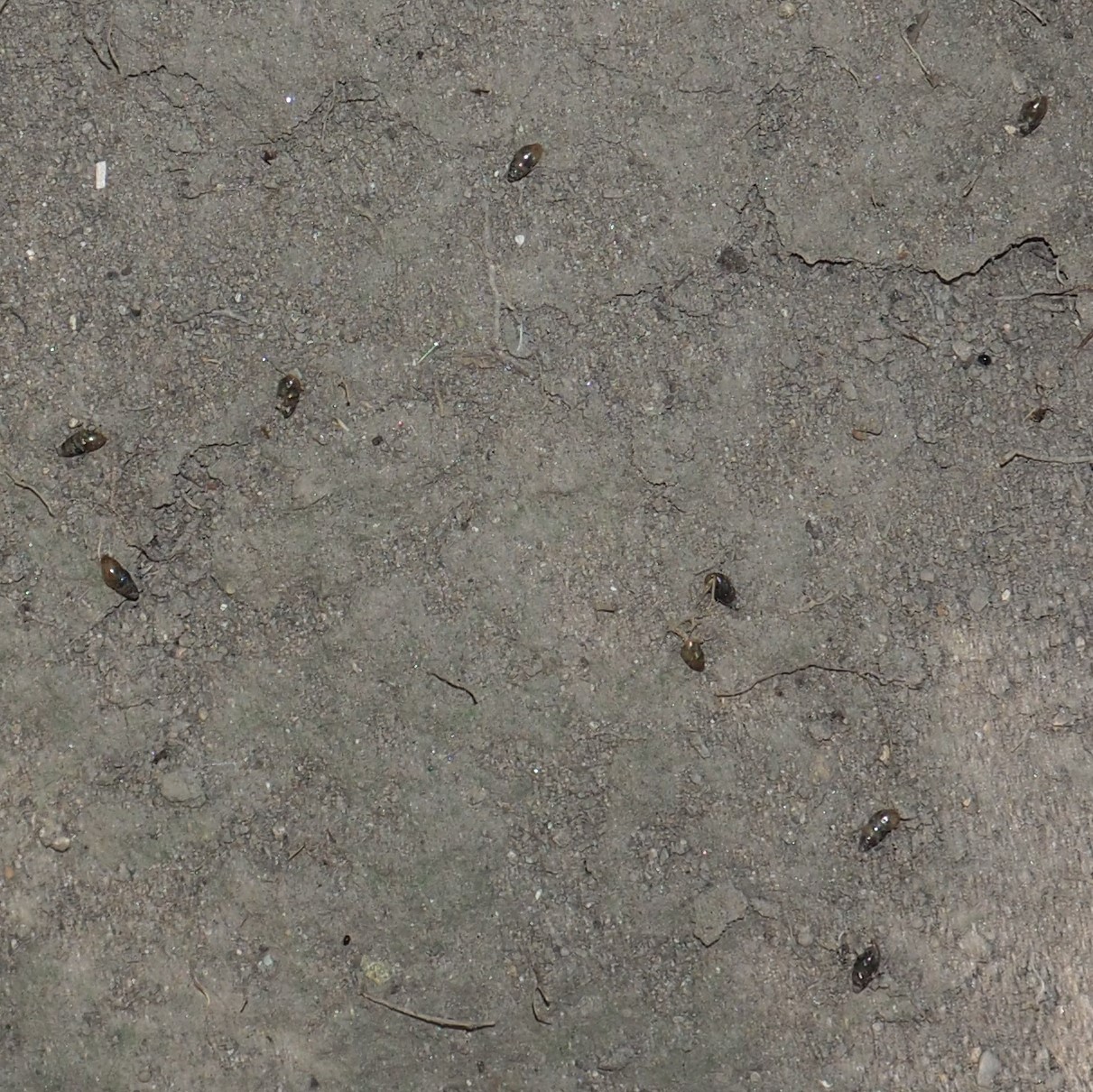
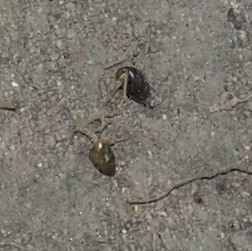
That Cellar Spider was there under the window frame again. Next, there is a reason these guys are called Common House Spiders. They are all over the place. I love these darker colored ones. And the ones that look like Mr. Potato Head with its nose. Last is a Cobweb Spider we've been seeing since it was tiny.
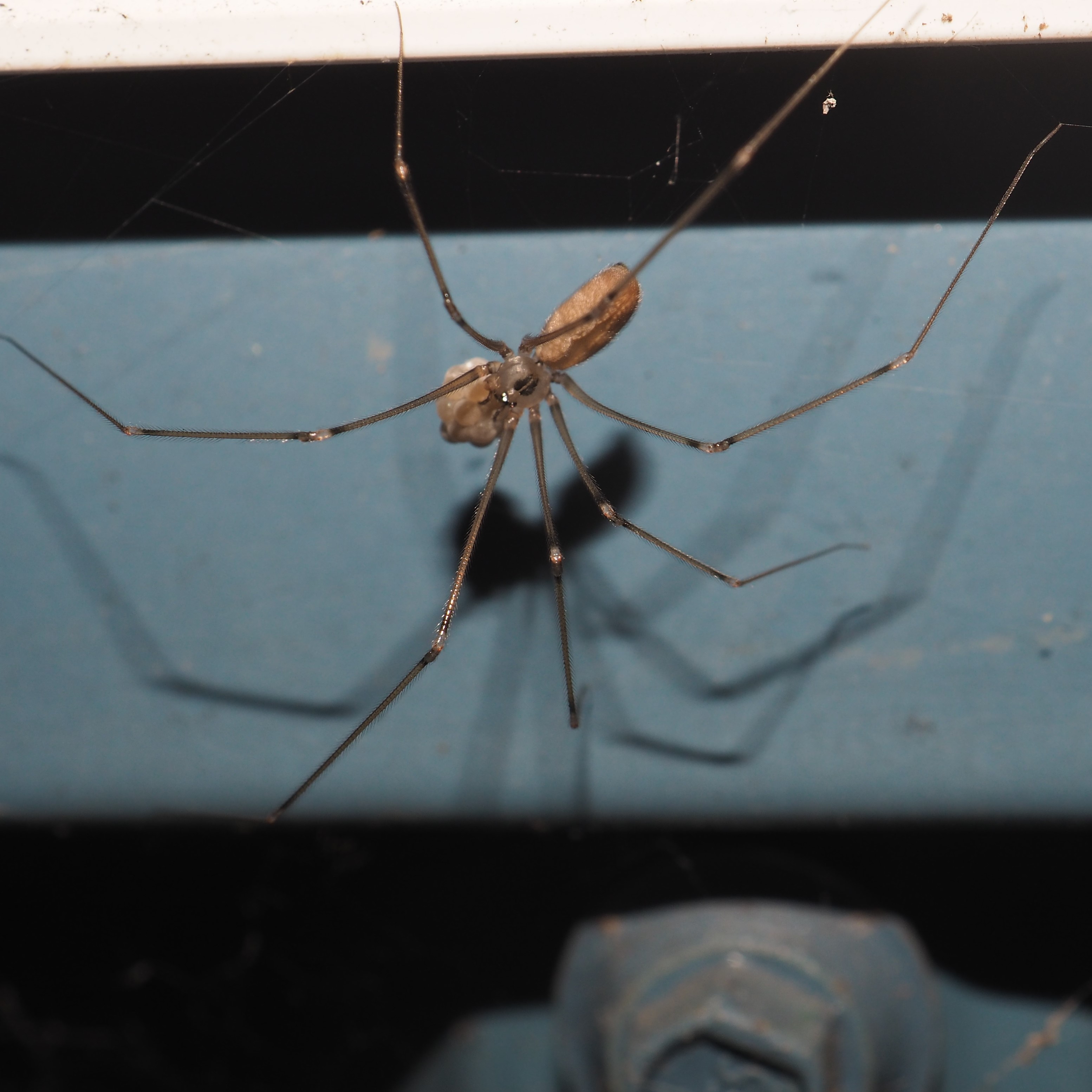
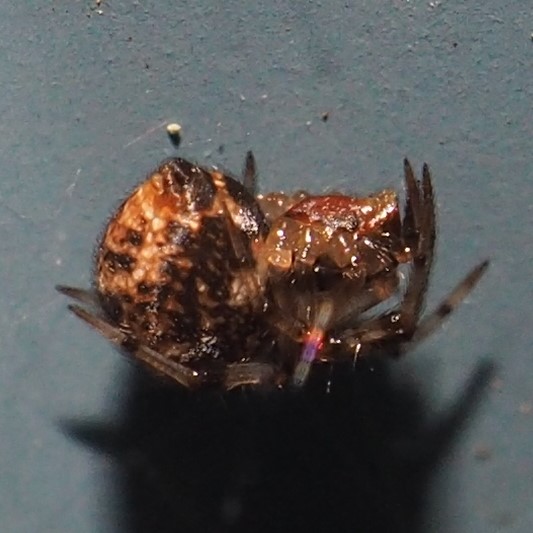
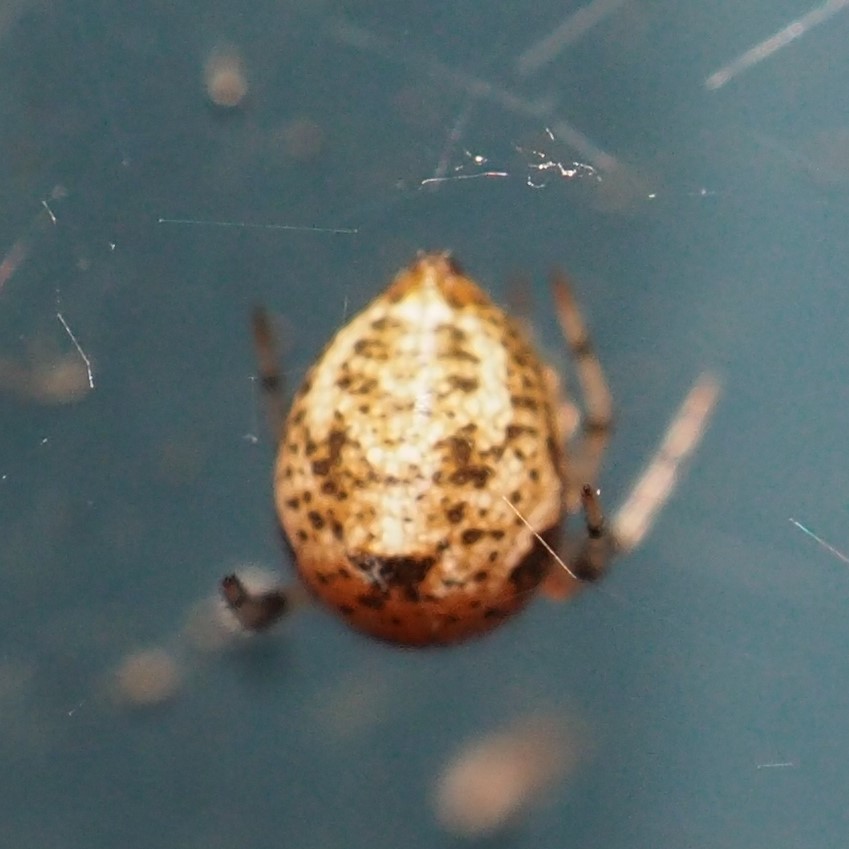
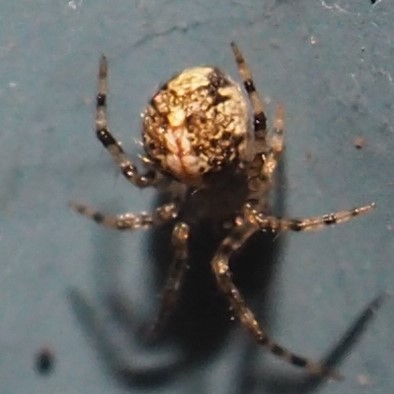
Here is a Grass Spider with its sharp tail section. The second one may also be a Grassie. At the bottom of picture 2 is also a miniature Aphid invisible to me when I was shooting the spider. Picture 3 is of my big favorite, the Pirate Spider Mimetus puritanus. And last is my Other big favorite, the jumping spider Naphrys pulex.
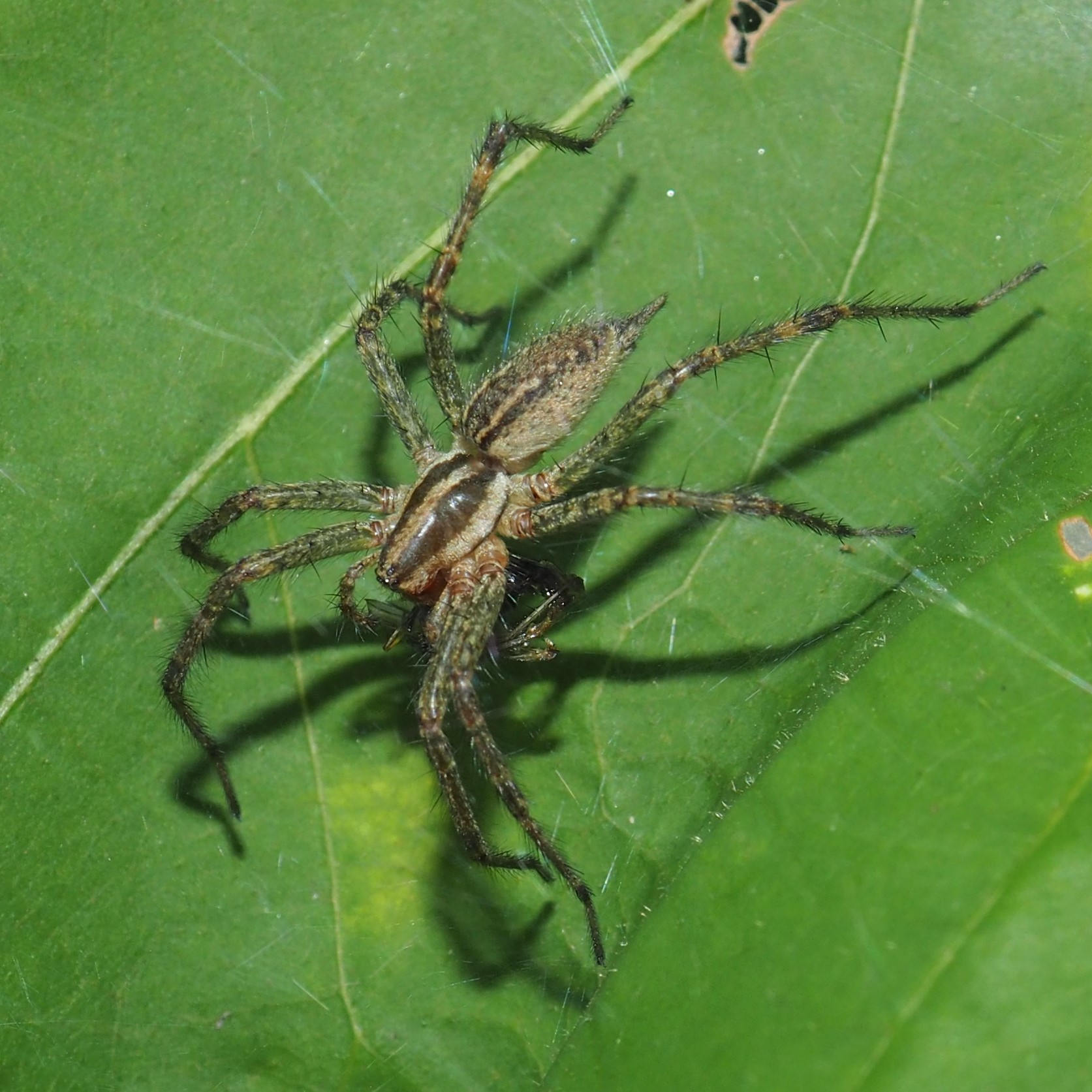
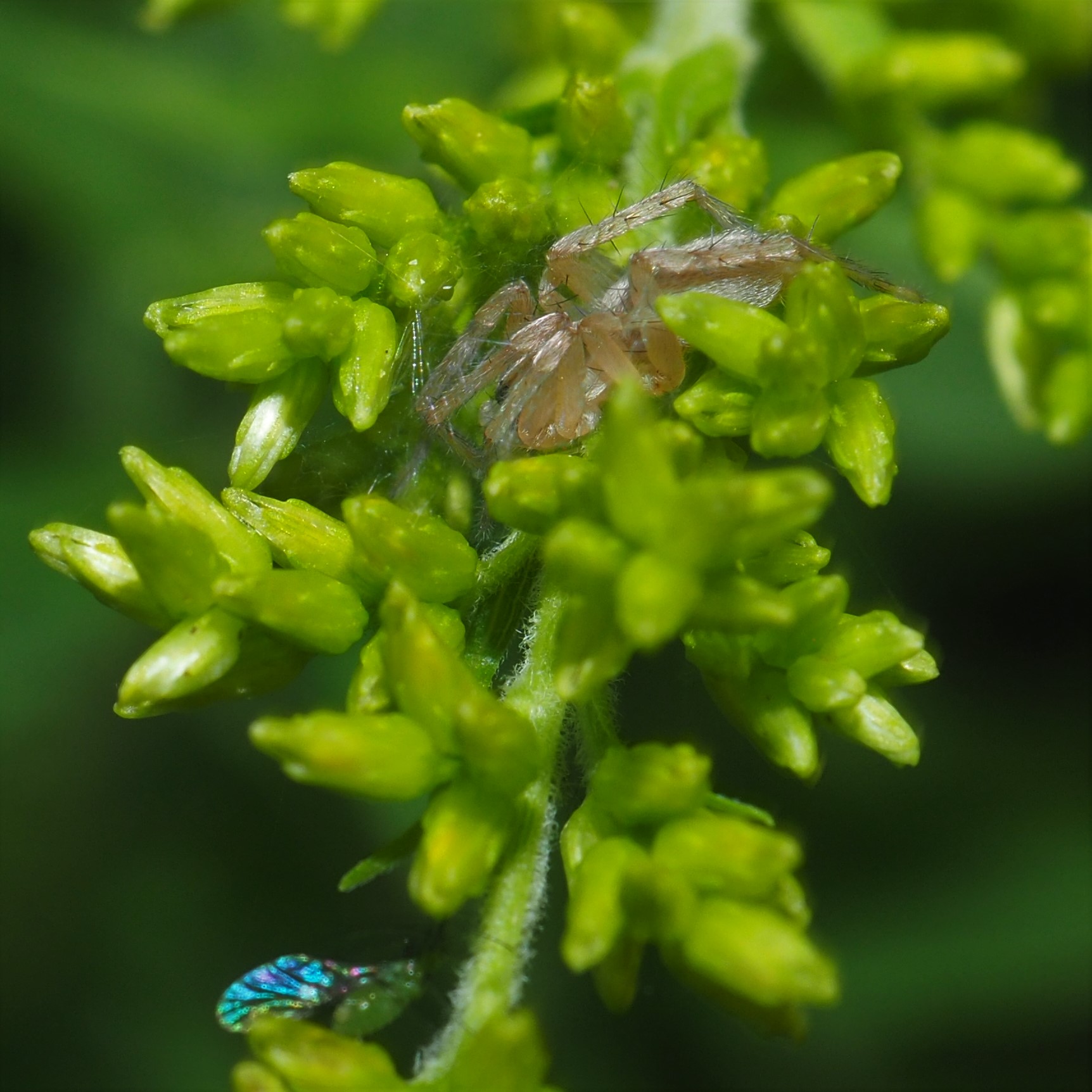
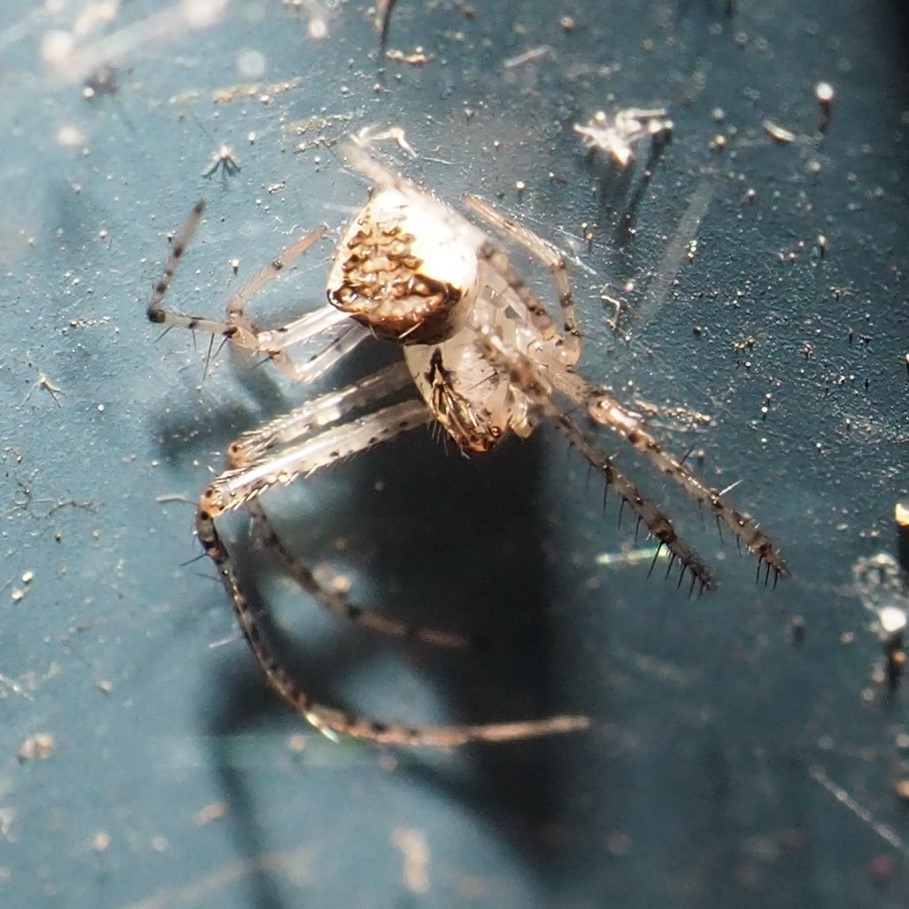
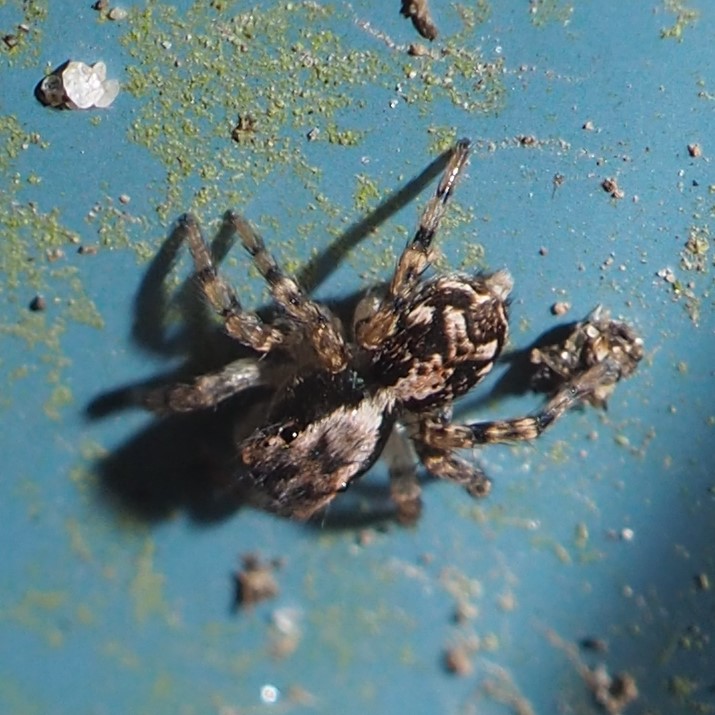
Little crab spiders were pretty easy to spot in some positions. For instance in the Autumn Joy Sedum, even with all those tiny buds, a flash of yellow might alert you that something even tinier was lying in wait. It was such a bright yellow that I wanted to call it a Goldenrod Crab Spider, but my friend Matt said it still looked more like genus Mecaphesa. I believed him when I got an angle that showed the markings that stand for Mecaphesa, as in image 2. In the last picture, our little crabber is backing down under the buds.

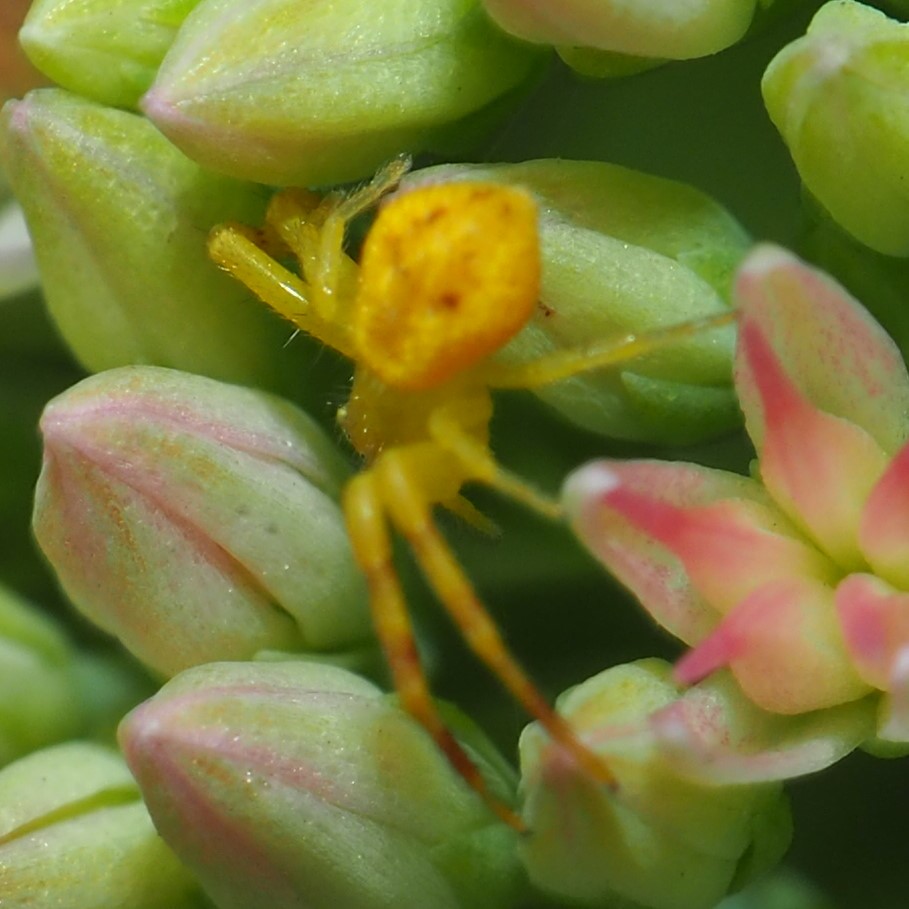
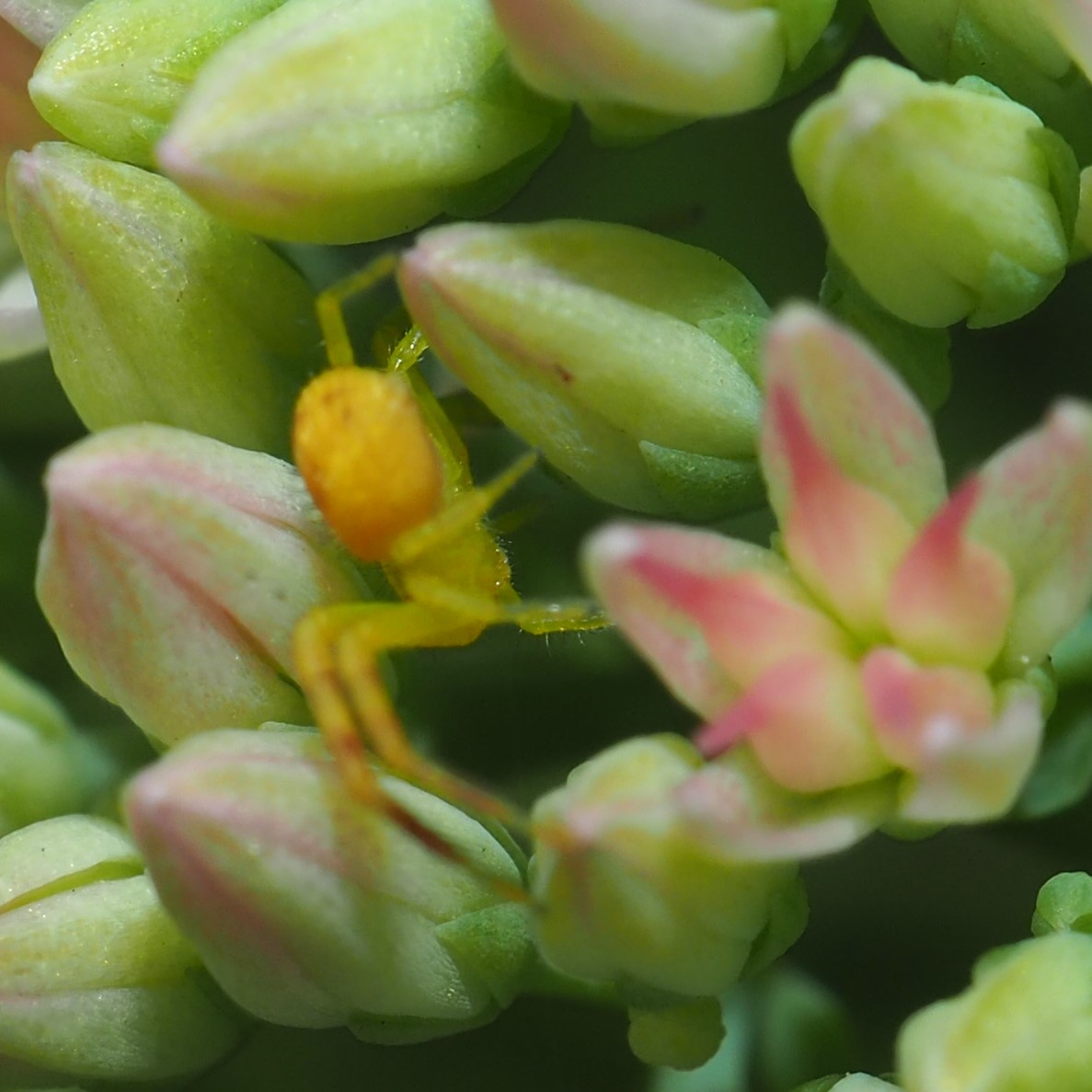
Let's turn to the wasps and maybe some bees that I didn't recognize as bees up at the top of this blog.. The goldenrod really brings these things out of the woodwork. First, here are some very small wasps. Number 1 is of genus Cerceris. So is number 2, but it is Cerceris insolita. Can you tell the difference? Next is another genus, Ectemnius.
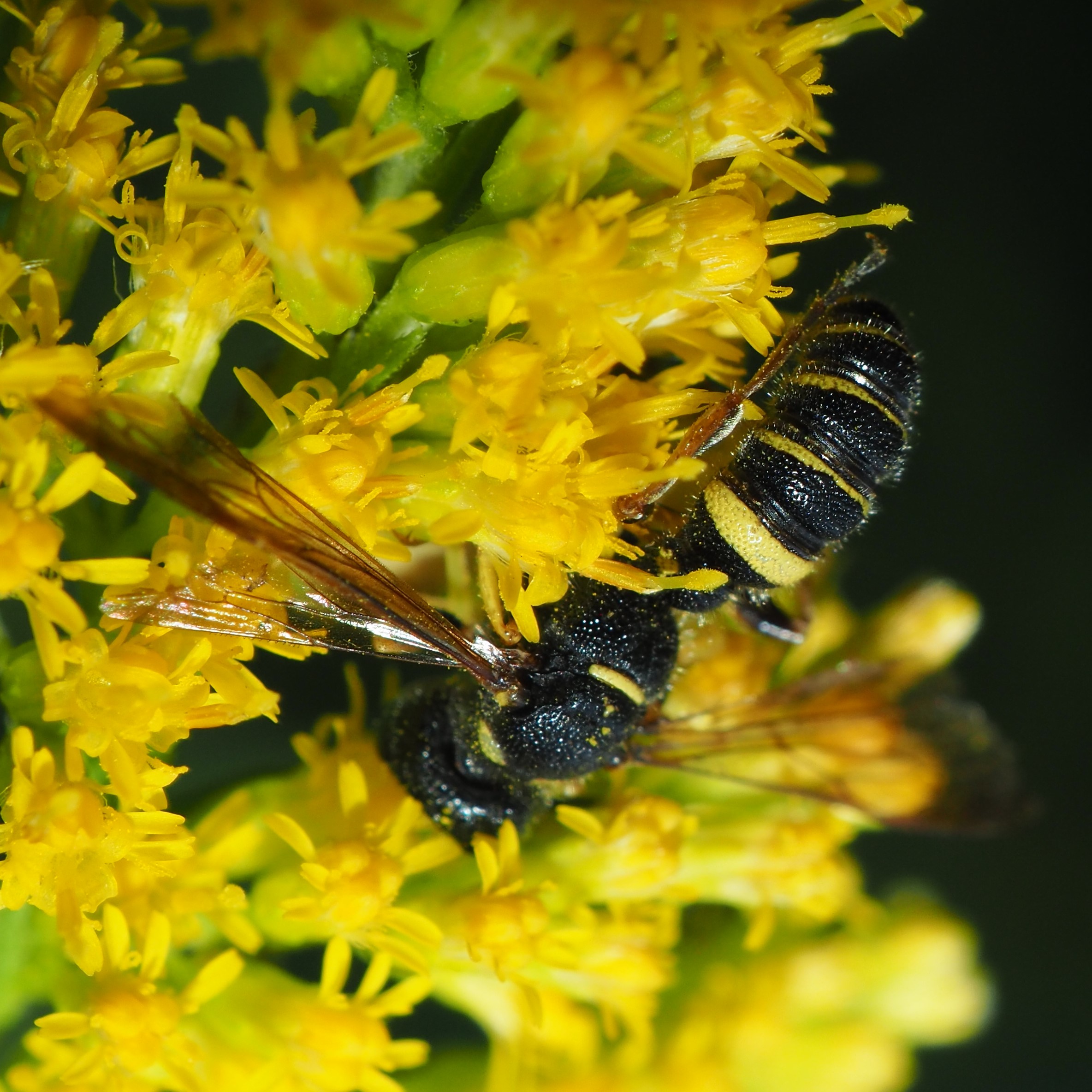
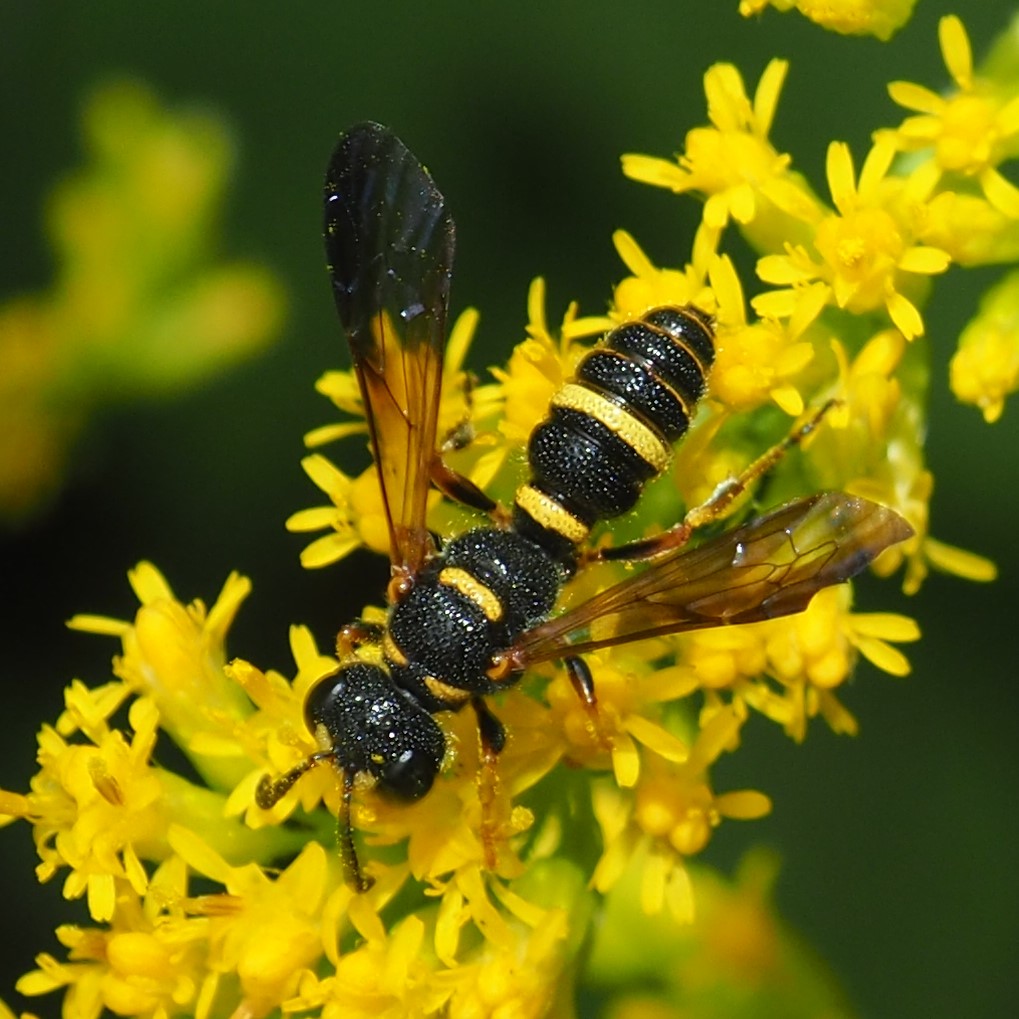

There are also a lot of small wasps with "thread-waists". Many of them look almost alike to me, so I'll just show you a few.
This first one is called a Potter wasp because it lays its eggs in a little clay pot. Really! The second is one of many called "grass-carrying" wasps. Number 3 is different from number 2 since it is so hairy! My favorite this time is this last beautiful glossy-black "grass-carrying" wasp.
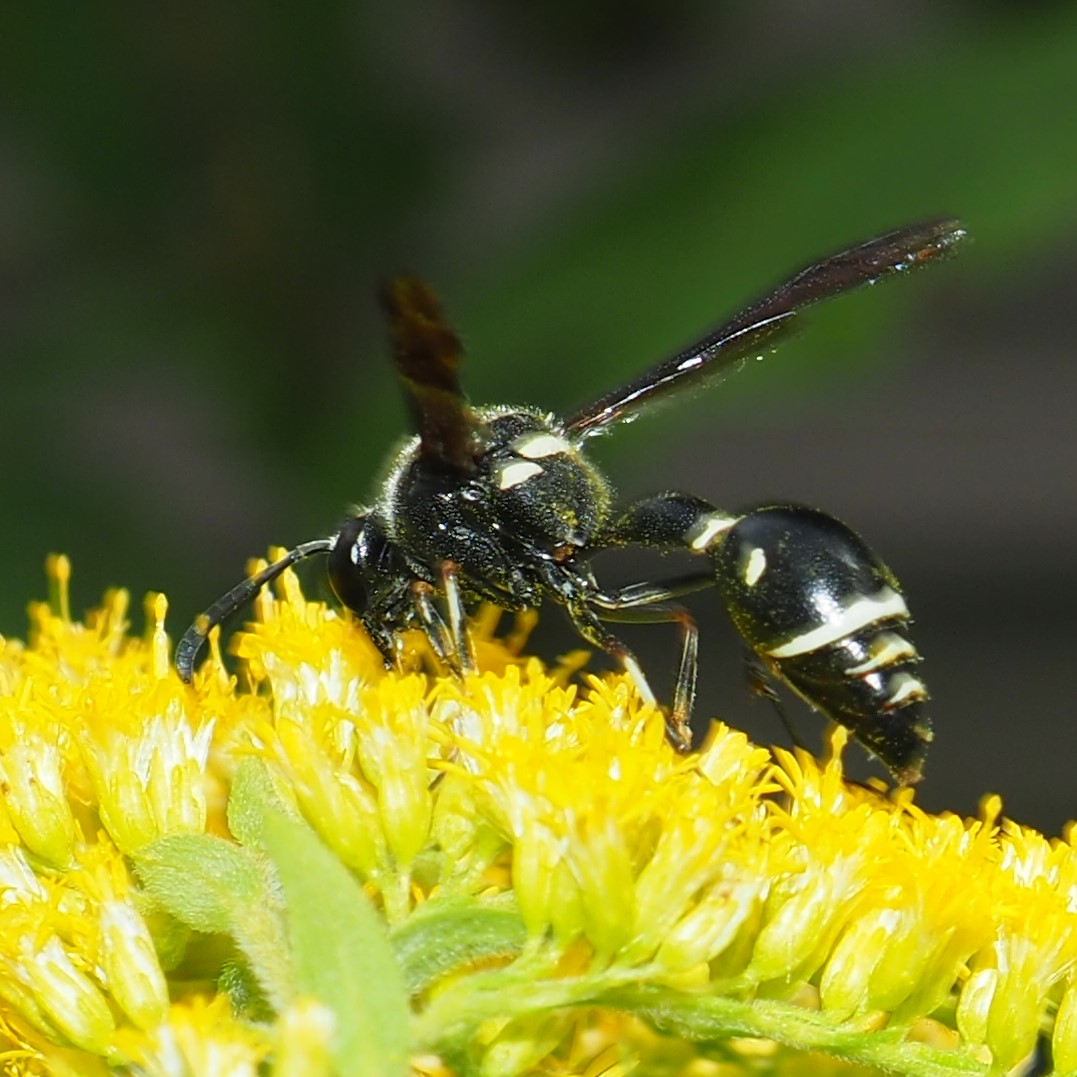

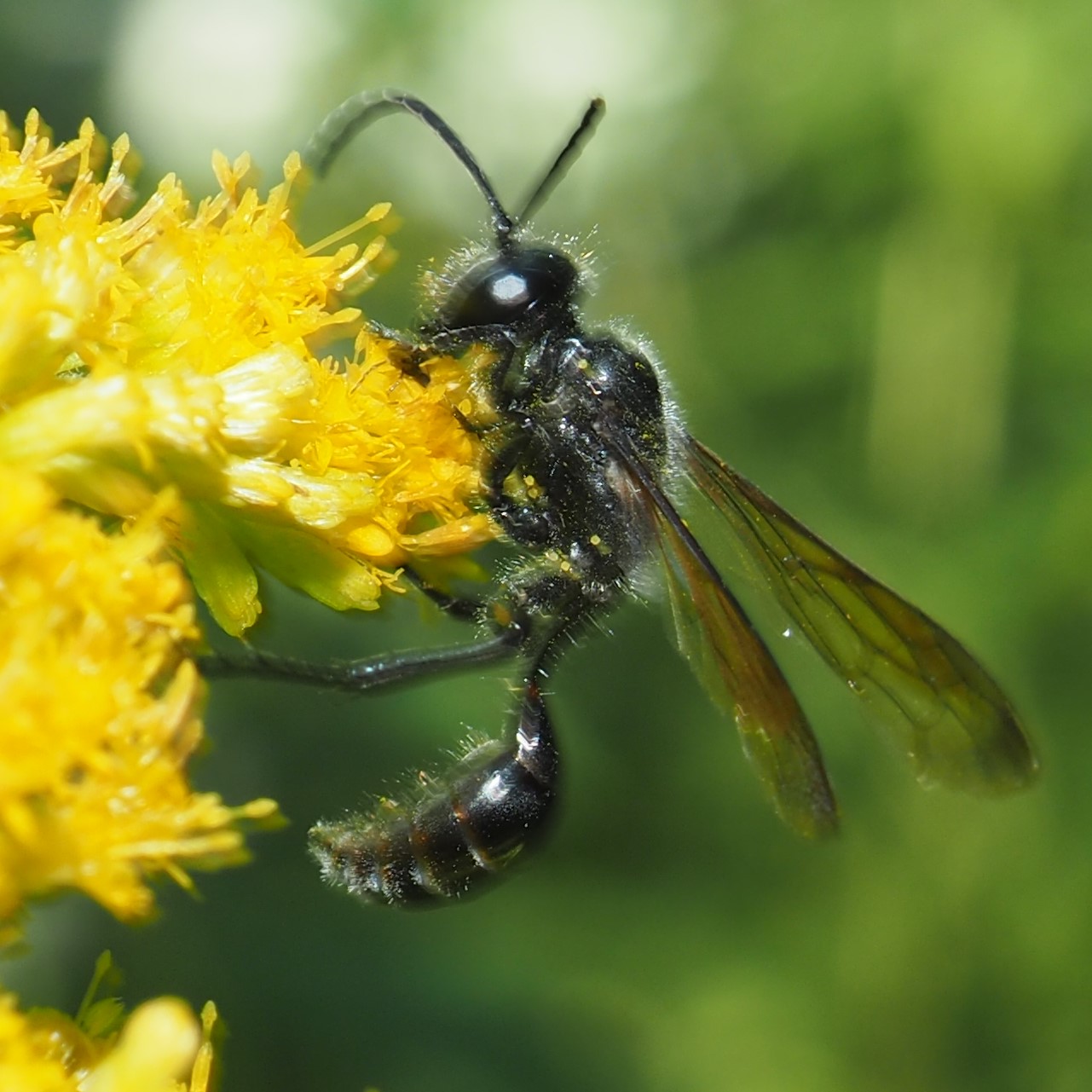
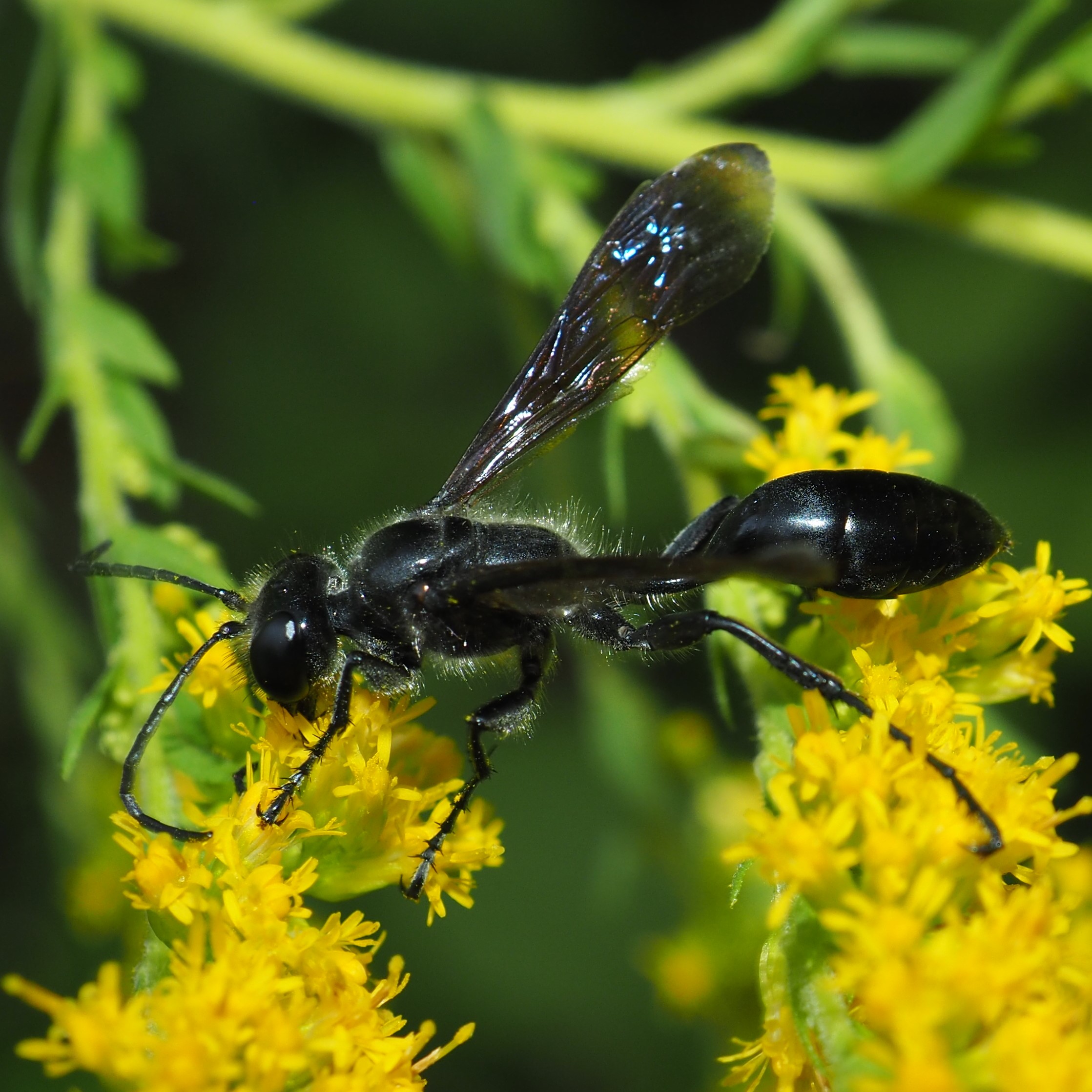
Here are some Paper Wasps, the Dark species to be exact. You can tell this one (numbers 1 and 2) is a male because it has a yellow shield on its face and it antennae are slightly curled at the ends. I haven't seen many males yet this year. Third is a female. Number 4 is also a female but is very small. I'm not sure why. By the way, you can also distinguish males from females because males have abdomens with 7 segments; females have only 6.
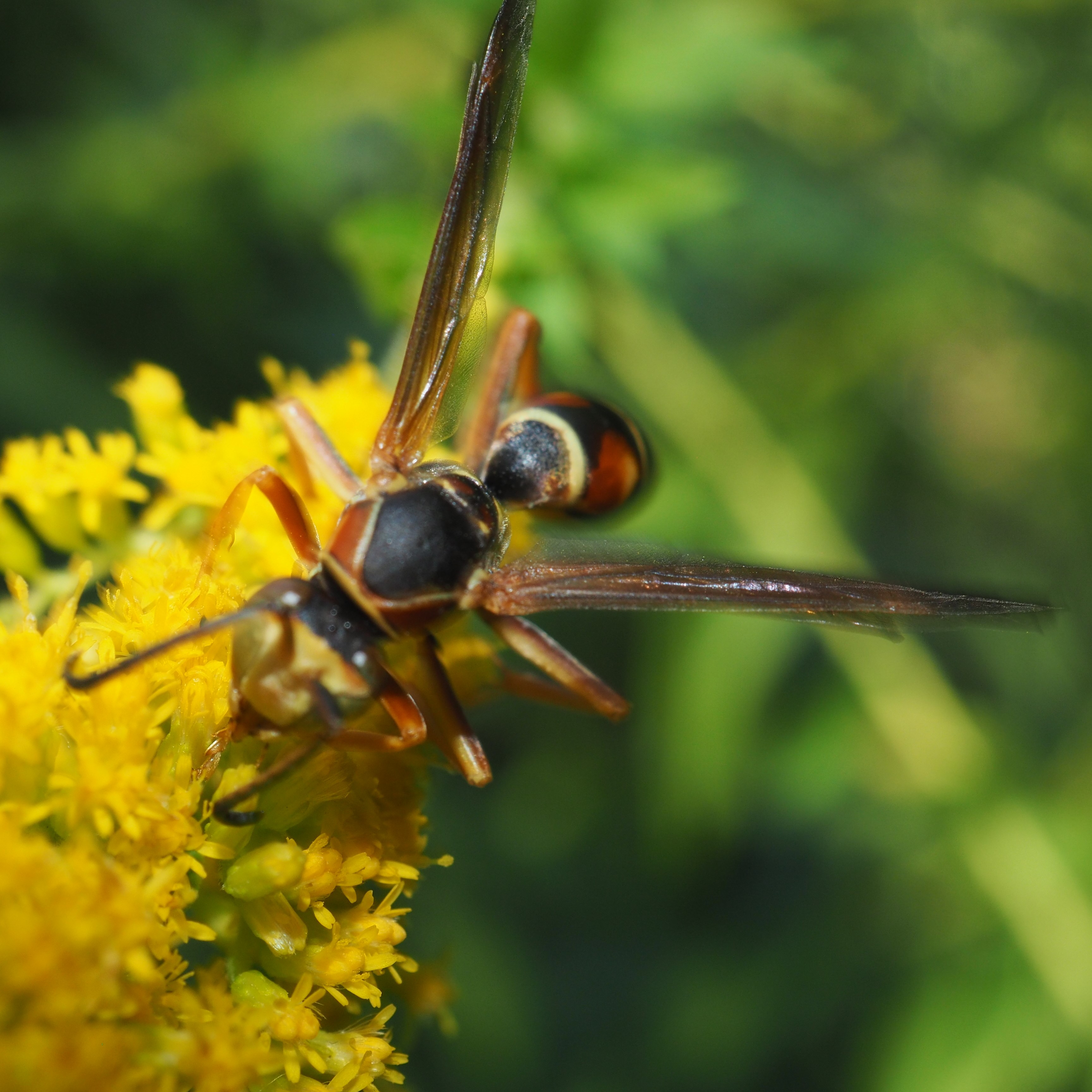
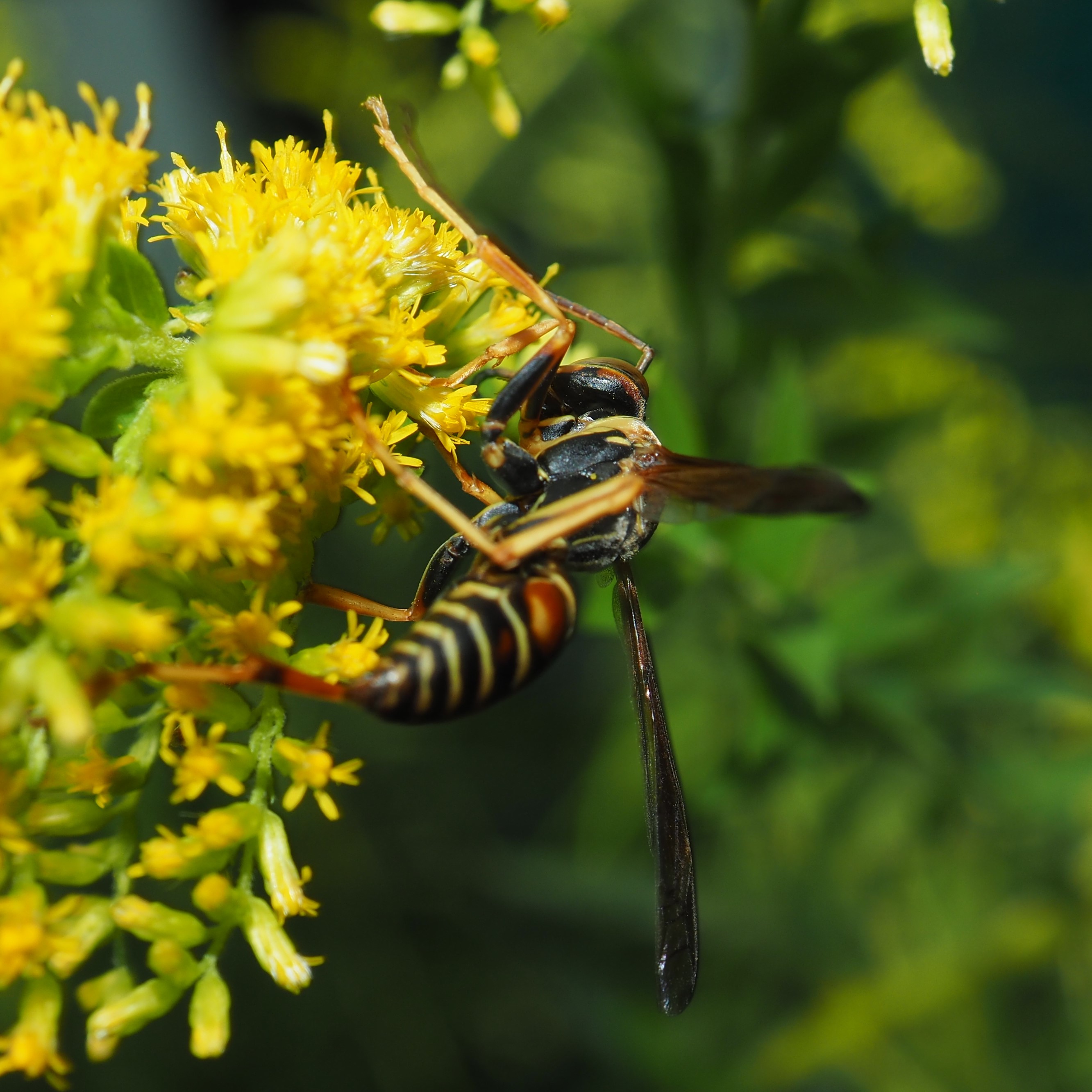
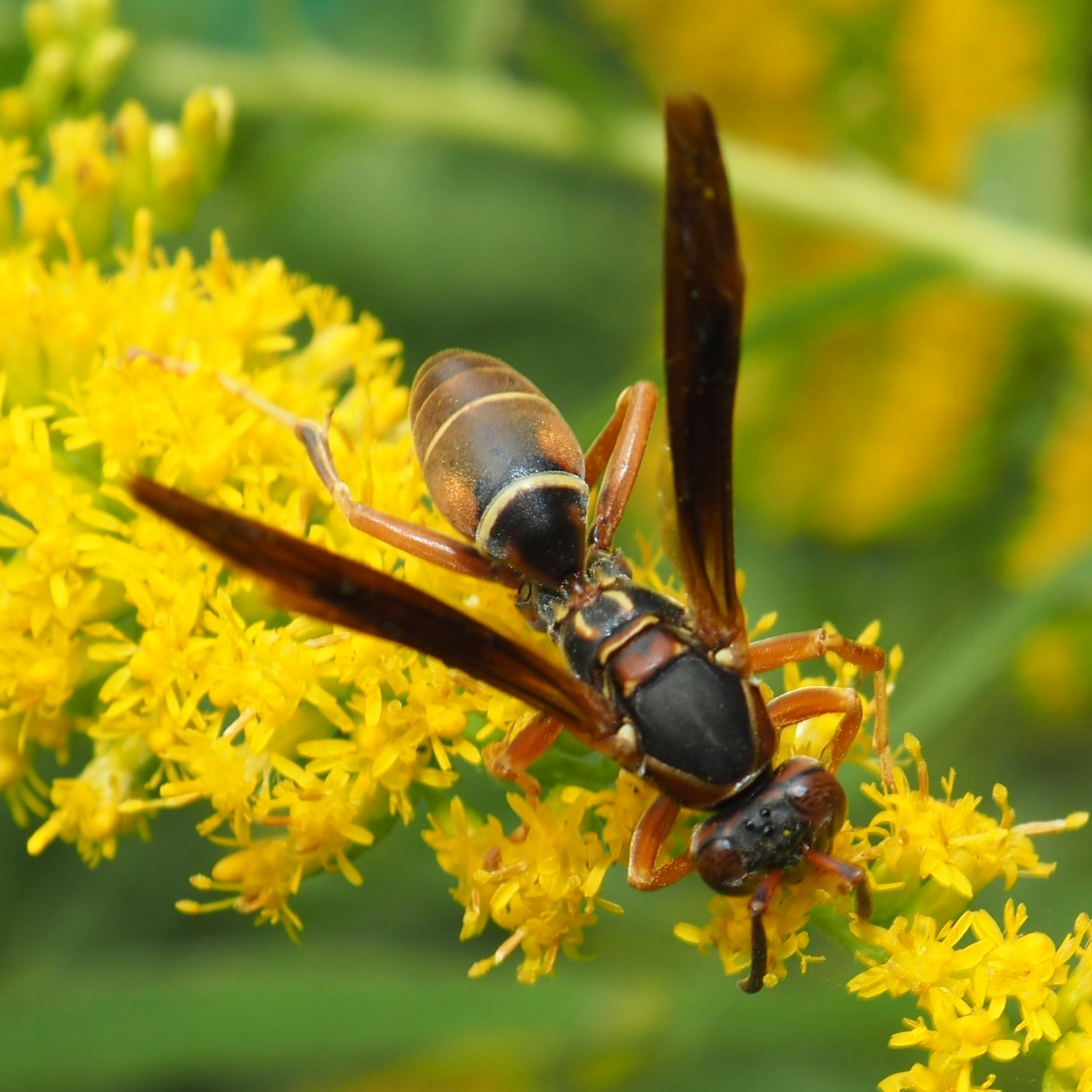
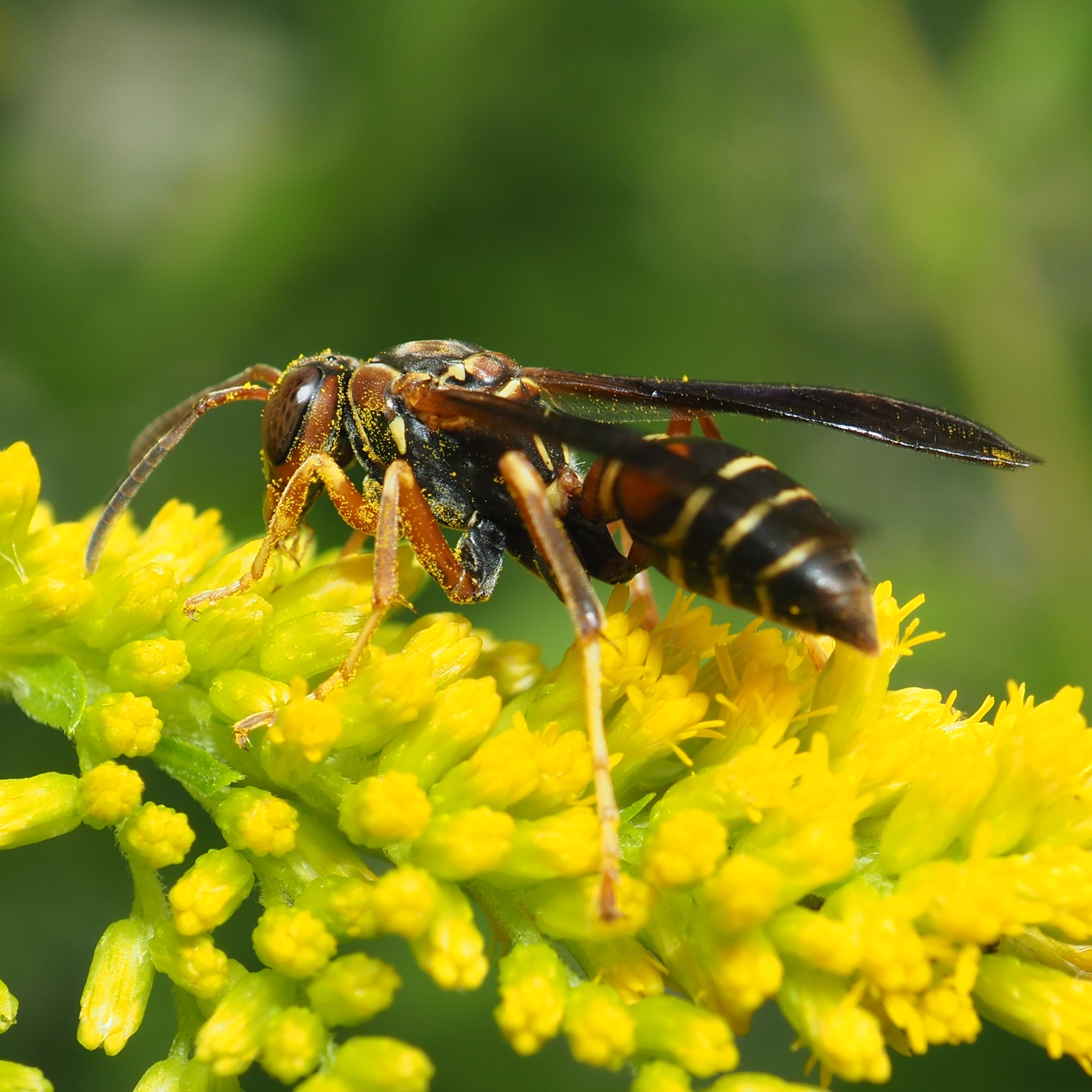
This year is a real exception as far as spotting Bald-faced Hornets, Dolichovespula maculata. As luck would have it, an oak sapling right next to the rail from the deck to the shop. I noticed one day that a BFH was flying in and out of that sapling and saw that the sapling had some large Oak Galls. The Hornet seemed to love something about the galls. Well, after removing two leaves I had the best spot ever from which to observe the Galls and their Hornets. Even better, on Friday there were TWO hornets at the counter.
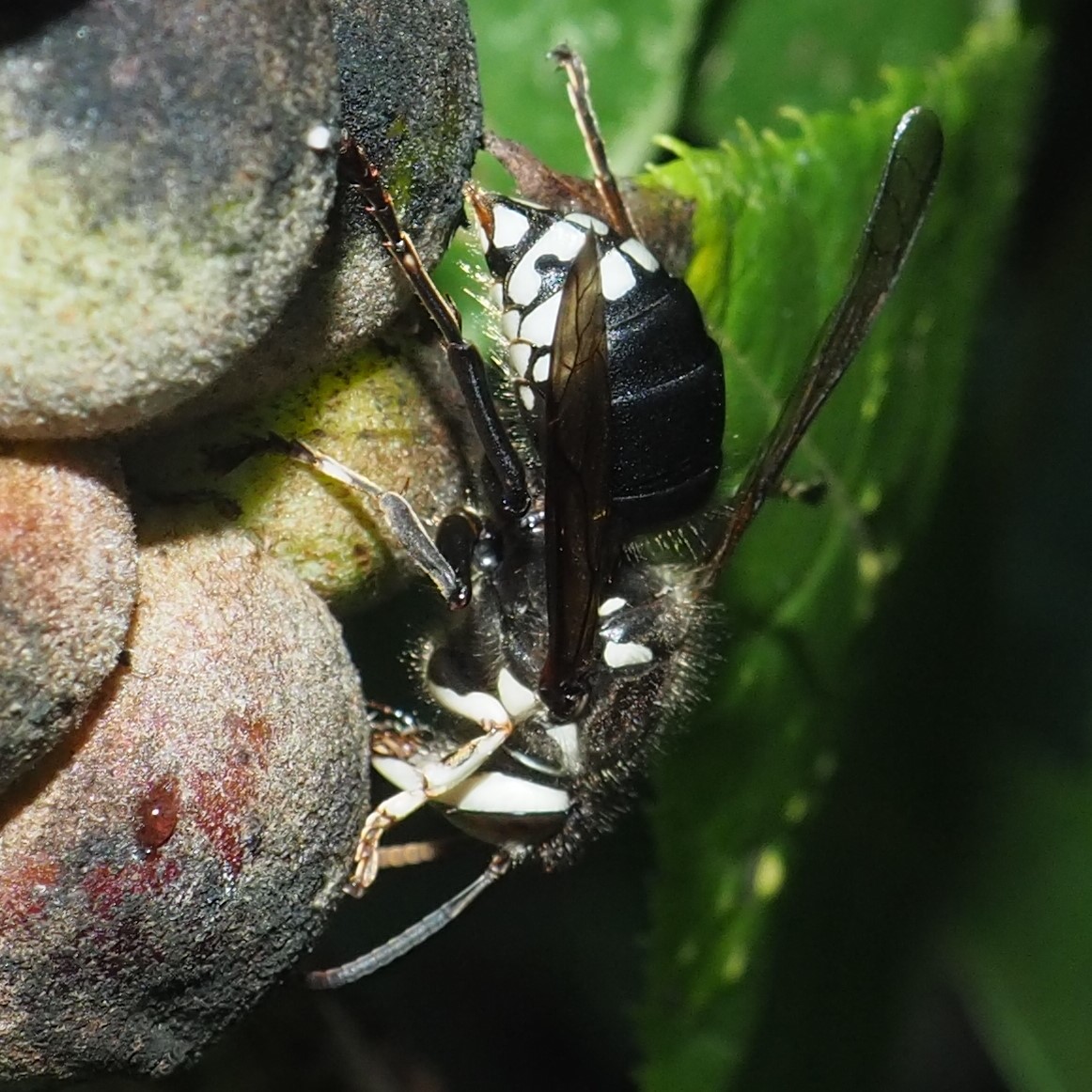
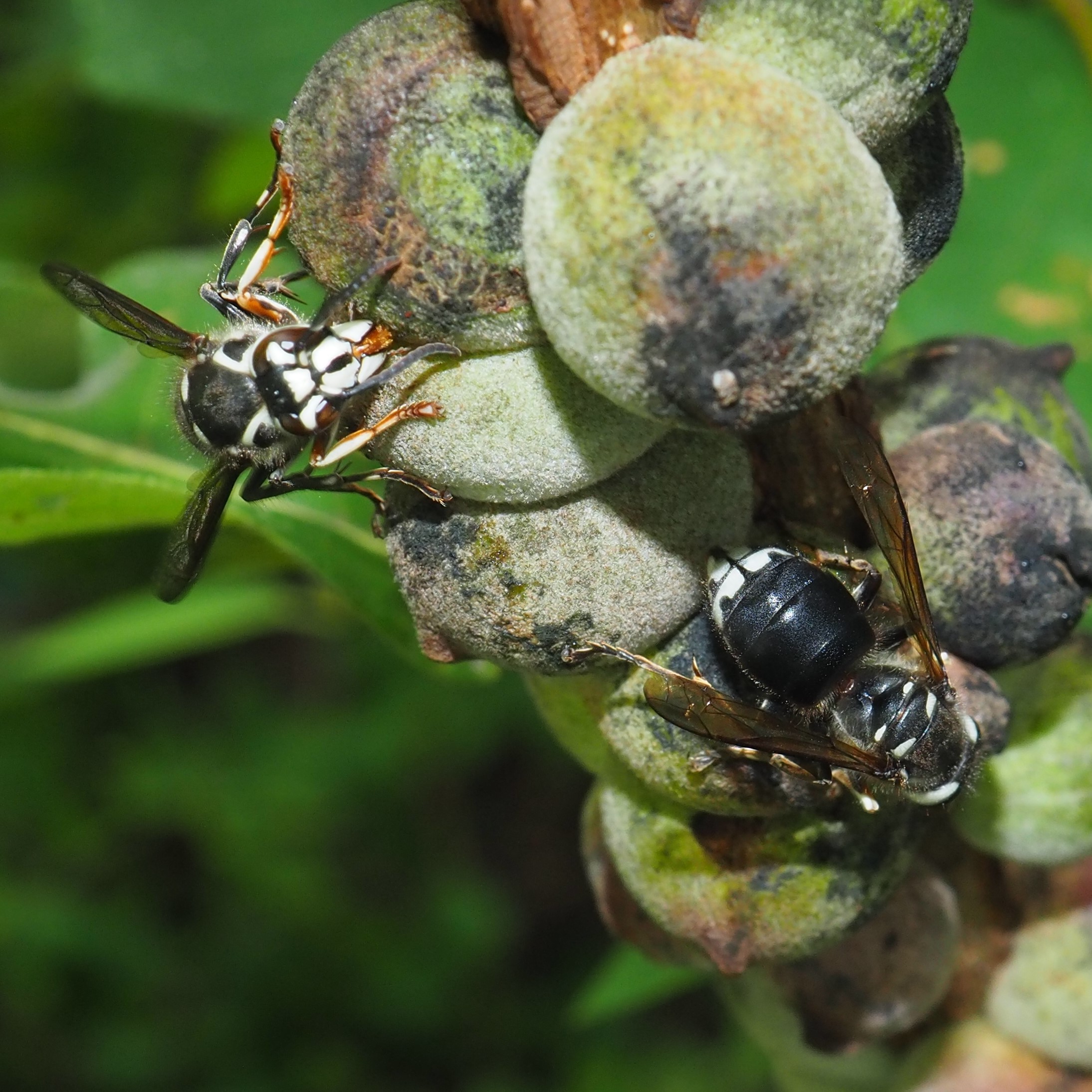
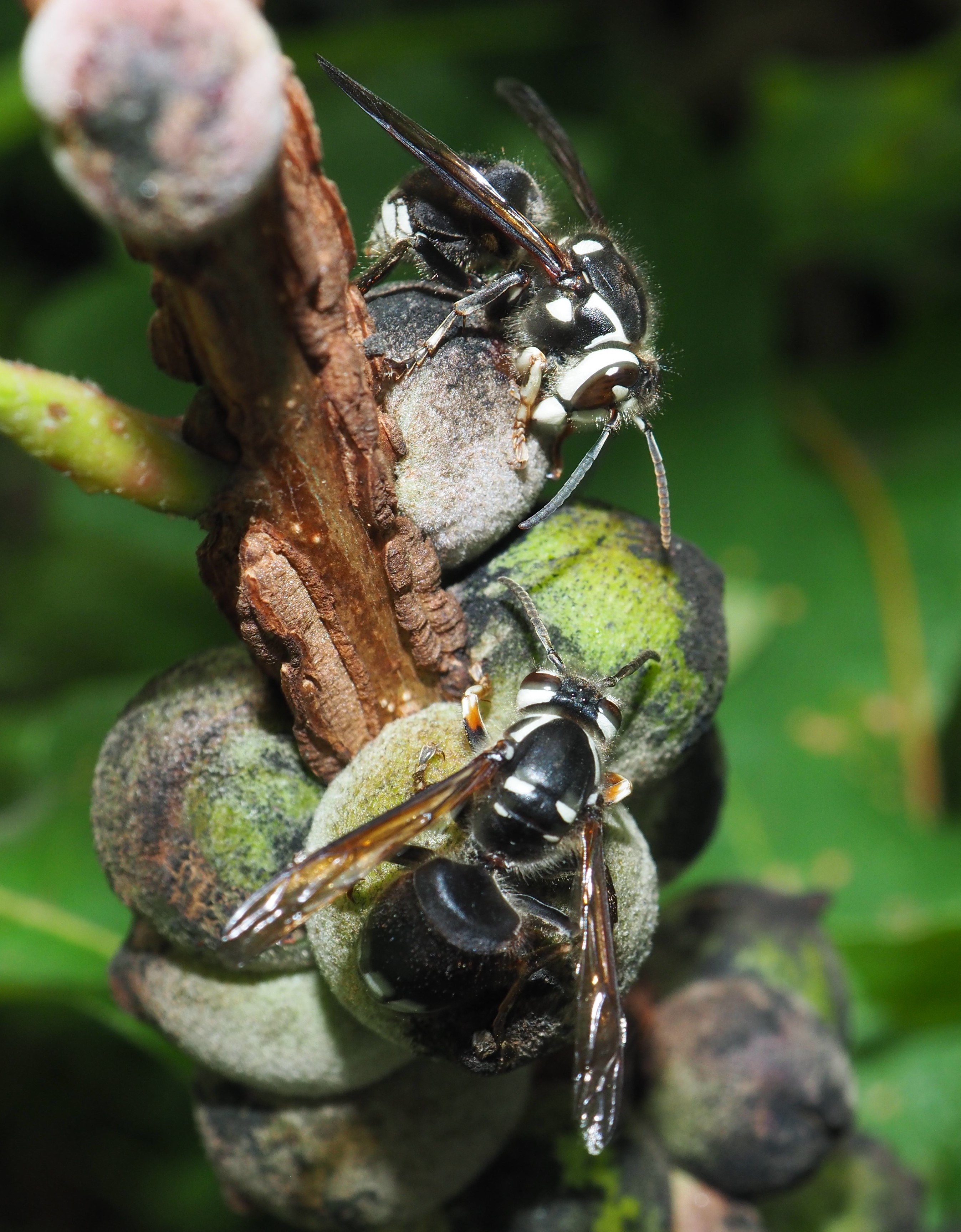
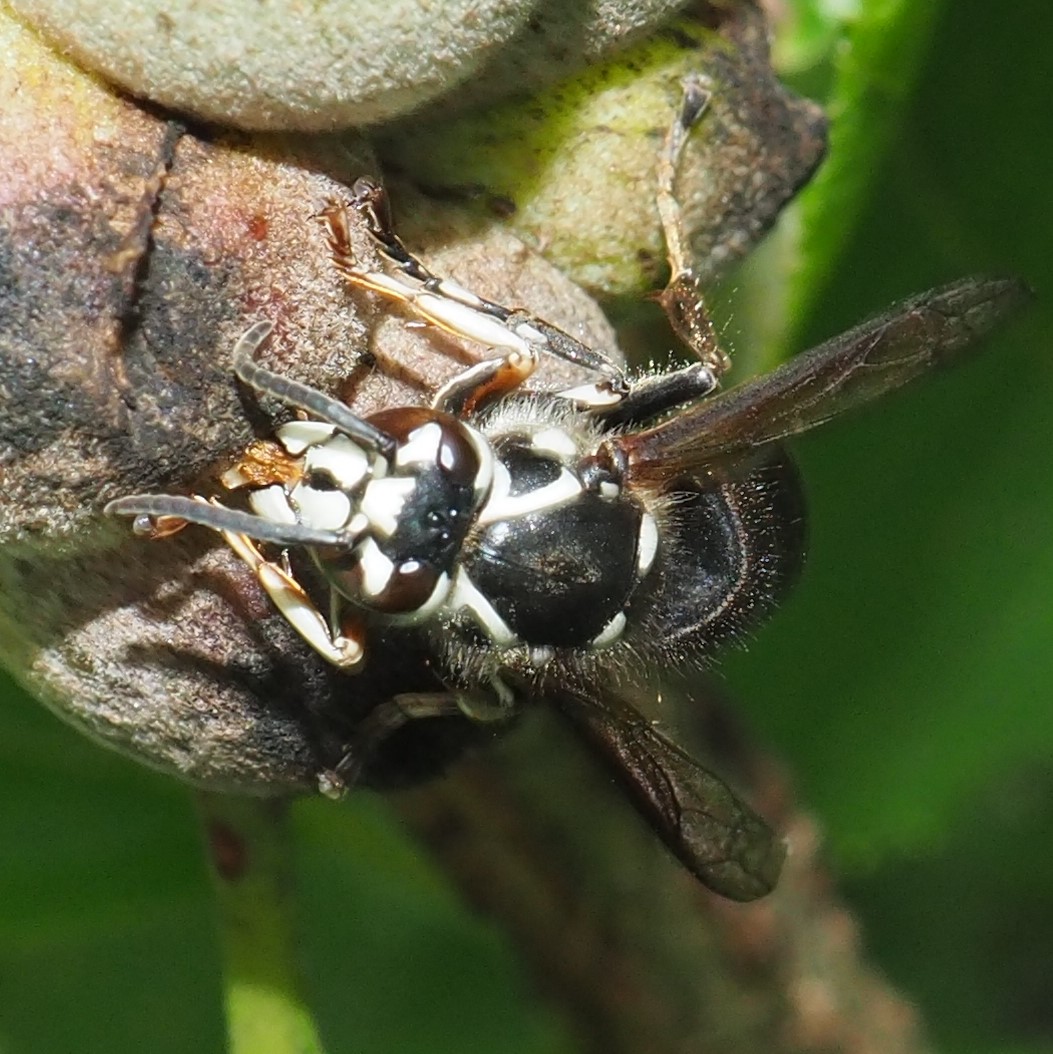
This photo fooled me. I thought at first it was another Ichneumonid Wasp, but then noticed its long body and wings and decided it was a Mayfly that had just emerged from the spent skin to its left! But the second creature really IS an Ichneumonid Wasp.
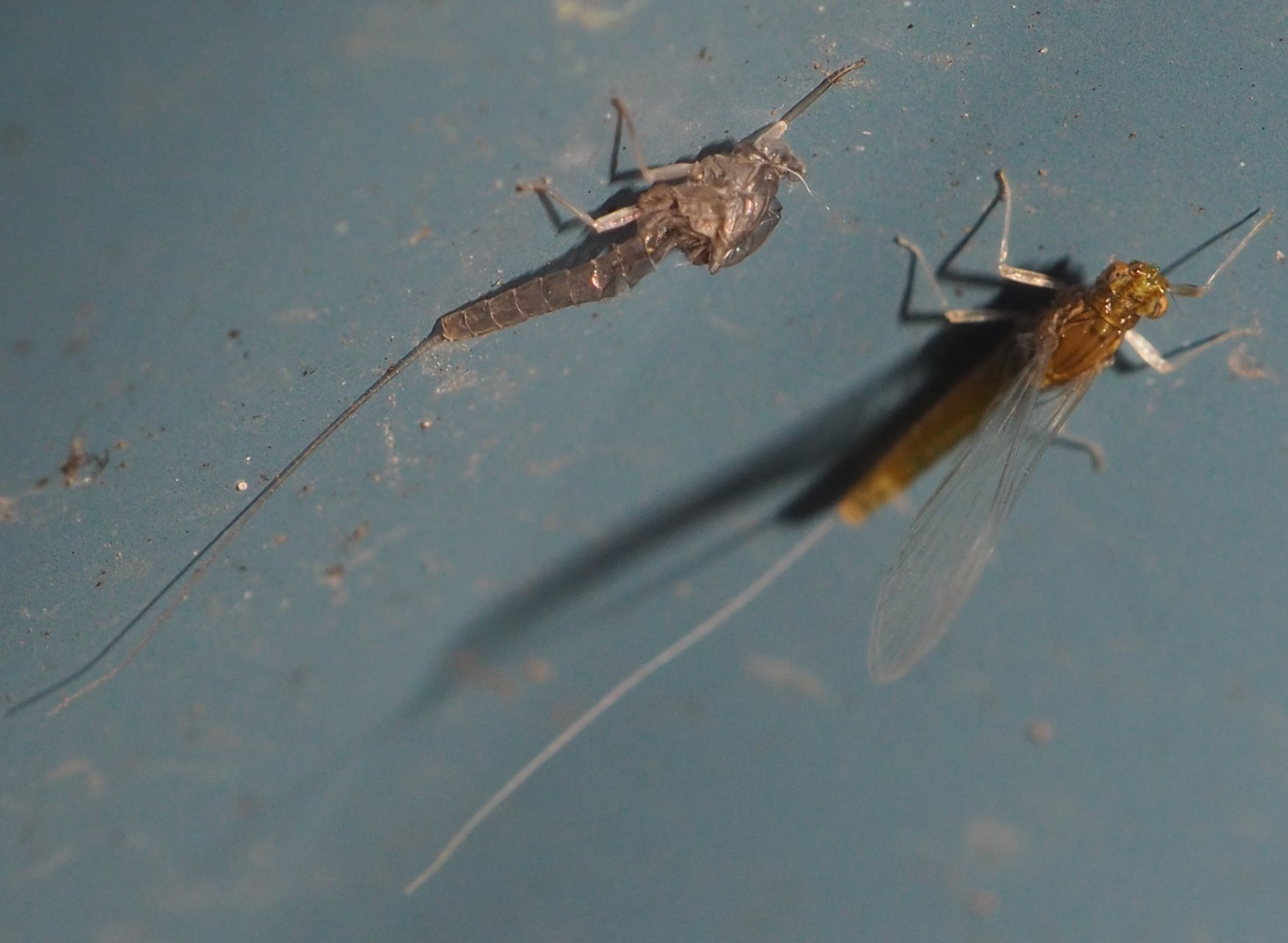
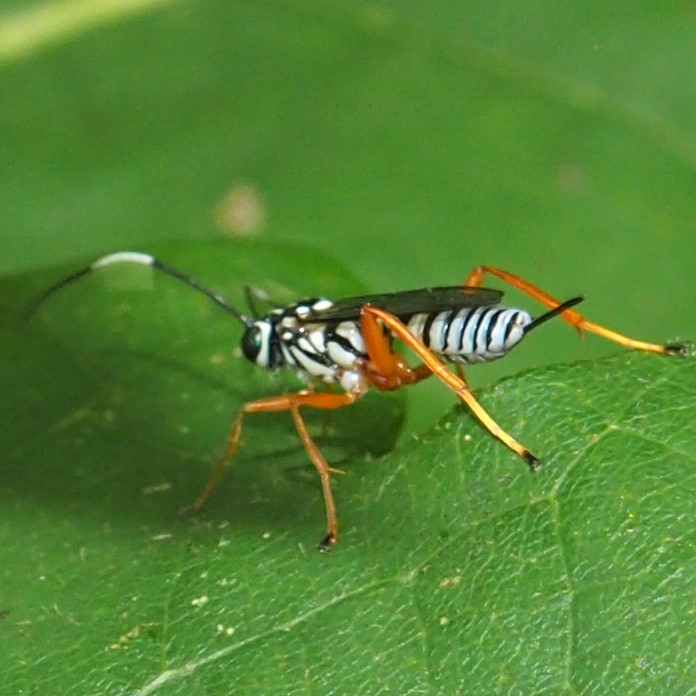
Let's spend the last few minutes admiring the Water Lilies. This summer we have had four different kinds blooming: the old large pink one, the magenta one, the greenish-yellow one and a very small two-tone pink lily. I haven't seen all of them blooming at the same time, but it's nice to suddenly see one you'd forgotten you used to have. Here is Froggy and the pink one. Next is the tiny two-tone one and the magenta blooming not far from one another. Last is the yellowish one.
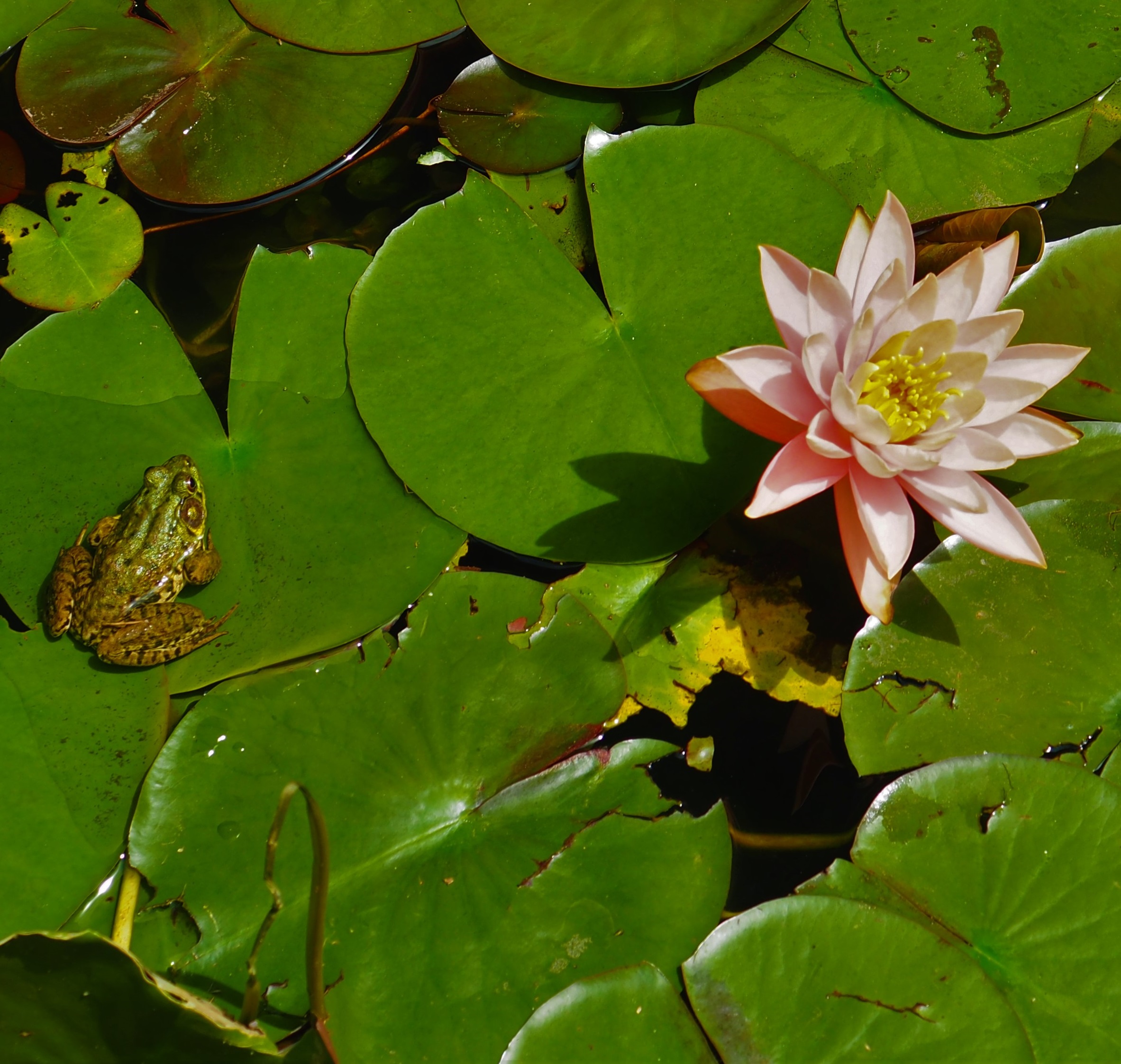
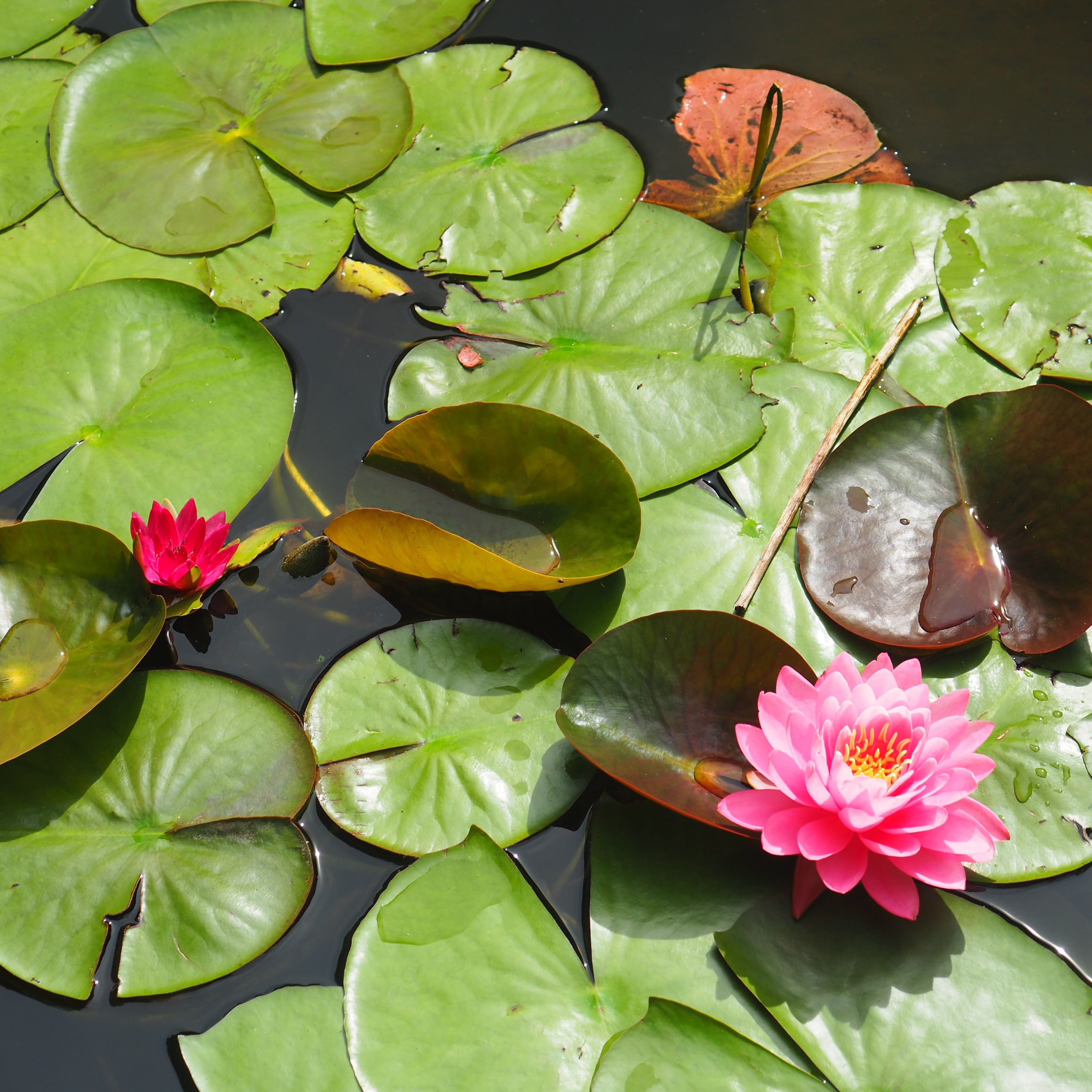
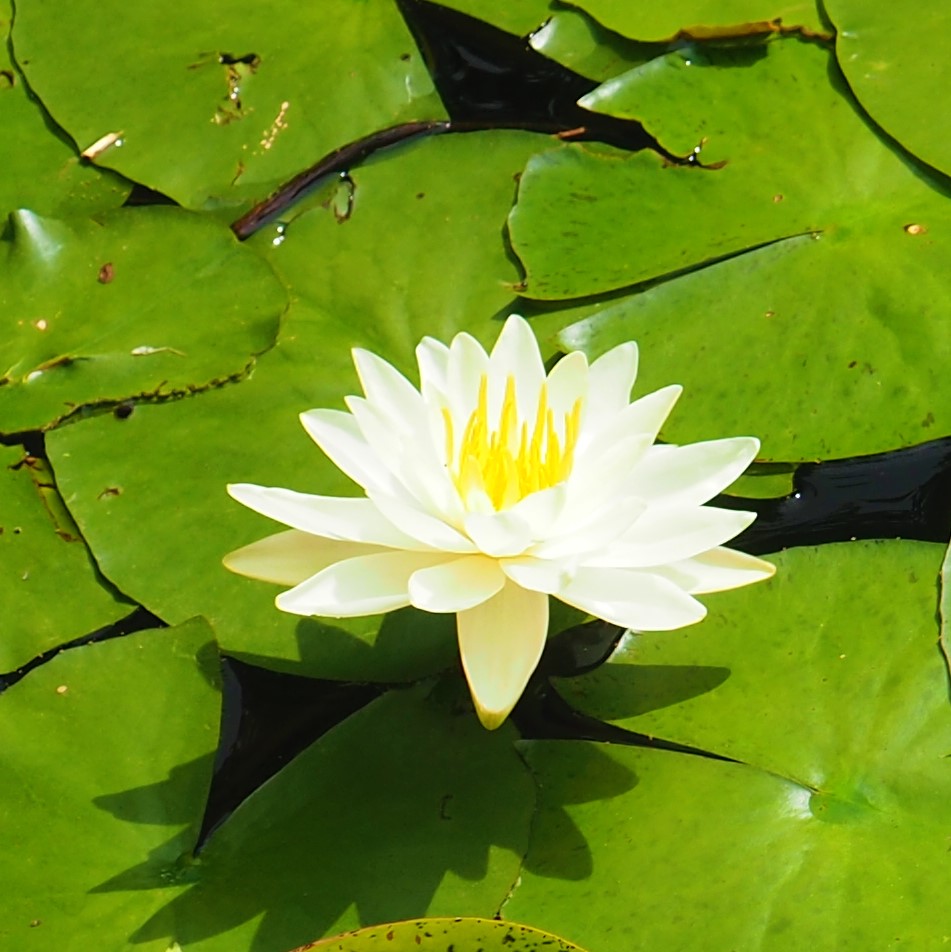
Maybe you'd like to see some more of that color-morphing, this time with a spray of Trumpetvine.
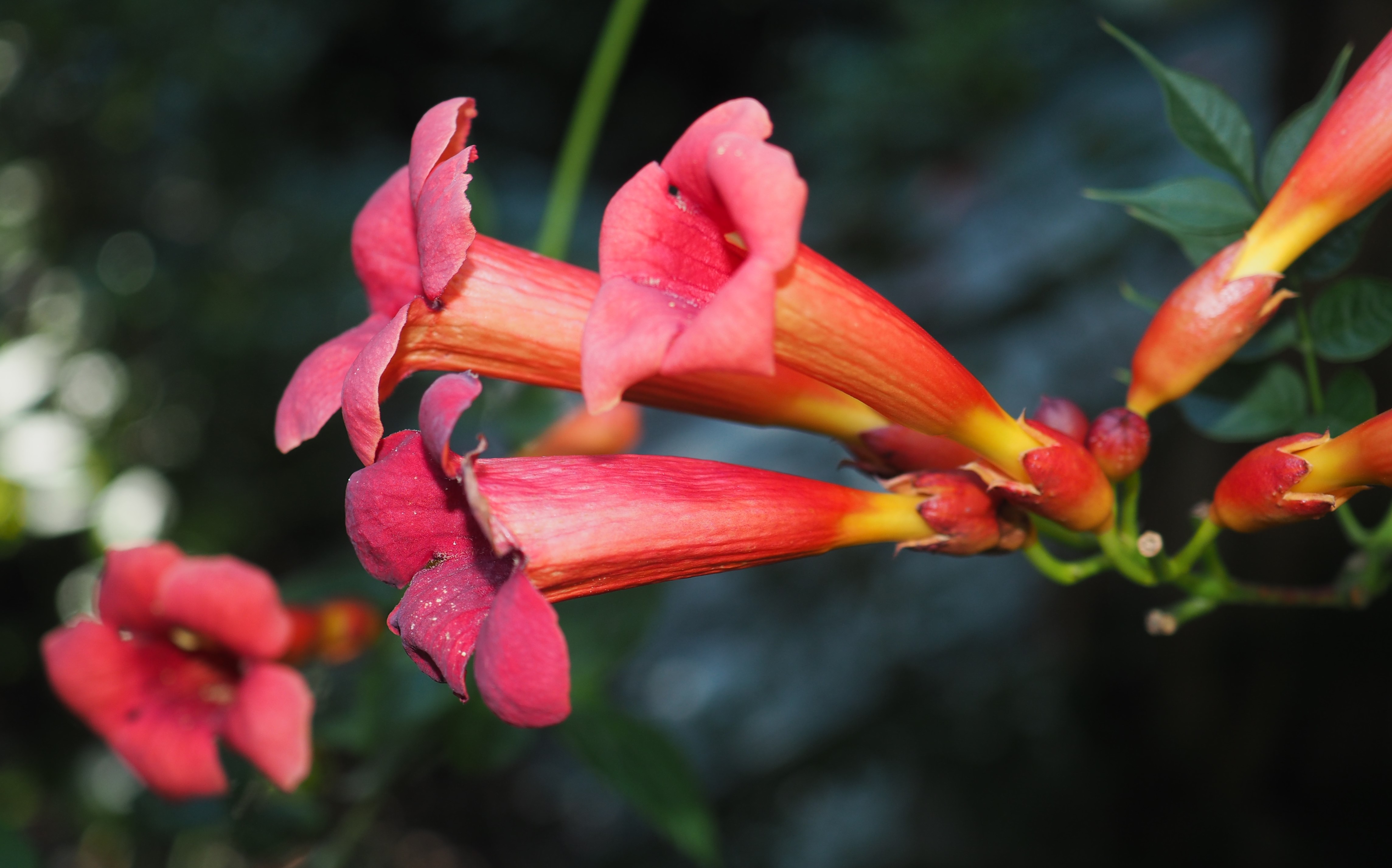
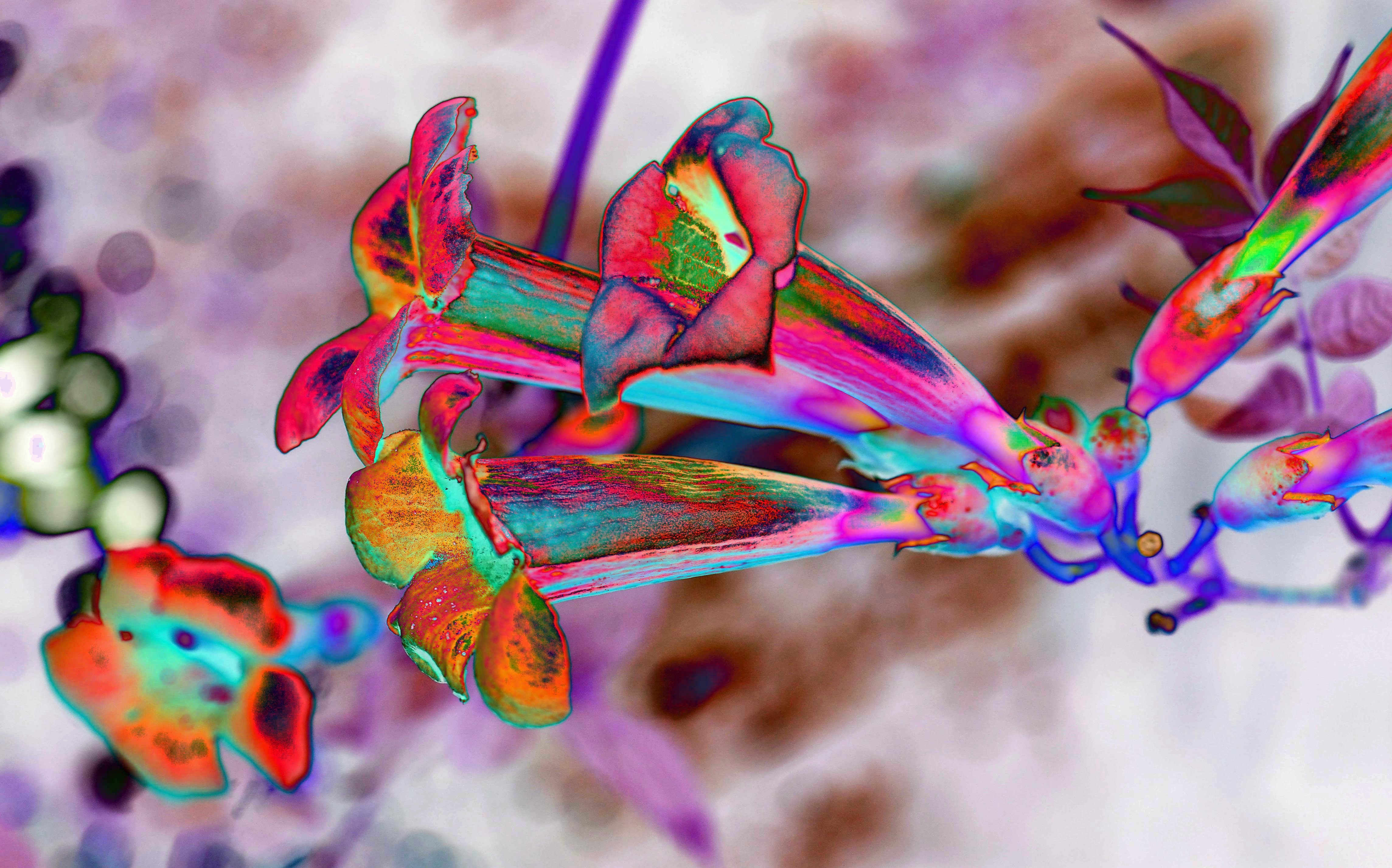
The long hot summer seems to be falling asleep gently here, though at other parts of this hemisphere the fall hurricanes are attacking the coasts. I hope all is well where you are, and that soon we will start taking better care of our planet. It is too precious to waste.
Love, Martha
Back to August 25, 2019
Forward to September 8, 2019
Back to main menu
copyright Martha O'Kennon 2019















































































































